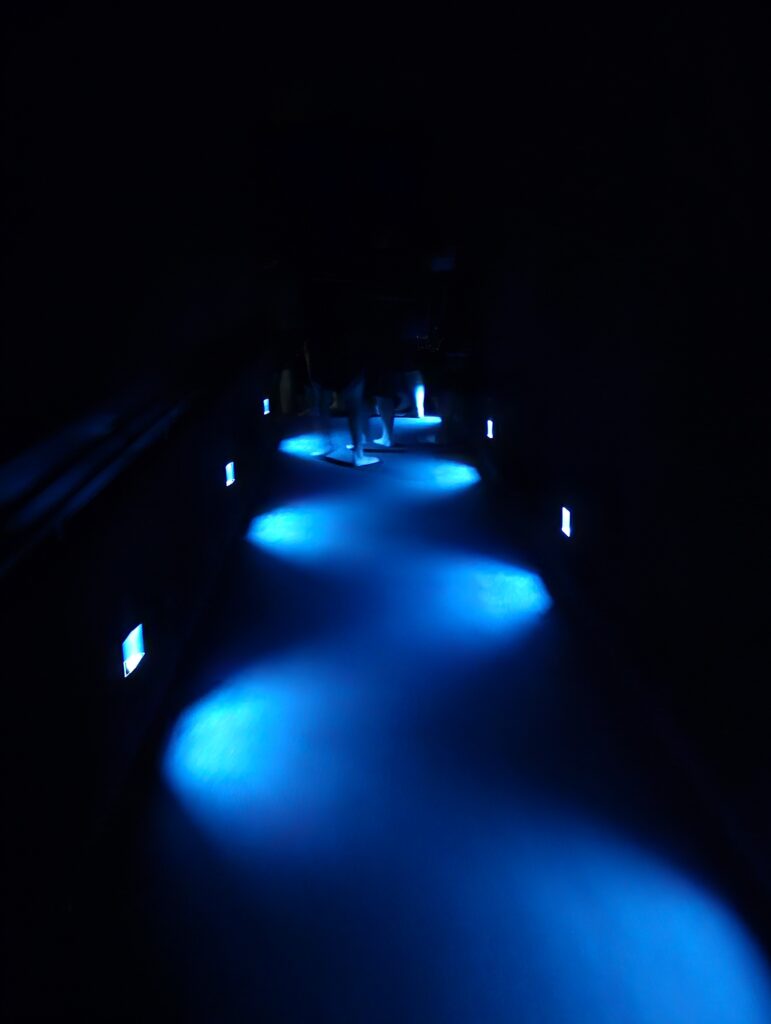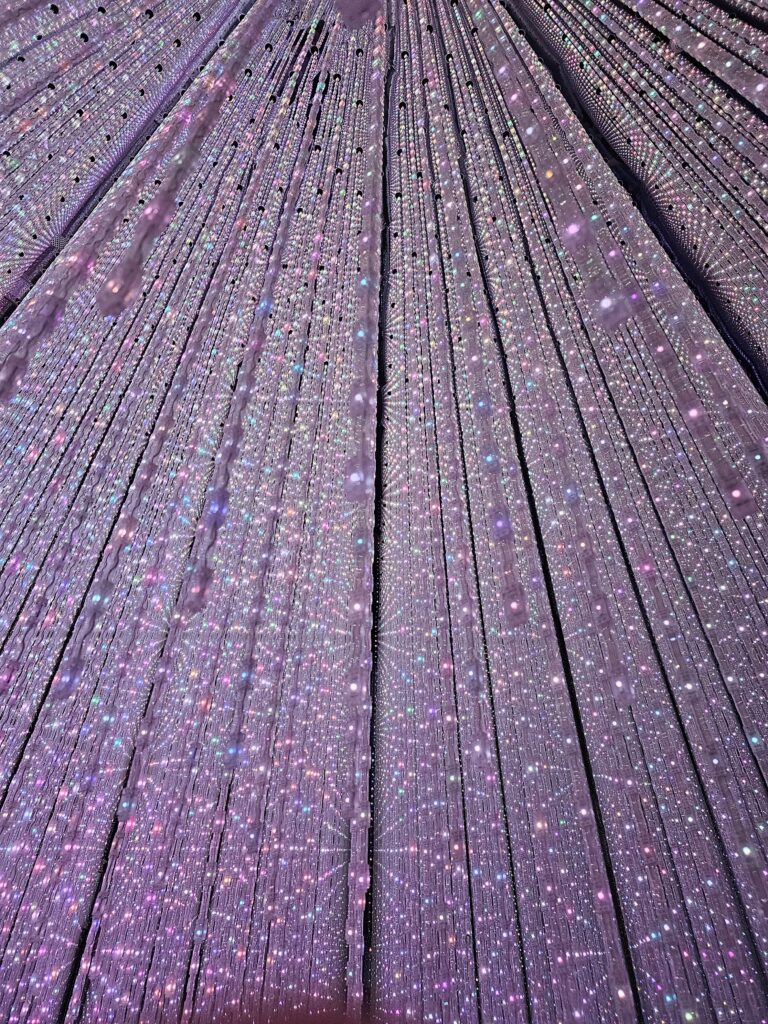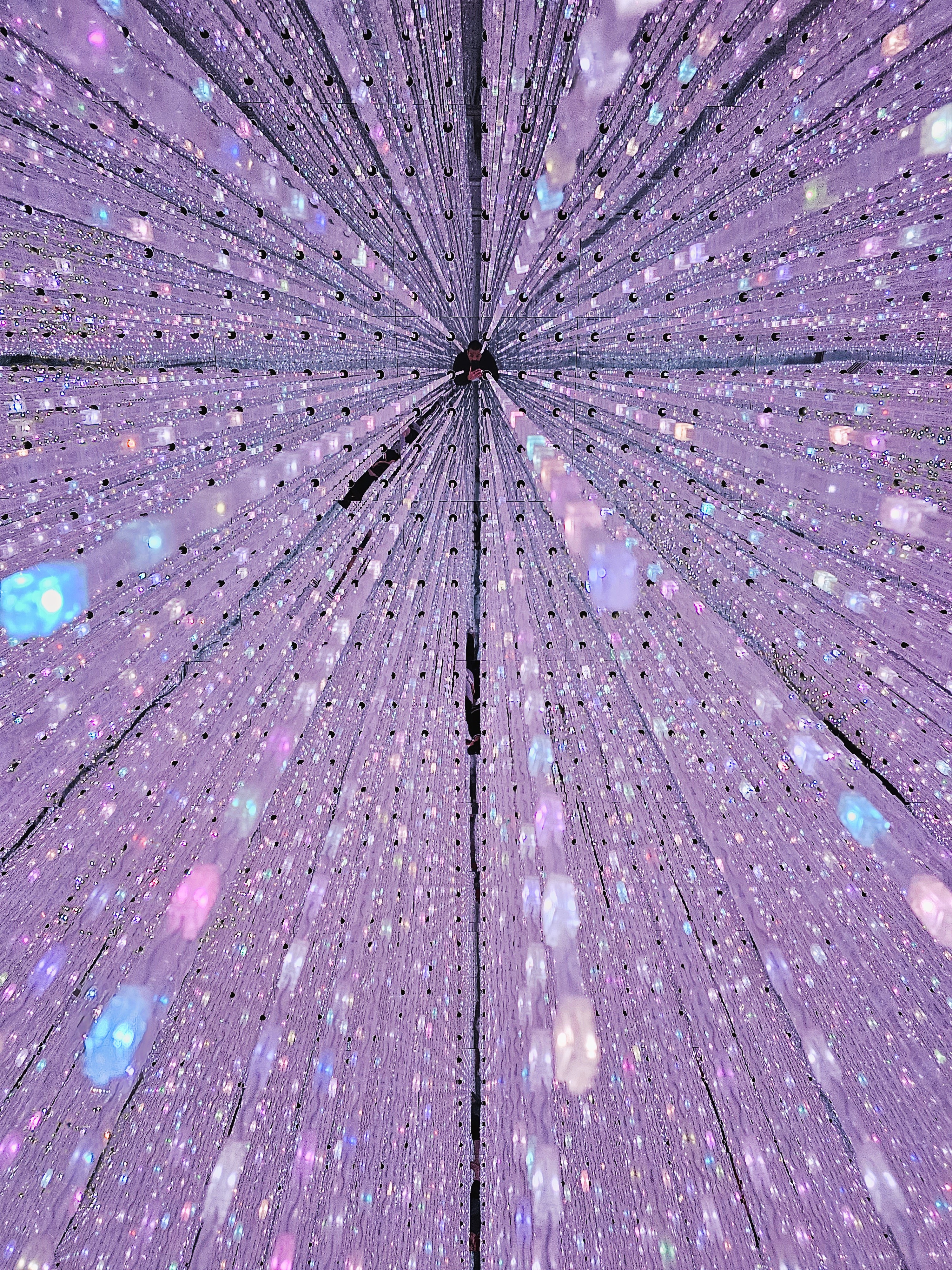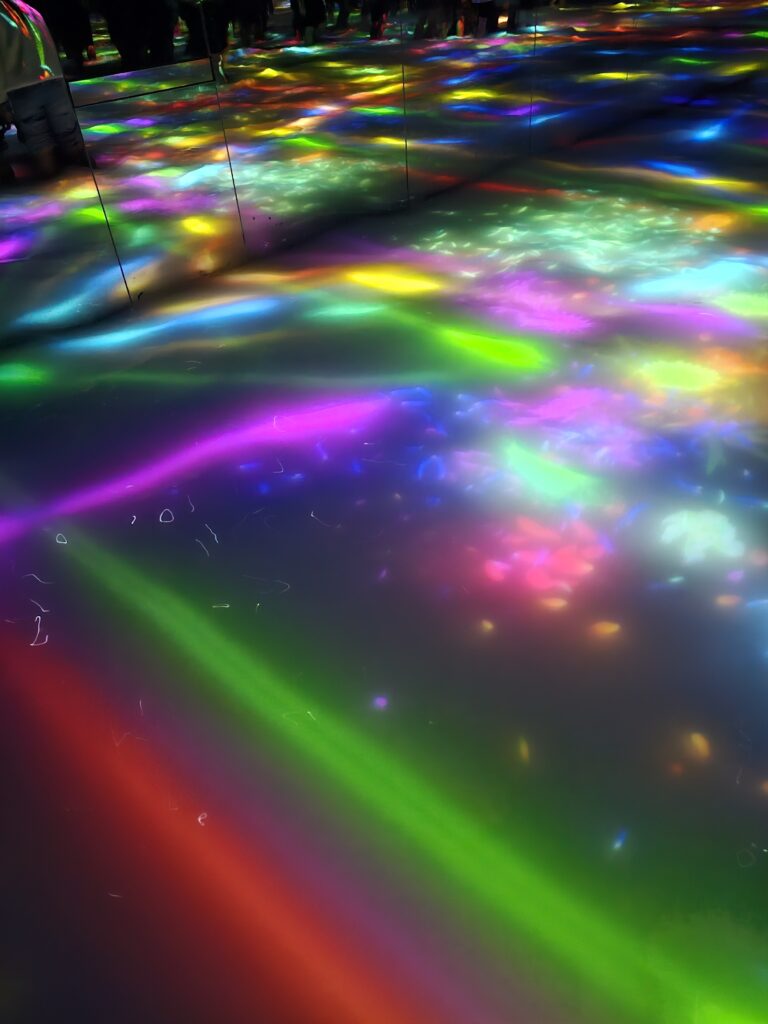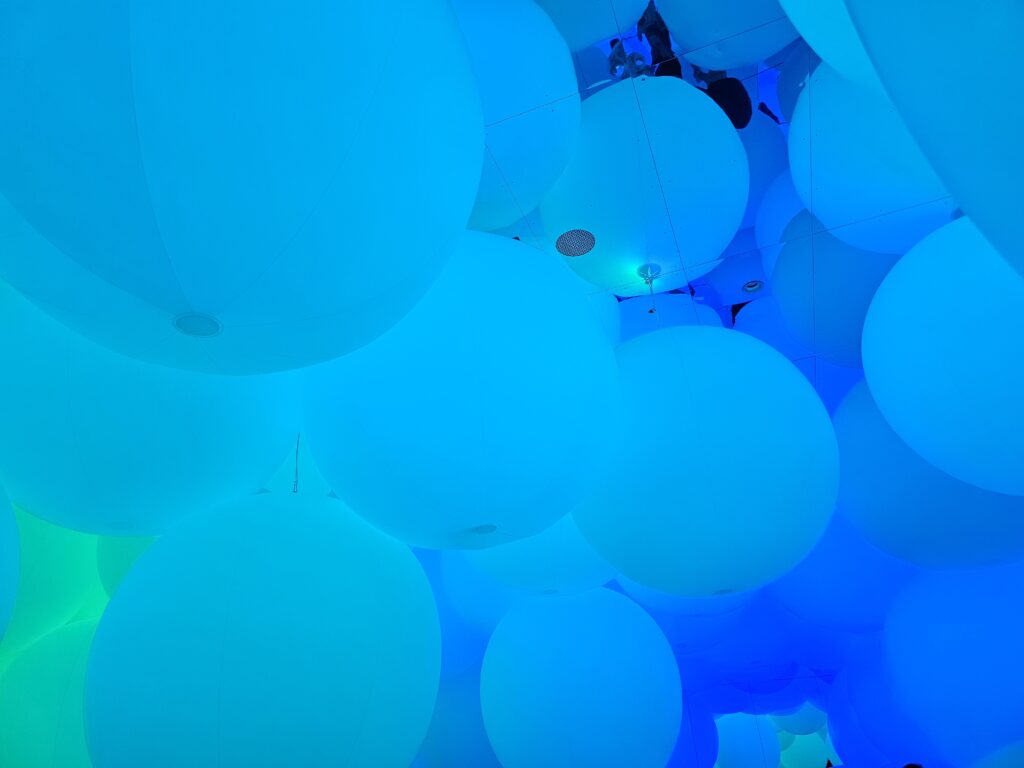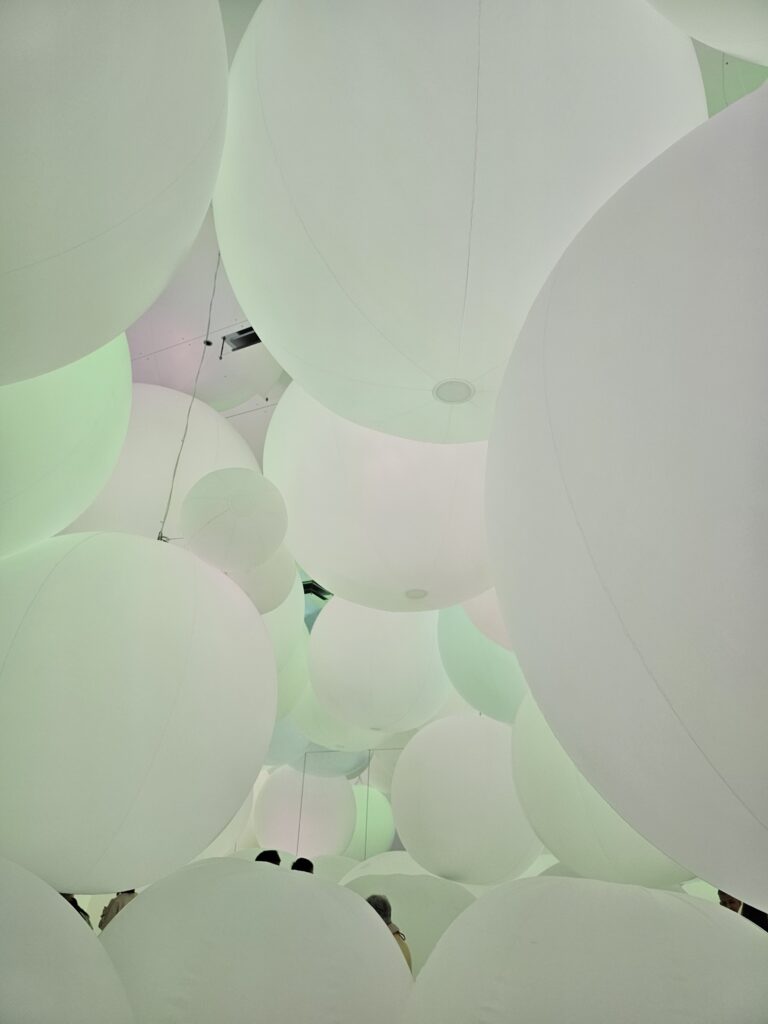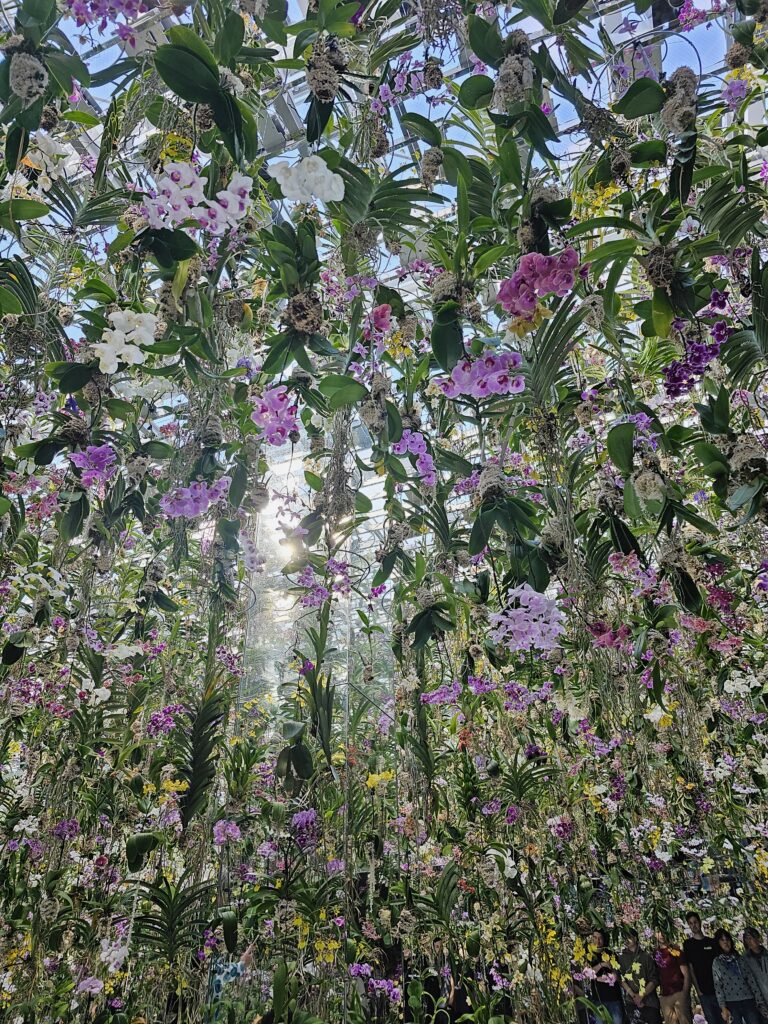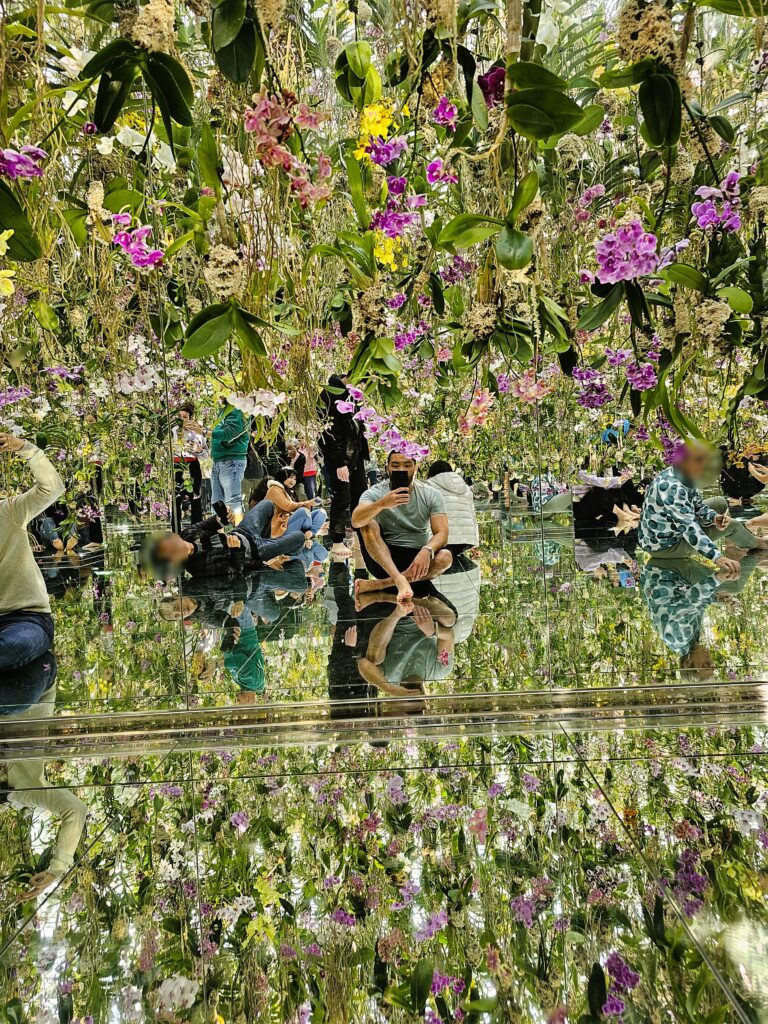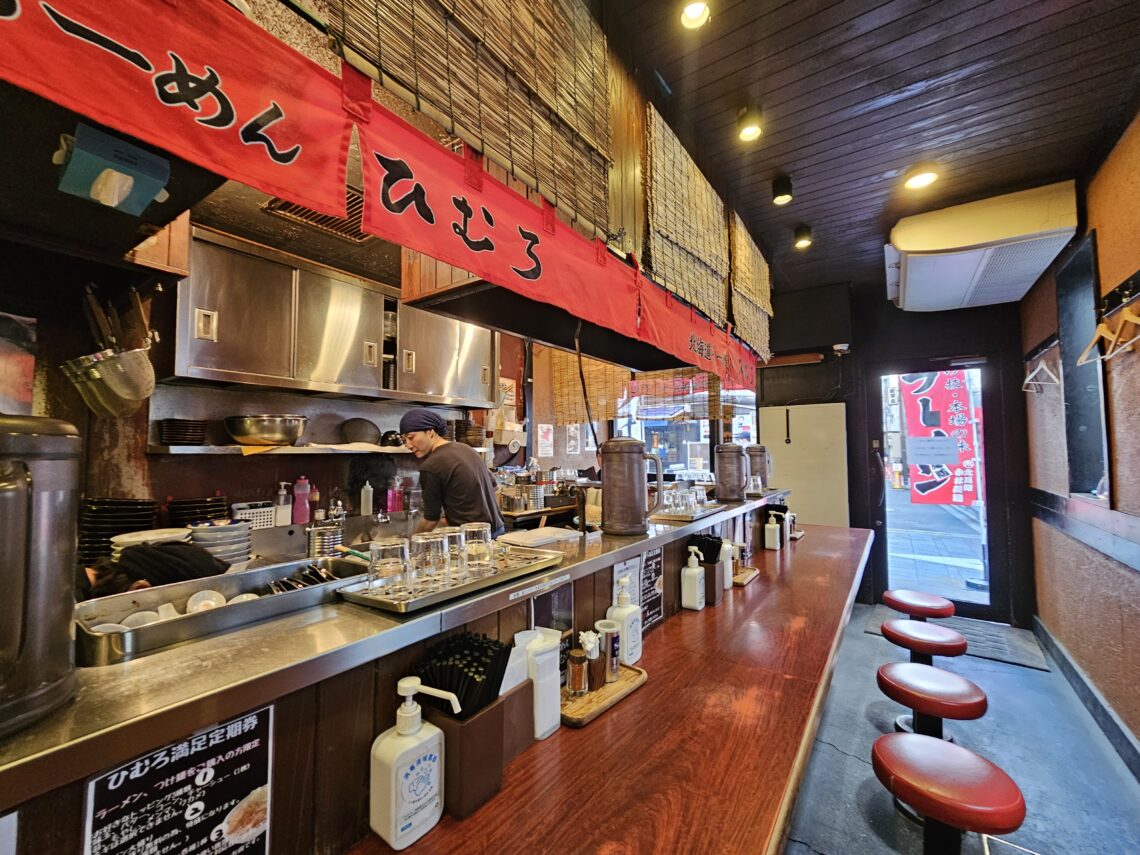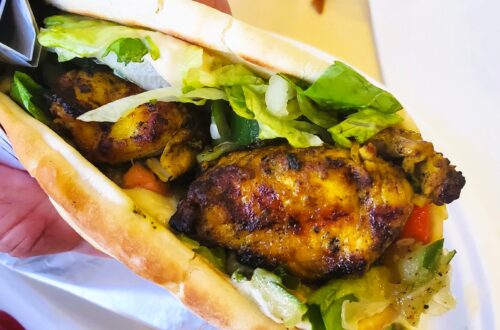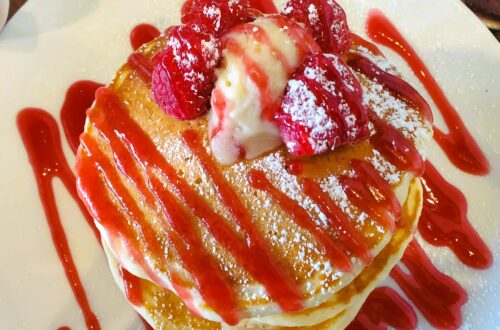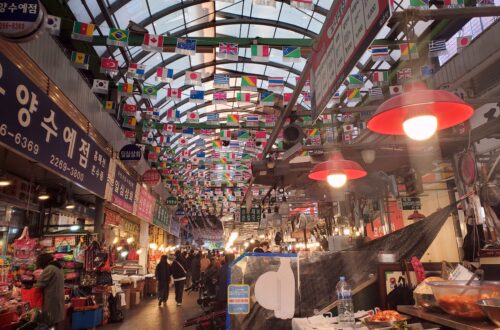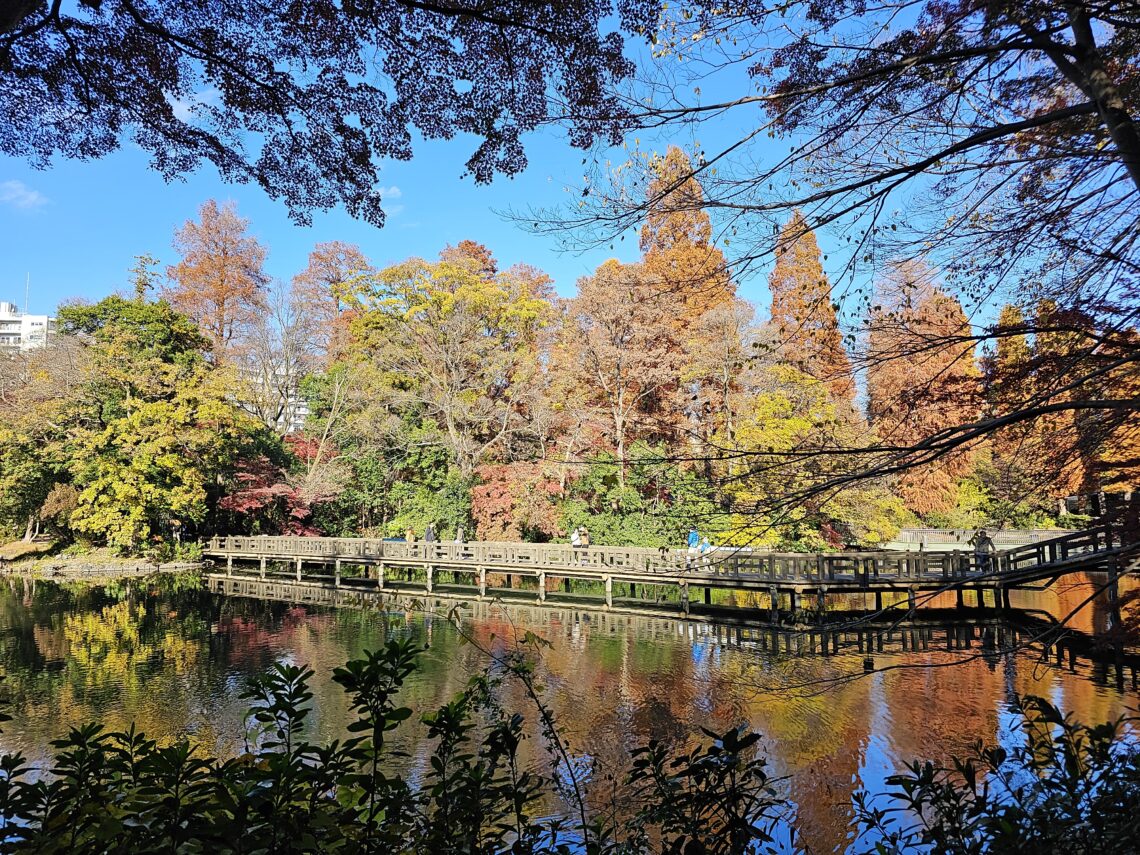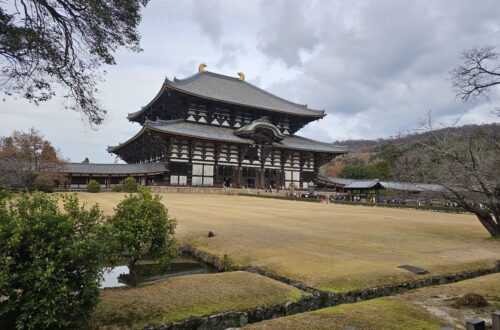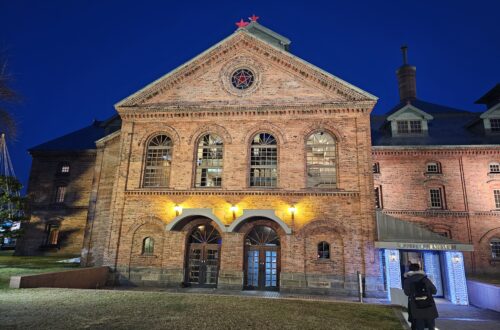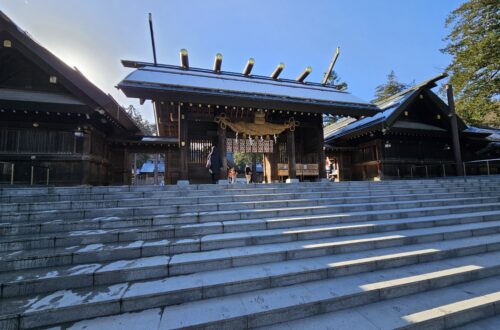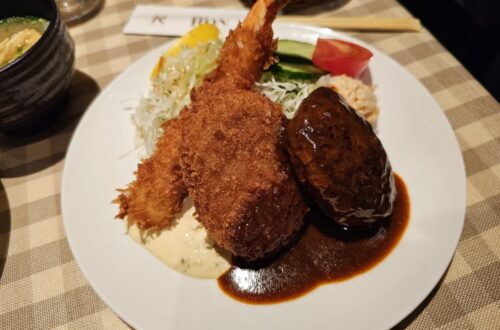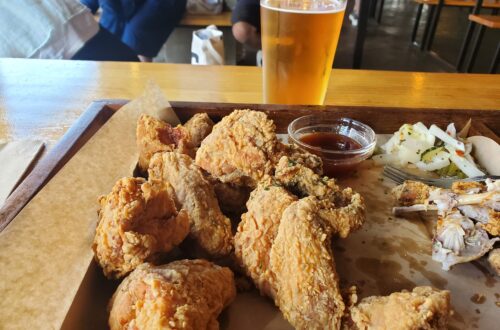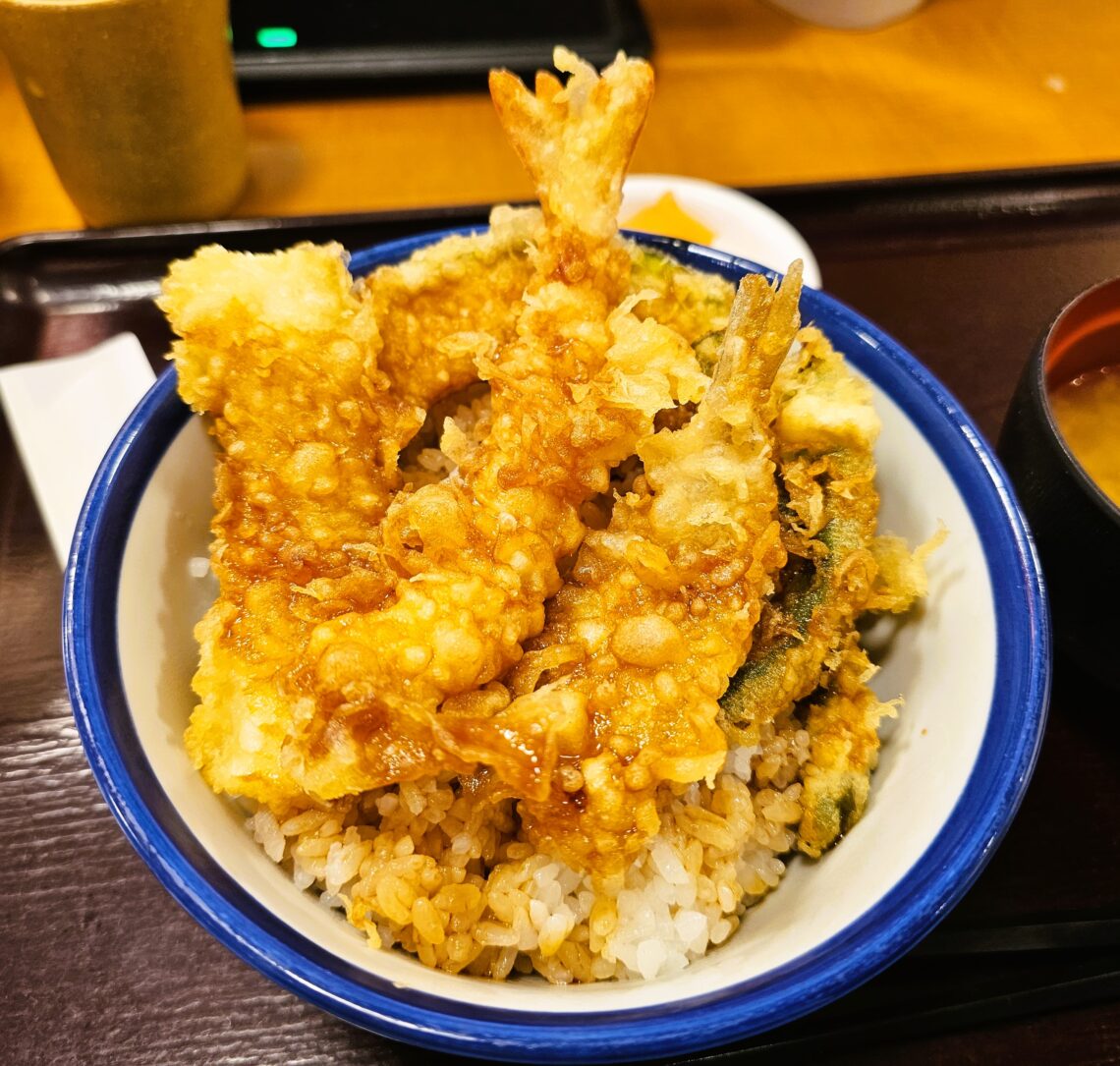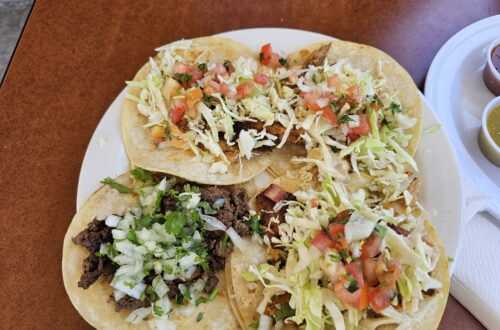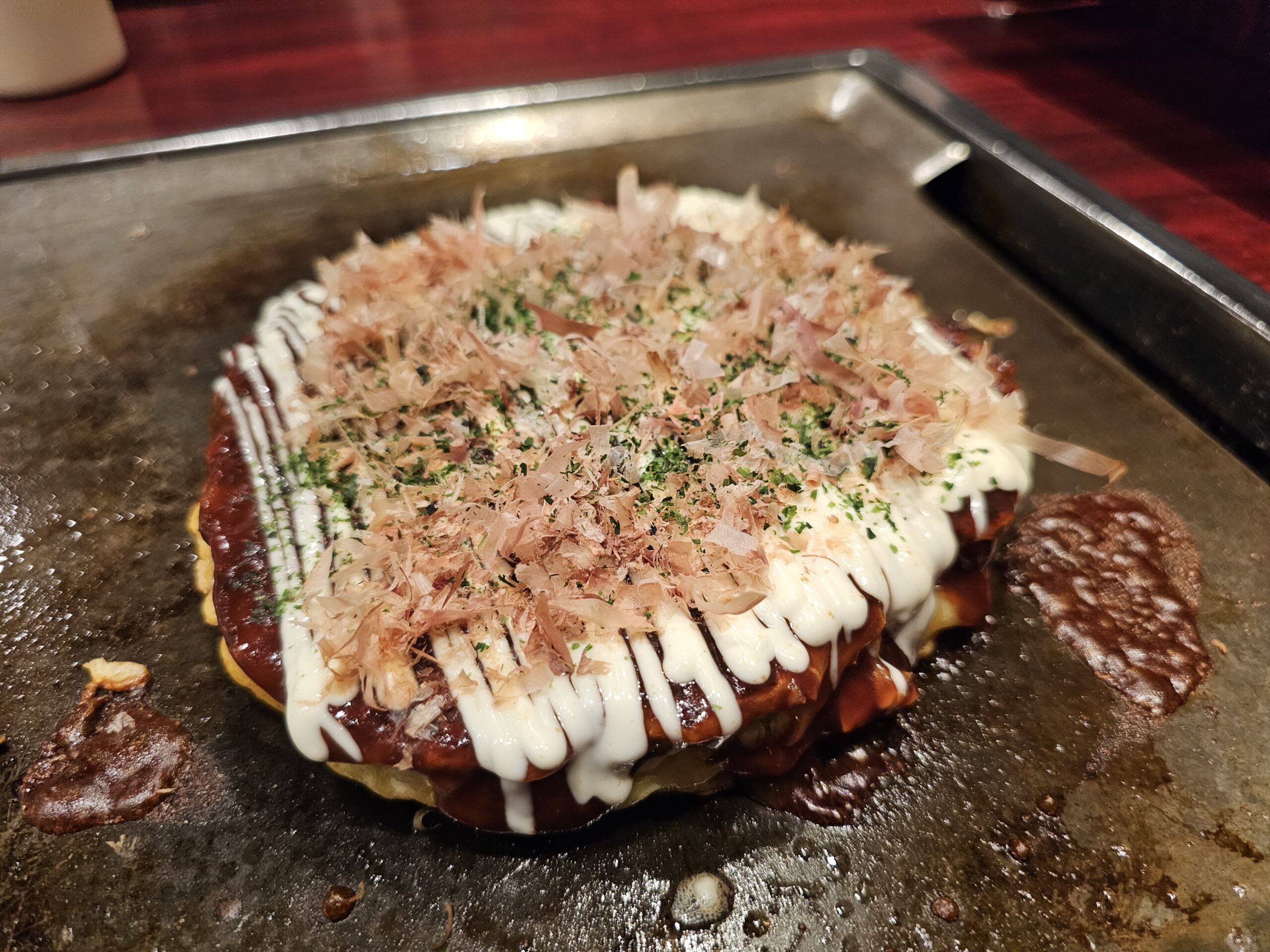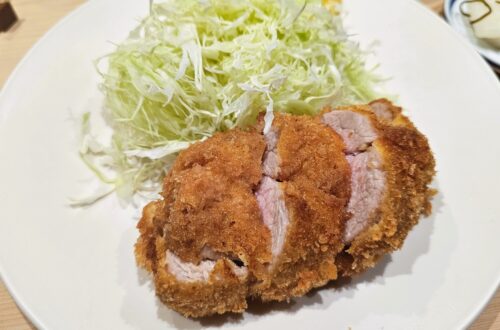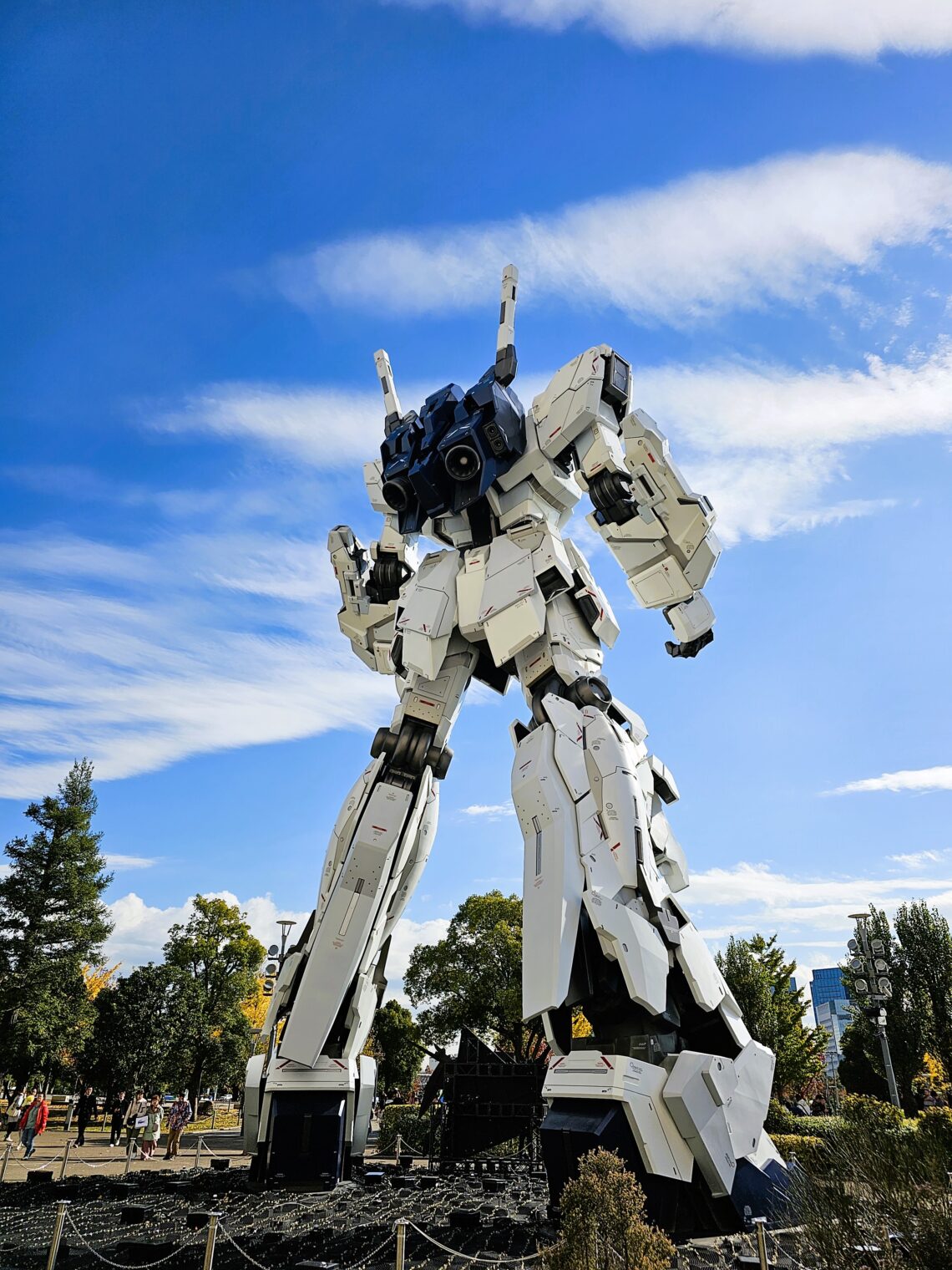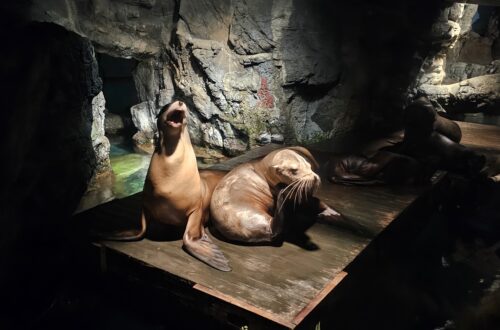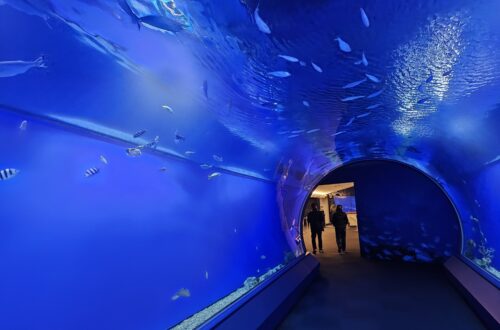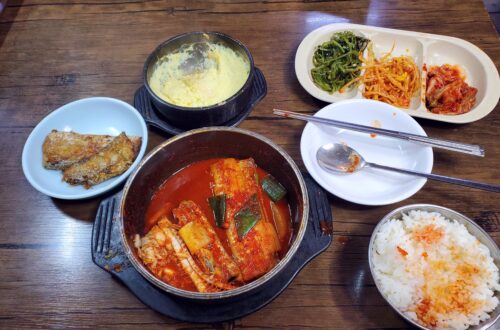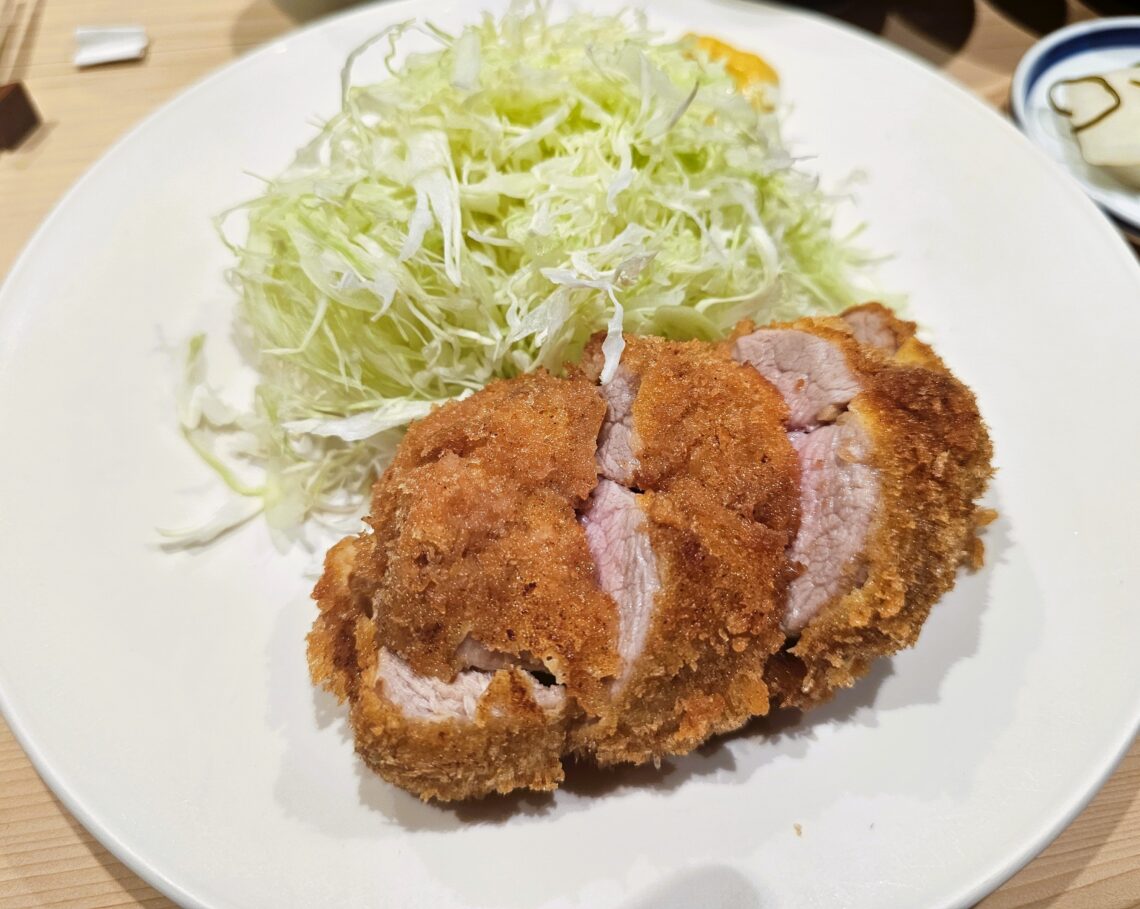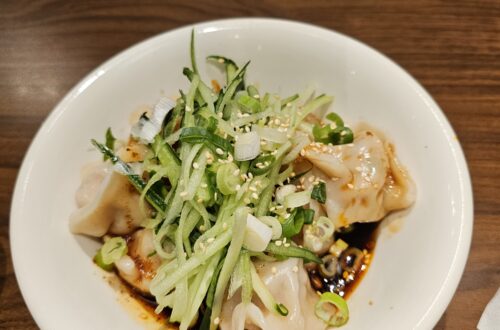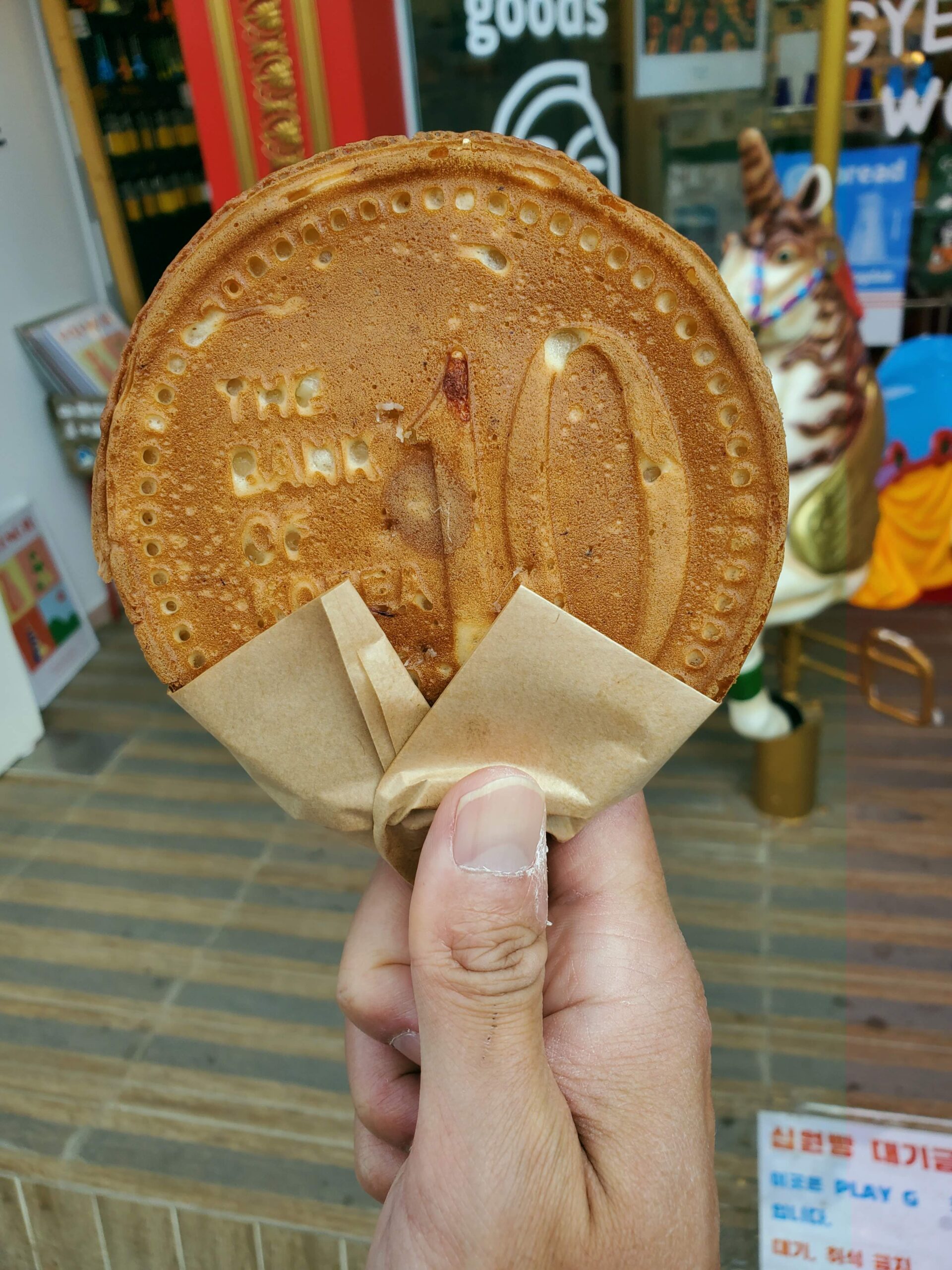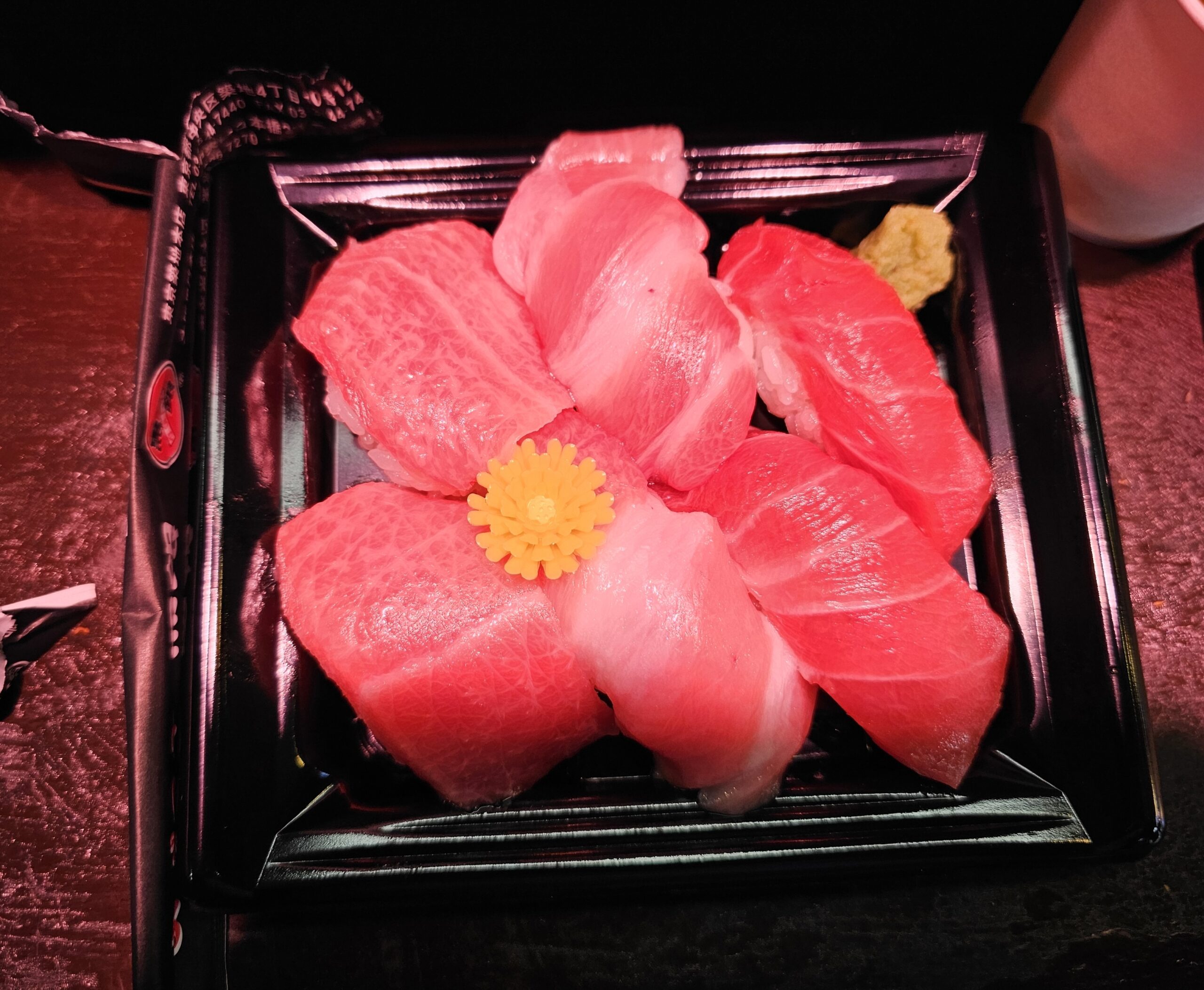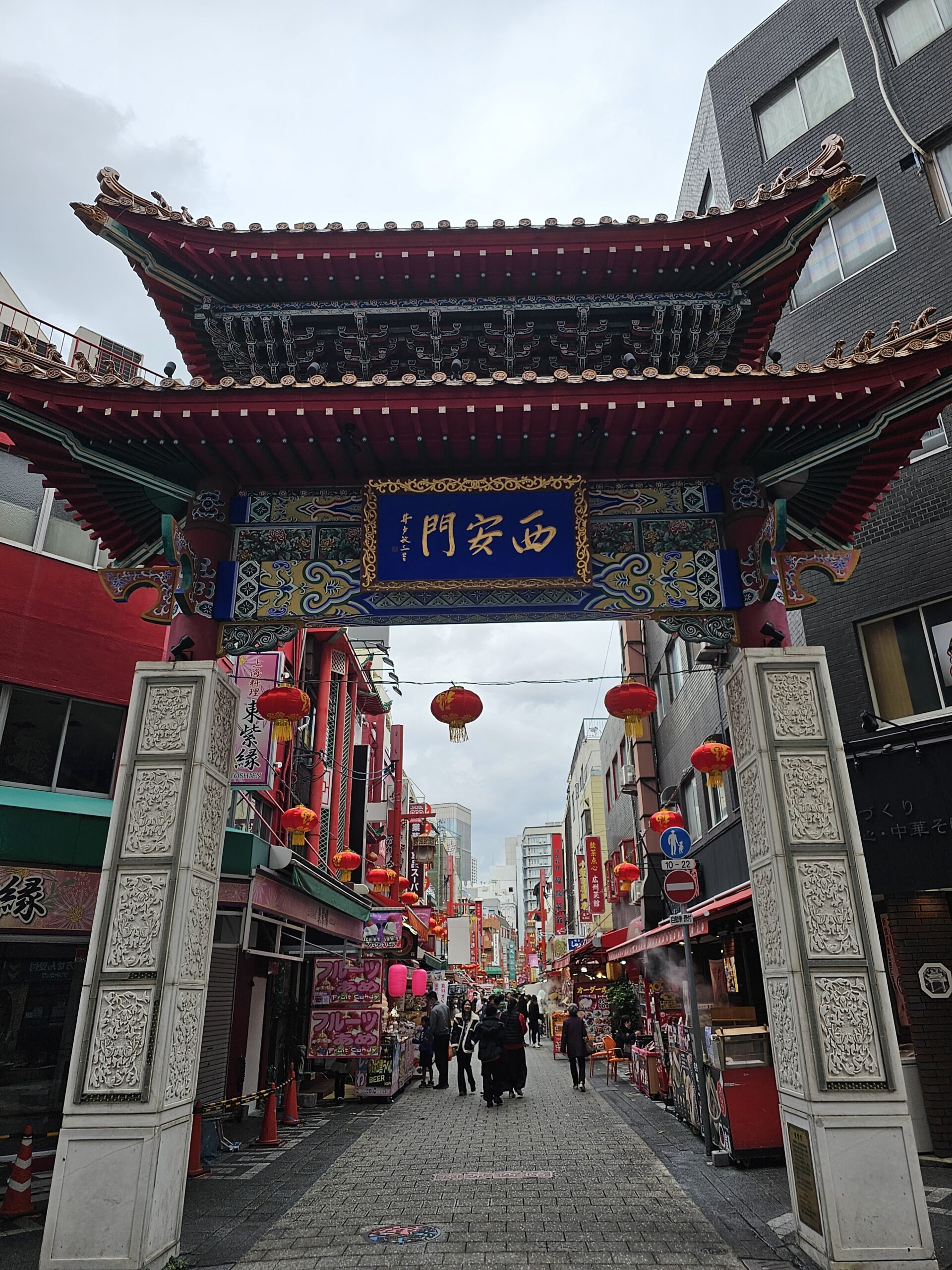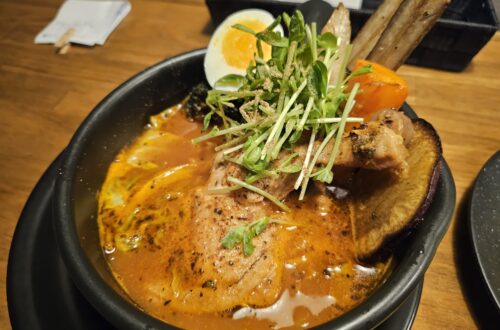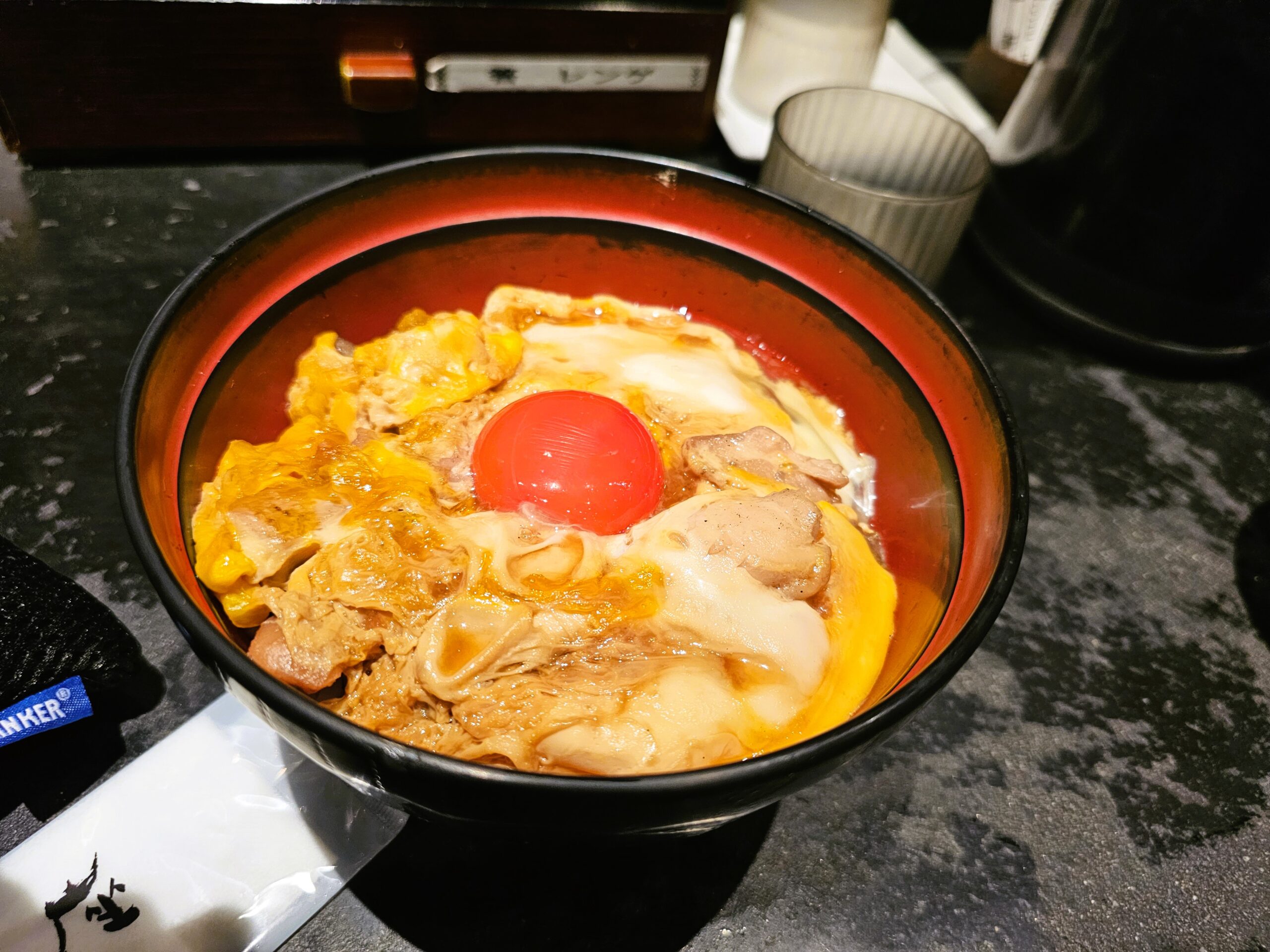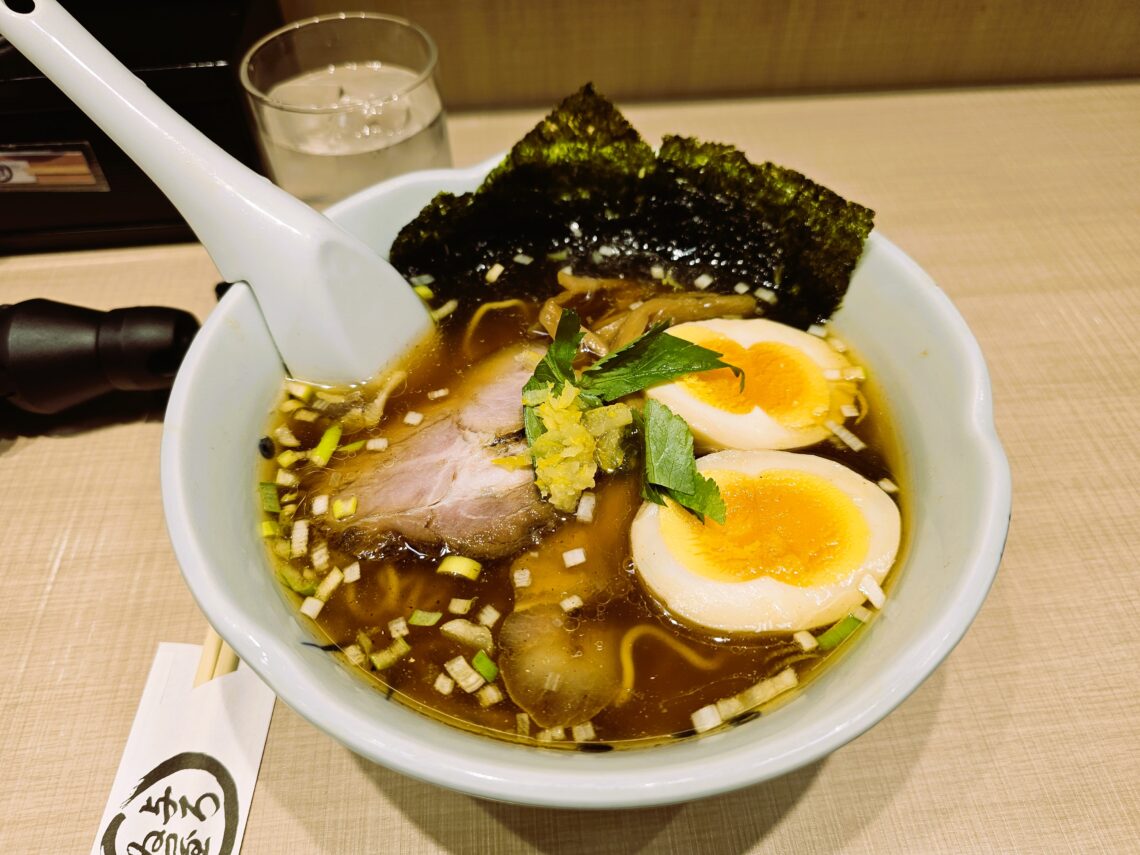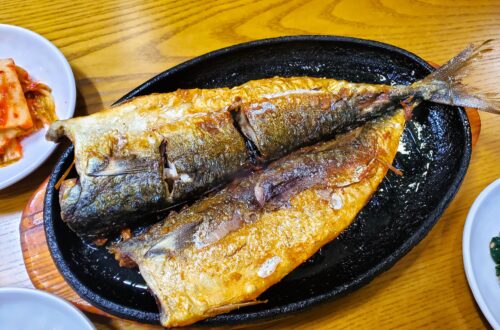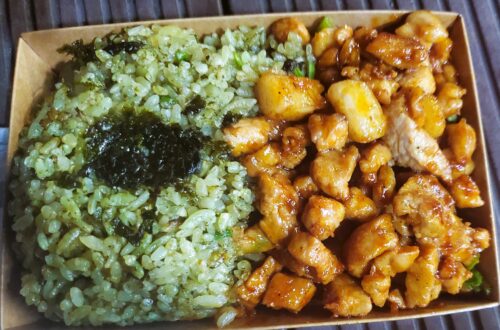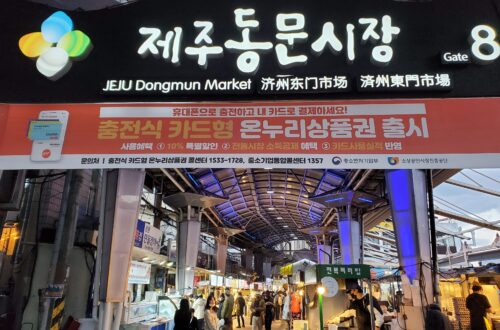-
Bustling Ameyoko Shopping Street Has A Little Bit Of Everything
What is the Ameyoko Shopping Street?
Ameyoko Shopping Street in the Ueno district includes more than 400 stores selling all manner of goods. You can find seafood, clothing, bags, cosmetics, dried food, sweets. You name it, you can probably find it on this bustling street. There’s A LOT of stores, shops, and restaurants crammed into this area. Prices are fairly cheap as well.

Ameyoko is located right next to Ueno Park and Ueno Station which makes for a great place to stop by before or after a day in the park to grab some food. There’s a TON of places to eat around the area, so you’ll definitely be able to find something to munch on!
Himuro Ueno Ramen
I didn’t even know Ameyoko existed. I went to Ueno with the intent on going to the park and hitting up the museums. I did want to grab some food prior to heading over though and quickly saw throngs of people located near the entrance to Ameyoko and decided to walk around a bit.
One of the restaurants that caught my eye in the area was Himuro Ueno Ramen. It’s not on one of the main streets, it’s located on one of the many side streets. Having a hankering for some ramen on this particular day I decided to give it a try.
It’s one of those ramen restaurants where you order at a machine and receive a ticket to give to the chef. They can be a little intimidating if there’s no English and a line behind you. Fortunately, although there was no English, they did do something else to help us Non-Japanese speaking folk.
There were taped numbers on the machine that correlated with the numbers of the ramen photos in the front of the restaurant. So I just had to match the number. I didn’t know what anything else on the menu was but was happy to be able to get what looked like a delicious bowl of ramen.
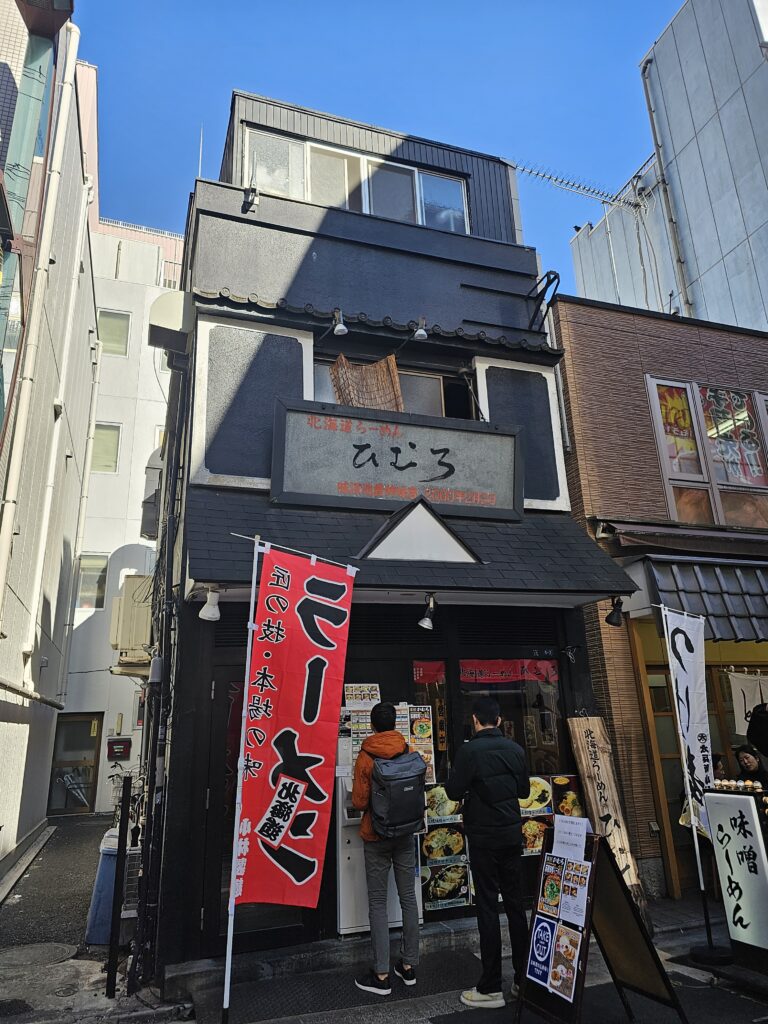
Himuro Uno Ramen storefront 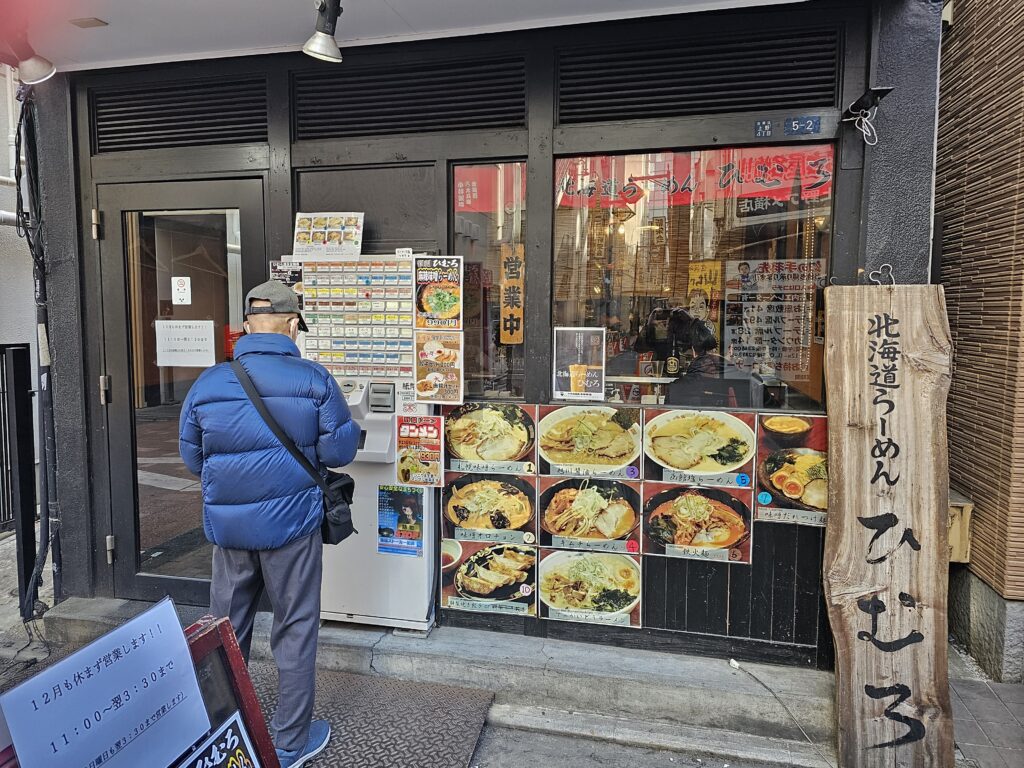
Himuro Uno Ramen with the ordering machine It’s a small restaurant with limited seating, much like many of the ramen places I visited. I really enjoy these types of places. Very homely with great ambience. You get a good look at how the ramen is made which is great.
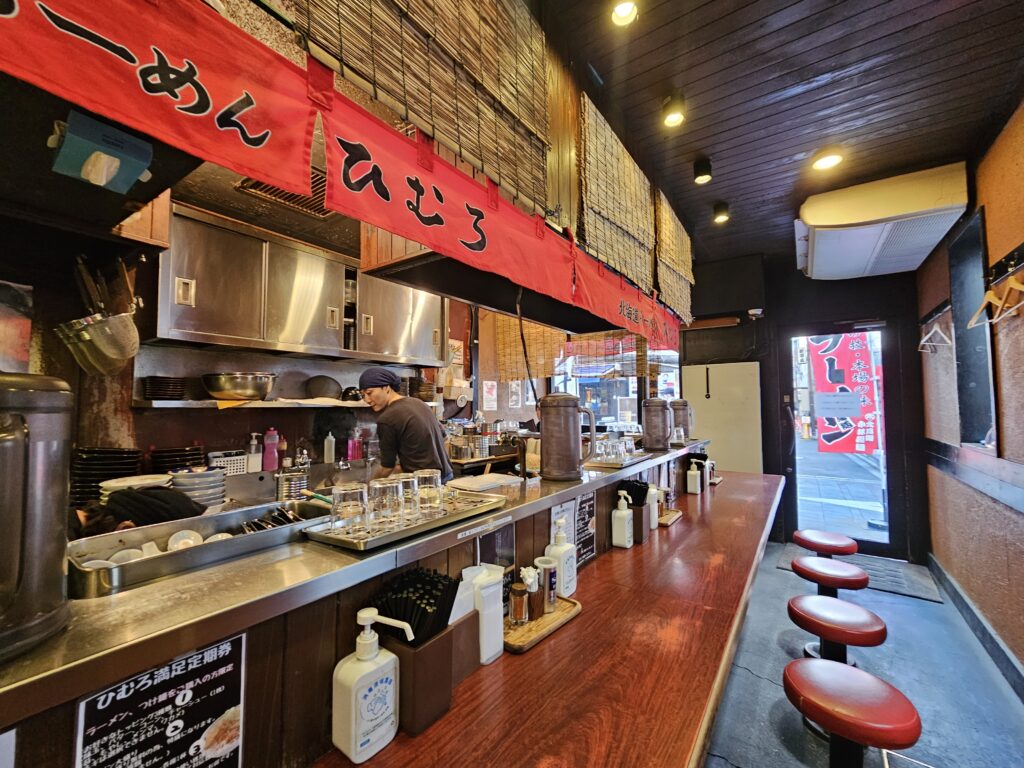
The Kimuchi Ramen Medium Spicy
I ended up getting the Kimuchi Ramen Medium Spicy (980 yen, $6.68). The ramen came out piping hot about ten minutes or so after I handed them the ticket.
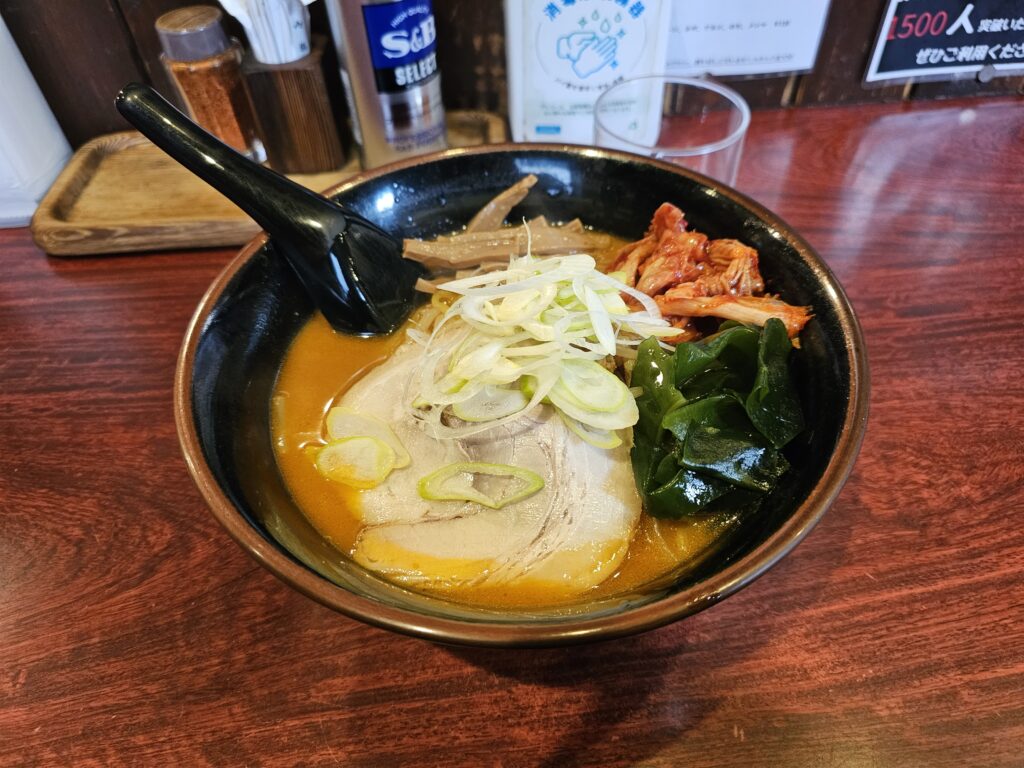
It came with 1 piece of pork chashu, bamboo shoots, kimchi, seaweed, bean sprouts, and green onion. Lots of goodies were in it! The broth had a nice rich flavor to it and was fairly spicy. Not sure what the base was but it was quite tasty.
The chashu was very thin and lean. It wasn’t heavily salted or seasoned but tasted great.
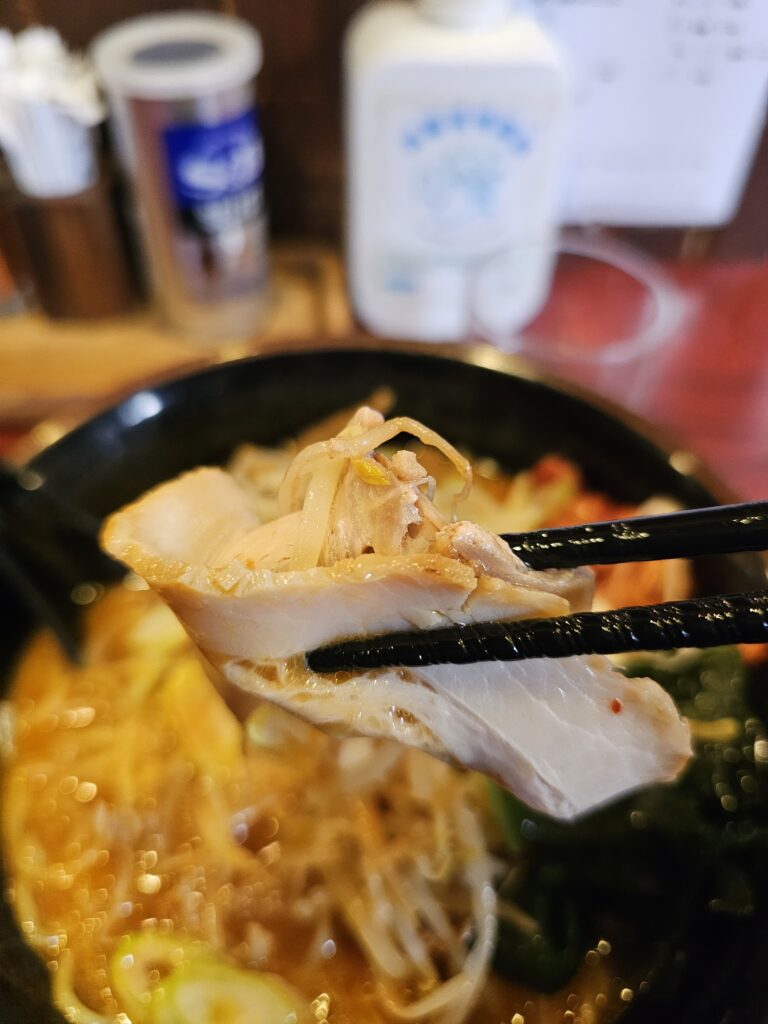
The noodles were thicker and curly. Defintely al dente with a nice bounce to them and they tasted very fresh as well.
There’s a good number of textures within this bowl of ramen. From the chewiness of the noodles to the crunch from the bean sprouts, bamboo shoots, kimchi and seaweed. They all delivered a different type of crunch with each bite, which is always a nice!
Overall this was a hearty bowl of ramen with a lot of goodies in it. I love kimchi so having that included in it was really nice and added to the overall flavor of the ramen broth.
Himuro Ramen
Address: 4 Chome-5-2 Ueno, Taito City, Tokyo 110-0005, Japan
Hours:
Wednesday 11 AM–3:30 AM Thursday 11 AM–3:30 AM Friday(The Emperor’s Birthday) 11 AM–3:30 AMHours might differ Saturday 11 AM–3:30 AM Sunday 11 AM–2 AM Monday 11 AM–3:30 AM Tuesday 11 AM–3:30 AM Oedo-Sho Sushi
After spending the entire day in Ueno Park I decided to cap the day off with some sushi near Ameyoko Street. I stumbled upon Oedo-Sho which is a conveyer belt sushi restaurant. It’s a cheap, affordable place to enjoy some sushi. Conveyer belt sushi is defintely an experience that should be tried while in Japan. There’s conveyer belt sushi places throughout the world, but this sushi quality and selection is likely to be far superior. There’s just a ton of different cuts of fish here.
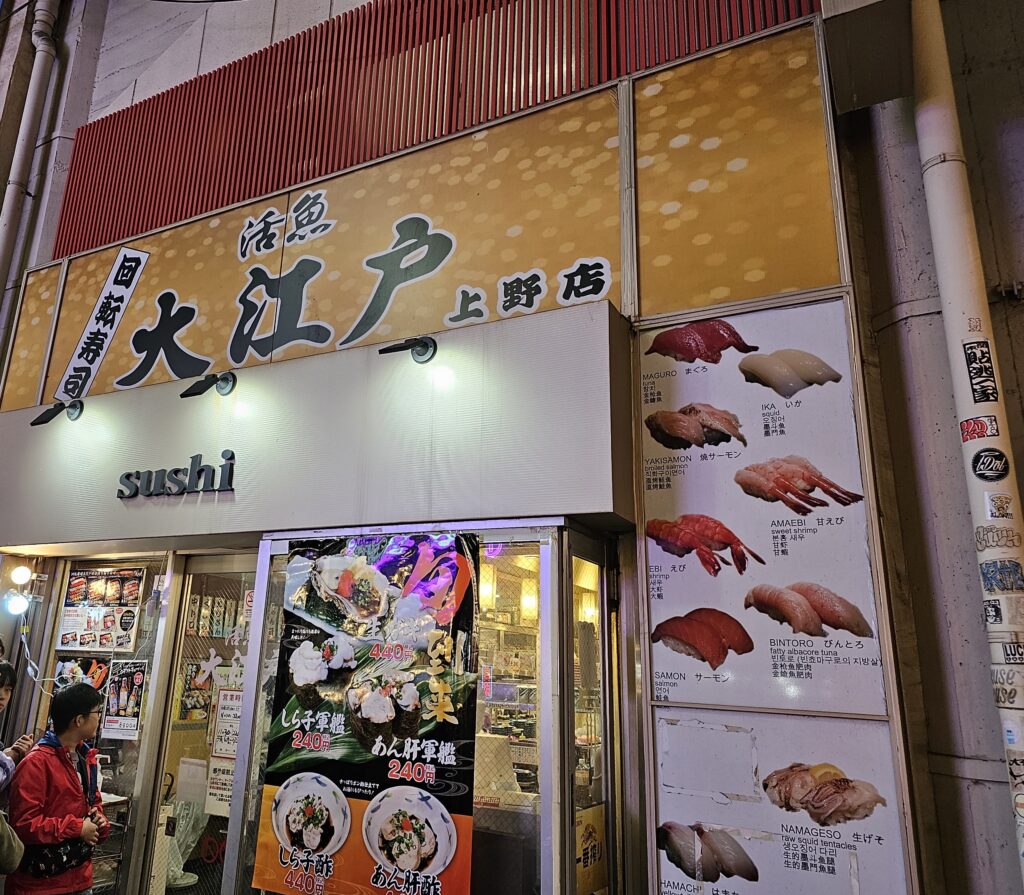

The menu is quite large with a ton of different types of sushi. The options on the actual conveyer belt seemed to be fairly minimal though. You can order directly from the chefs to get sushi from the menu that isn’t going around the conveyer belt it seemed. I just wasn’t sure how to do that exactly. With minimal English speakers working on this particular night I just stuck with what was going around.
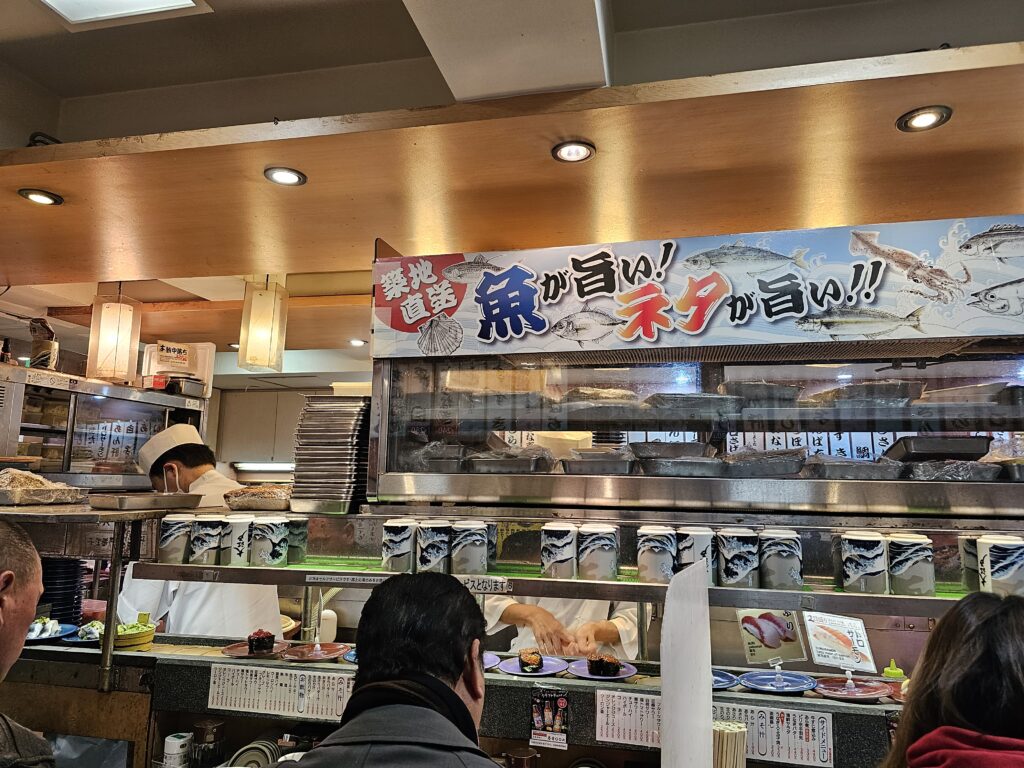
The Sushi
The sushi that I did know and recognize included were pretty much salmon, fatty salmon, shrimp. I ate a few others as well, what kind of fish they were, I have no idea.
Overall, the sushi was pretty decent. For my whole meal it was only (2070 yen, $14.10 USD) It wasn’t top tier but you get what you pay for and it was pretty good to boot.
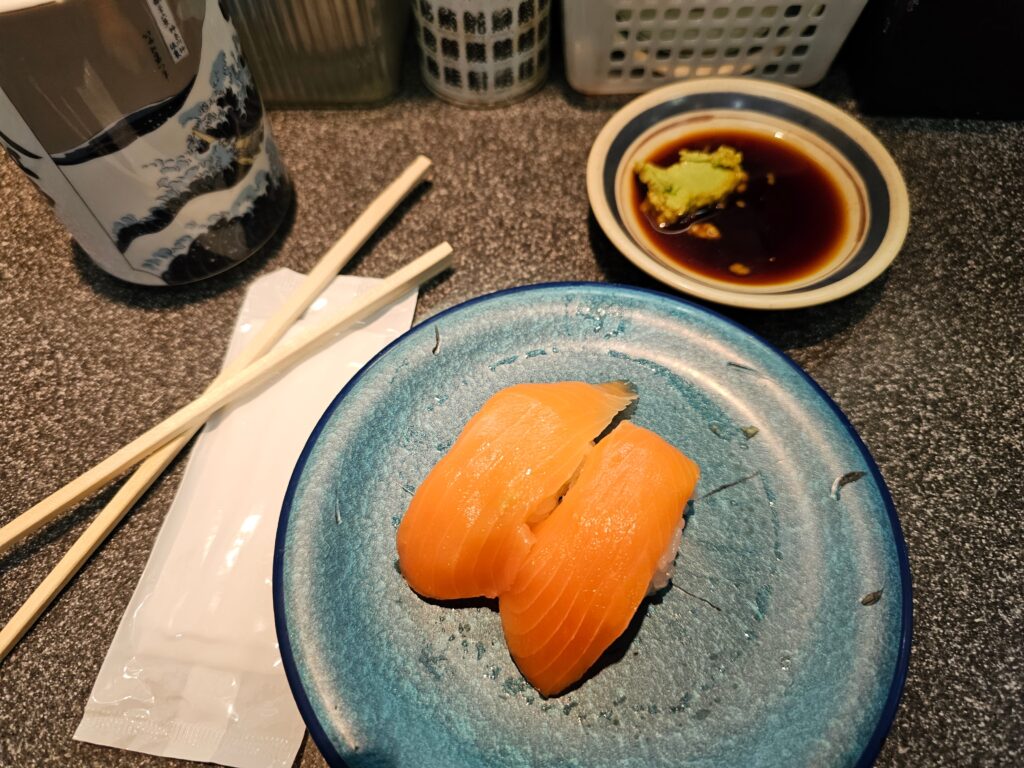
Salmon 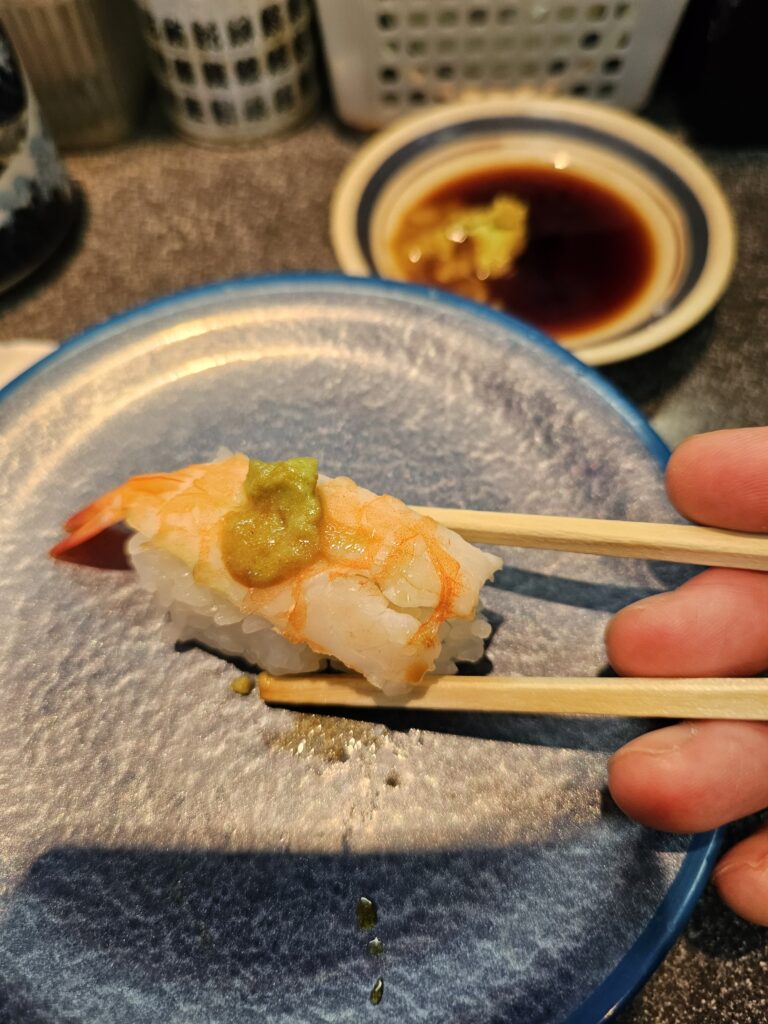
Shrimp 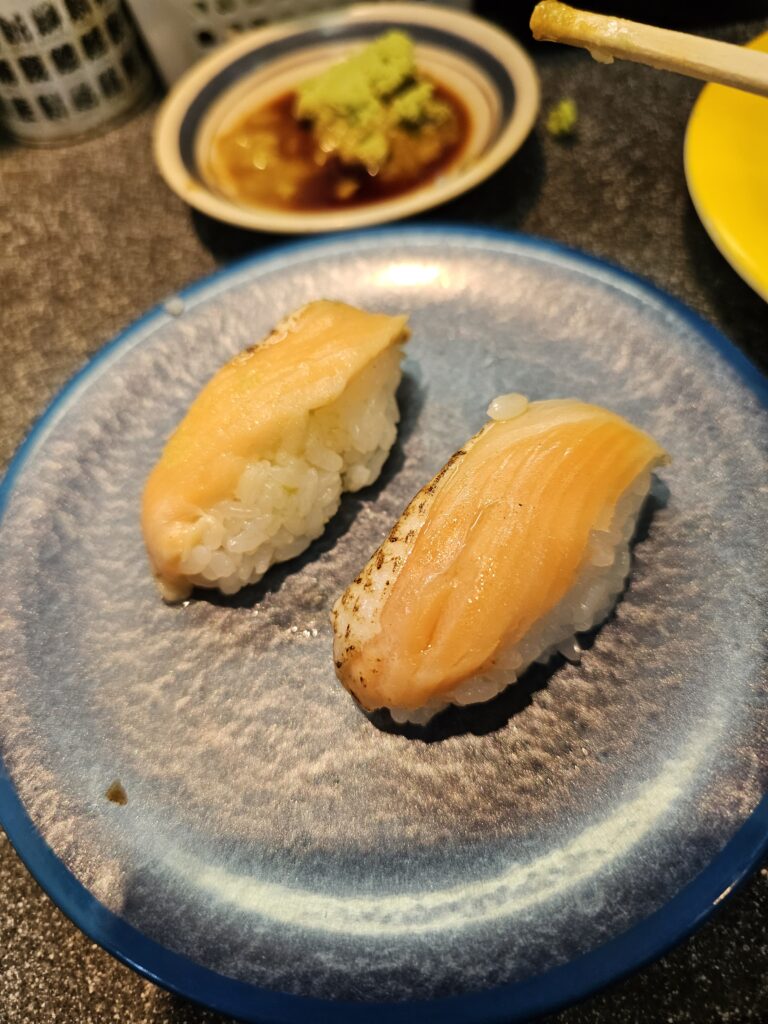
Fatty salmon 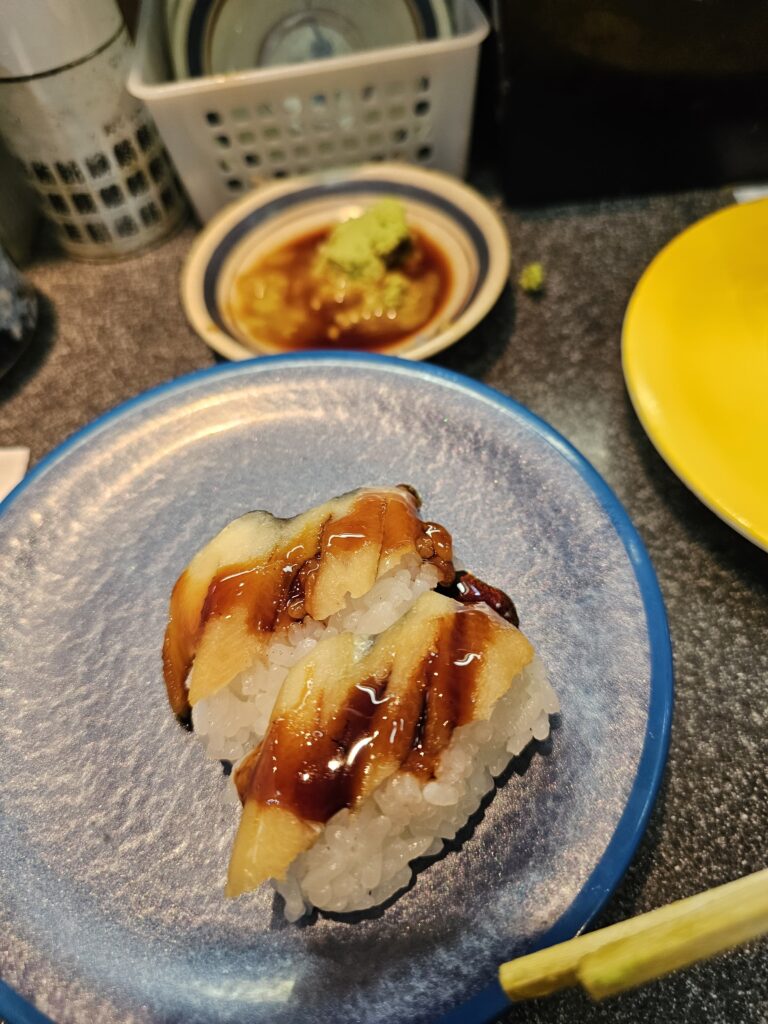
No idea lol Service options: Cash-only · Doesn’t accept reservations
Address: 6 Chome-12-14 Ueno, Taito City, Tokyo 110-0005, Japan
Hours:
Friday(The Emperor’s Birthday) 11:30 AM–10 PMHours might differ Saturday 11:30 AM–10 PM Sunday 11:30 AM–10 PM Monday 11:30 AM–10 PM Tuesday 11:30 AM–10 PM Wednesday 11:30 AM–10 PM Thursday 11:30 AM–10 PM -
5 Parks To Visit in Tokyo – You Won’t Be Disappointed!
5 Parks To Visit in Tokyo – Why Visit Parks In Tokyo?
Tokyo is a massive city with endless things to see and do. For a first time visitor there’s generally too much to see to be able to find the time to make a trip exclusively for a park. I was able to visit five parks while in Tokyo, some intentionally, some I just happened to stroll through on the way to an attraction. They’re a nice change of pace from the hectic and often very crowded sites of Tokyo. A lot of these, and other parks throughout Tokyo, you may just happen to walk through or see on the way to your next attraction. Intentional or not, visiting at least one of the parks is well worth it.
These are just a handful of the parks that Tokyo has, there’s quite a lot overall!
Shinjuku Gyoen National Garden
This was the favorite park that I visited. It was also the only one that cost yen to enter (500 yen) but it’s well worth it. Even though this is listed as a garden, it’s really a massive park. With huge open lawn spaces and wide meandering paths throughout, it’s a great place to escape the hustle and bustle of Shinjuku.
There’s three different types of gardens located within the park. There’s traditional Japanese gardens which feature well kempt shrubs and trees with ponds and bridges.
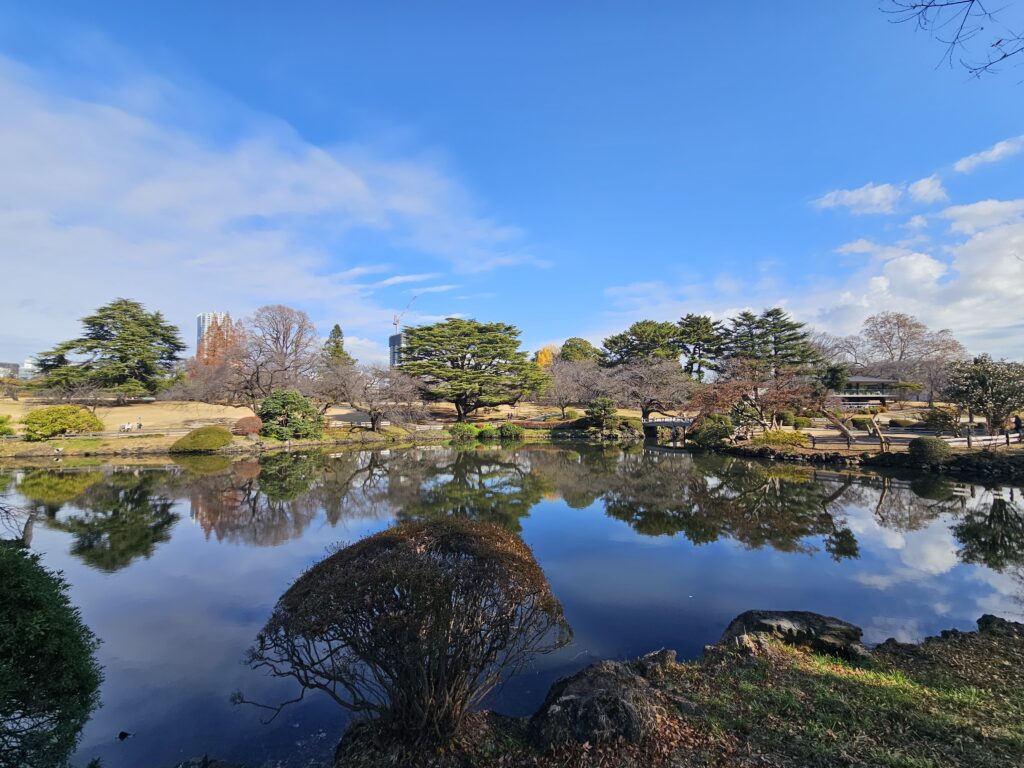


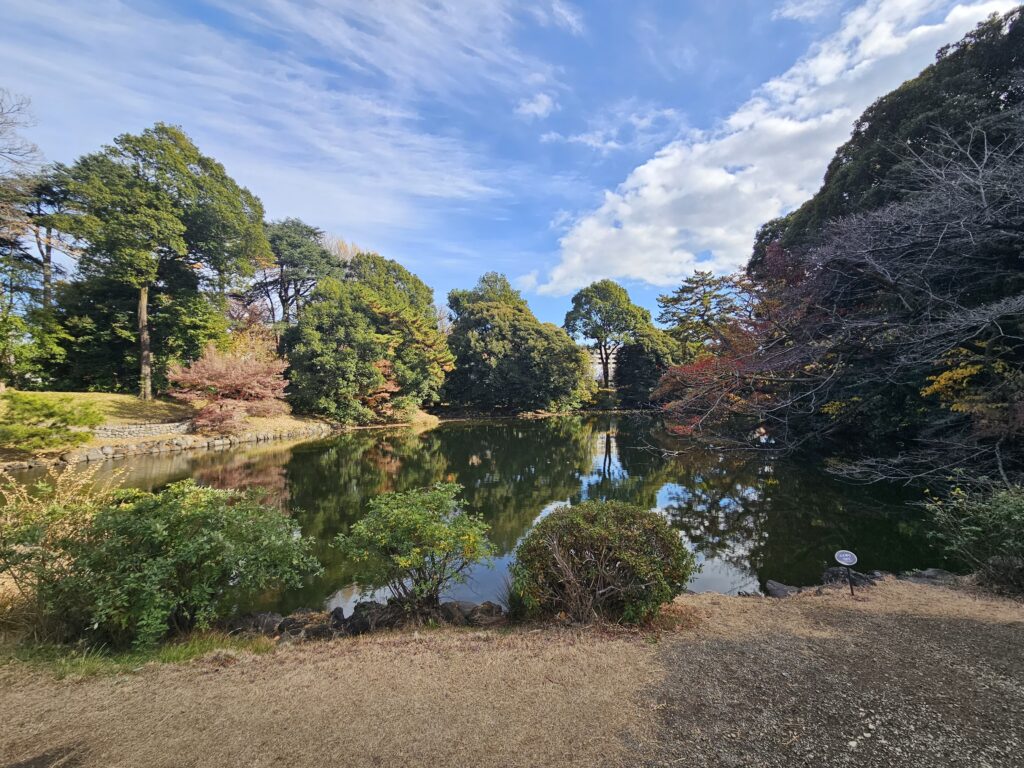
A French garden that is symmetrical, with clearly defined lines and very orderly.
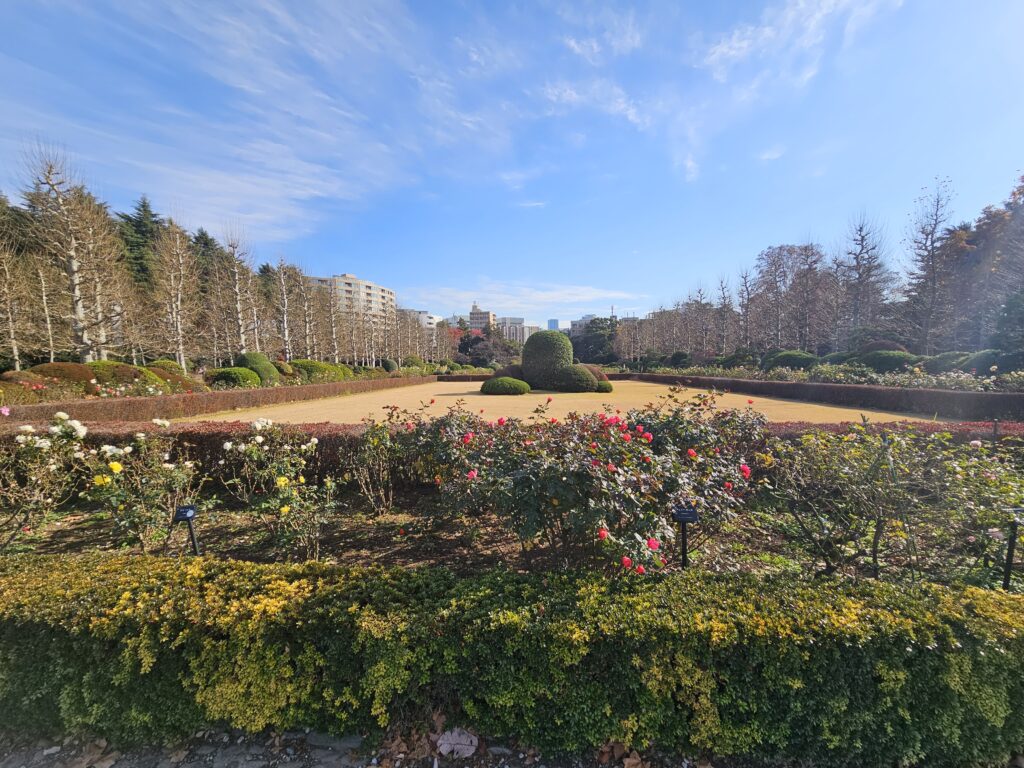
And a English garden which would include the massive lawn areas which have cherry blossom trees surrounding them. Yes, the beloved Cherry Blossom trees are strewn throughout the park. There’s over 16 different varieties planted in Shinjuku Gyoen. I can only imagine what this park looks like in the Spring when it’s Cherry Blossom season and also in the Fall as the leaves change colors. It definitely must be a site to see!
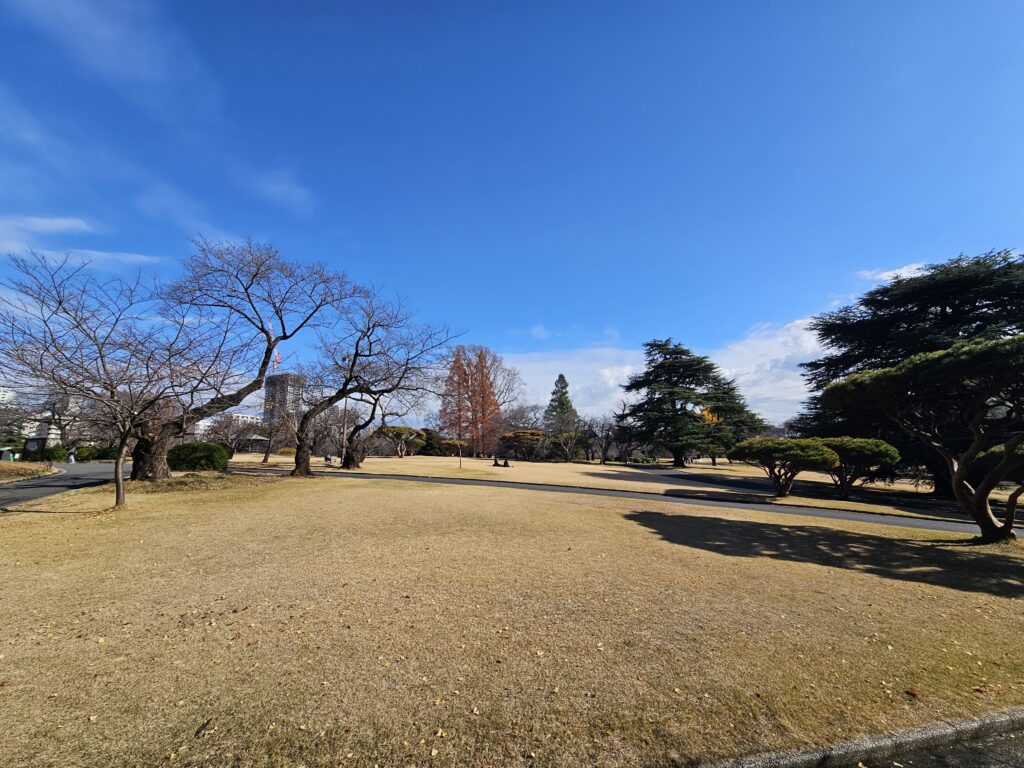

I came here in the middle of December so nothing was in bloom and the trees were barren. But I still loved it. Due to the season and visiting mid-week added to the charm since the park was not busy at all. It was very peaceful to walk with minimal crowds.
There’s a Starbucks in the park, along with a couple other tea houses and places to grab a snack. The Starbuck overlooks one of the traditional Japanese gardens with a great outdoor area with seating. It’s a great spot to grab a coffee, relax with a great, peaceful view, and soak in all the surroundings.
Ueno Park
Ueno Park is located in the Ueno District of Taito, Tokyo. It’s a large public park that was first established way back in 1873.
This is a bustling park which includes a number of different museums, including the Tokyo National Museum, the National Museum for Western Art, The Tokyo Metorpolitan Art Museum, and the National Science Museum. If you’re a fan of museums, this park is a must visit.
Not only is the park home to a number of museums, but it also includes the Ueno Zoo and a few temples and shrines.
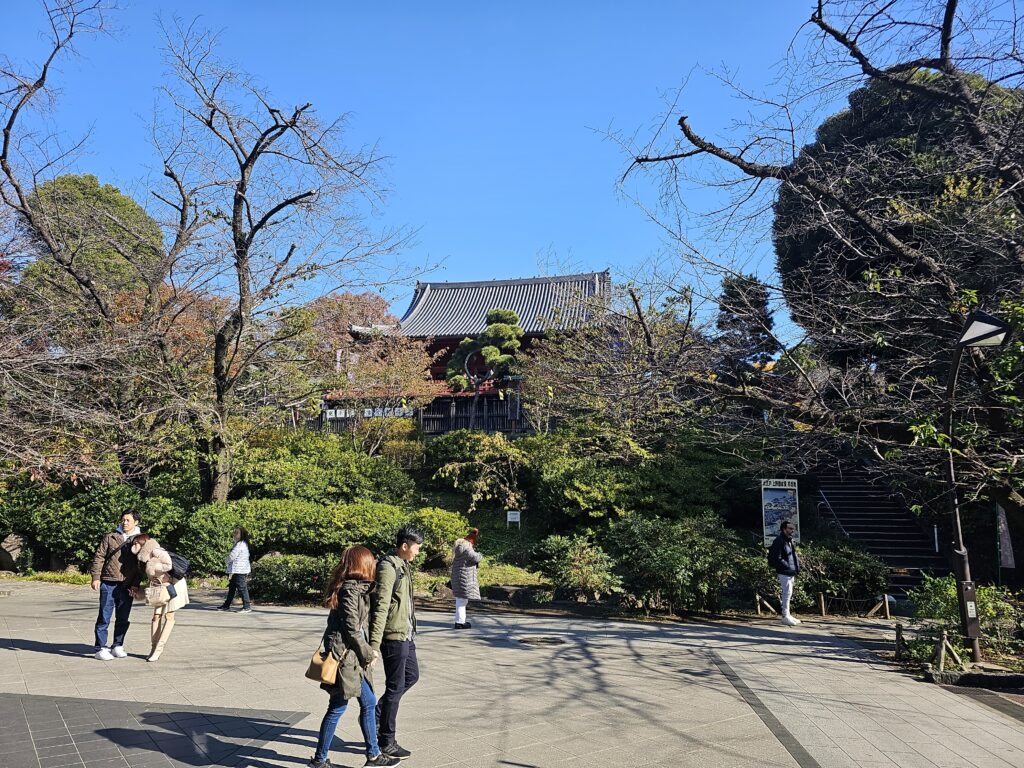
Shinobazu Pond is also found in Ueno Park. It’s a large pond that’s broken up into three different subdivisions: the boat pond, lotus pond, and cormorant pond (where all the ducks and local waterbirds are located).
The park is a very popular place to visit during cherry blossom season since there are over 1000 cherry trees lining the central pathway. You’ll have to use your imagination since I was here in December. But even during this month these particular trees looked amazing.

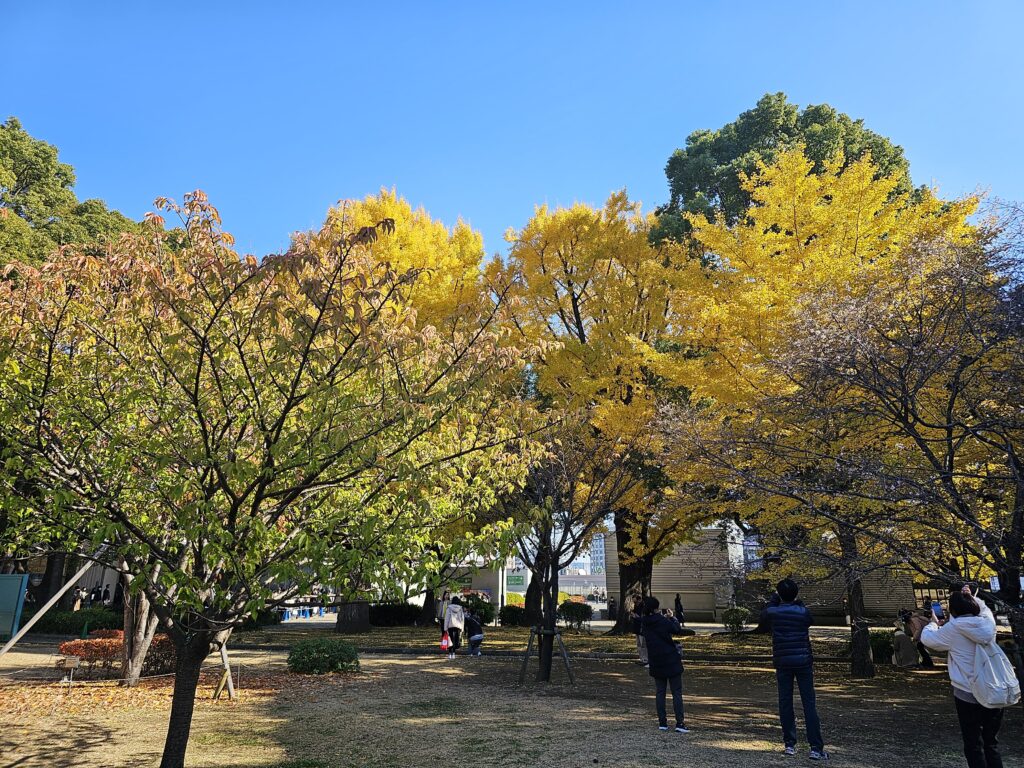
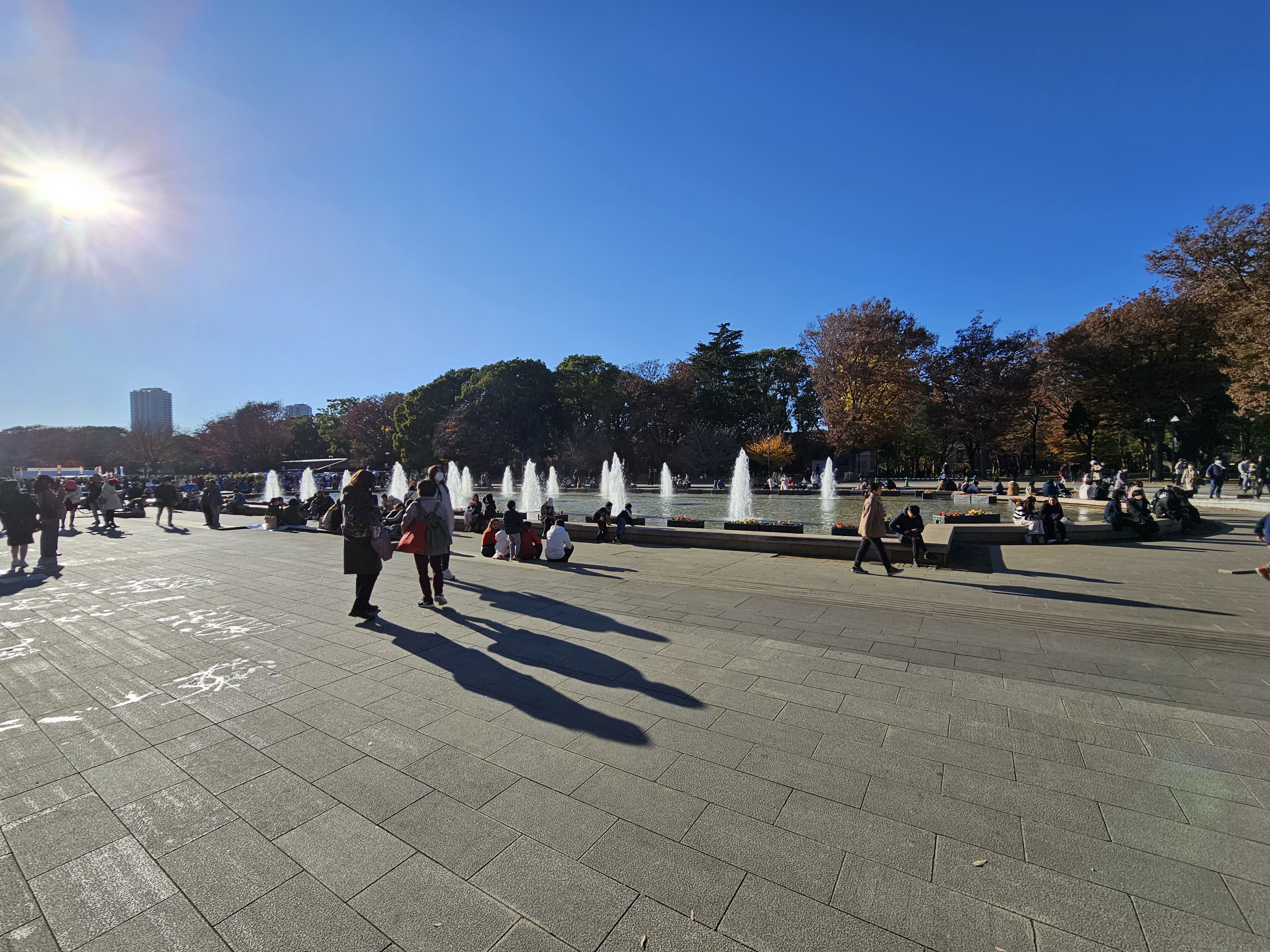
When I went on a Sunday there was a small concert going on and seemed like a koi fish market. The park was busy and people were just hanging out enjoying the nice weather and park. It was great! Overall there’s just A LOT going on at this park. It has a good energy and vibe to it and there’s something for everyone here to enjoy.
You can easily spend an entire day here. There’s just so much to see and do here, especially if you’re a big museum fan.
Meiji Jingu
This isn’t a park per se, it’s a very famous Shinto Shrine located in essentially a forest right in the middle of the bustling Harujuku District. One of the most popular Shinto Shrines in all of Japan, Meiji Jingu is most likely on your list to visit while in Tokyo already.
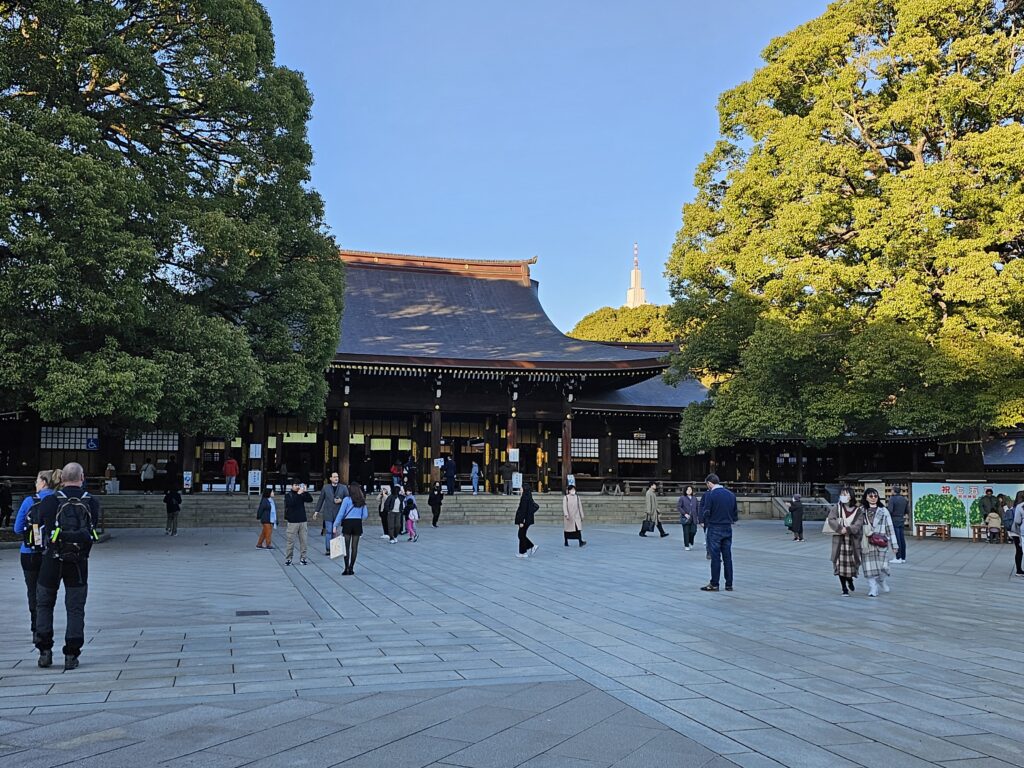
Over 100 years old, the orginal shrine was destroyed during World War II but was rebuilt in 1958. It’s a very impressive shrine and one of the most iconic in all of Japan.
Walking through the massive torrii gate to gain entrance to the shrine grounds instantly transports you from the hustle and bustle of Tokyo to the tranquility of a massive forest.
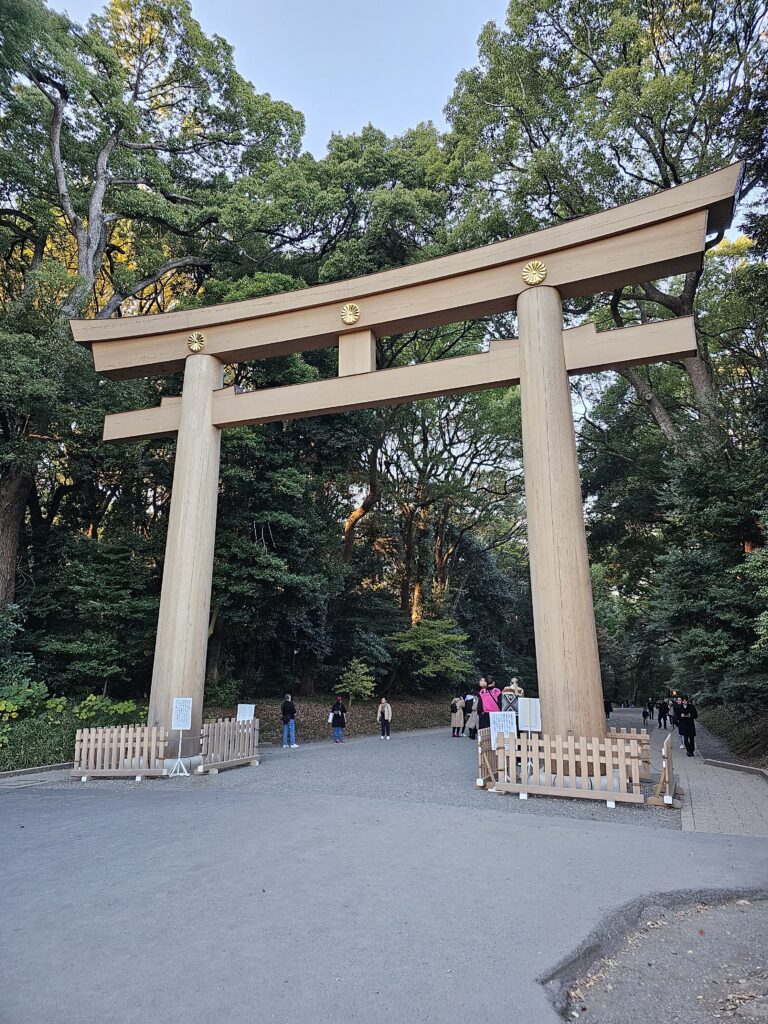
You can’t hear any city noises, can’t see any massive buildings protruding from the treeline, you’re quite literally in a forest…in the middle of Tokyo.
I’ve been here before but was more invested in the walk to the shrine and the shrine itself and didn’t quite take in the beauty of the overall surroundings. There’s over 100,000 trees that were donated from all over Japan that create this city forest. It’s a really amazing walk once you pass through the torri gate and the area in general is amazing, outside of the shrine.
There’s also pathways that stray from the main path to the shrine, so you can wander off as well. These other paths don’t have as many people either so it can be a quieter experience allowing you to further soak in the surroundings.
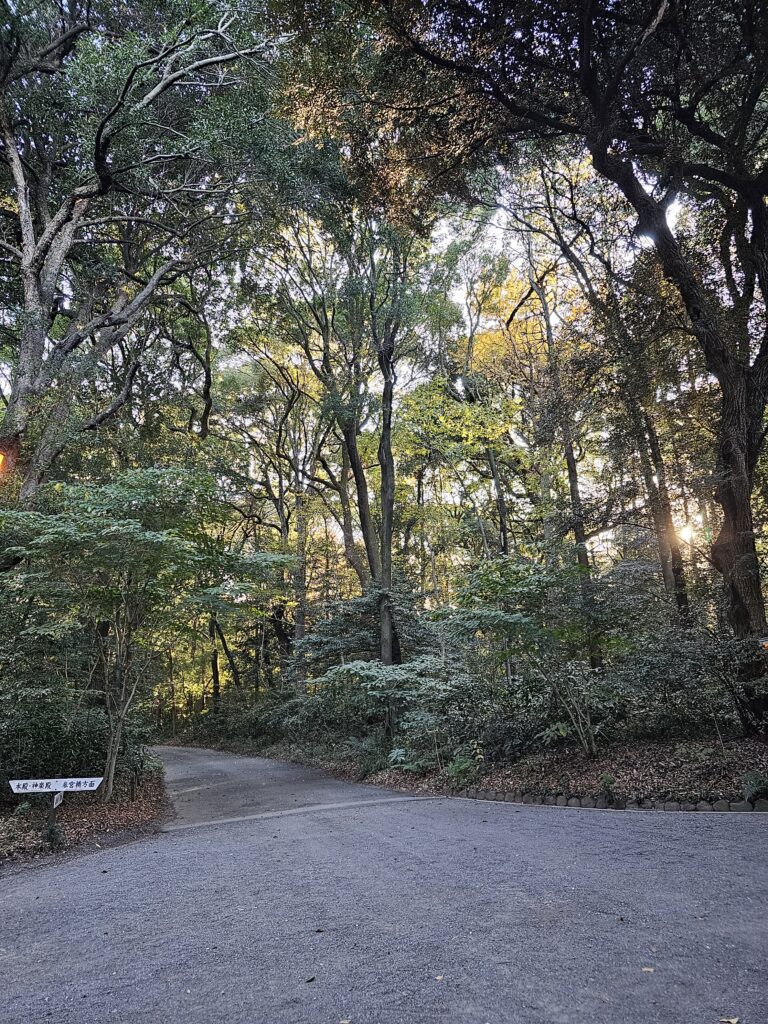
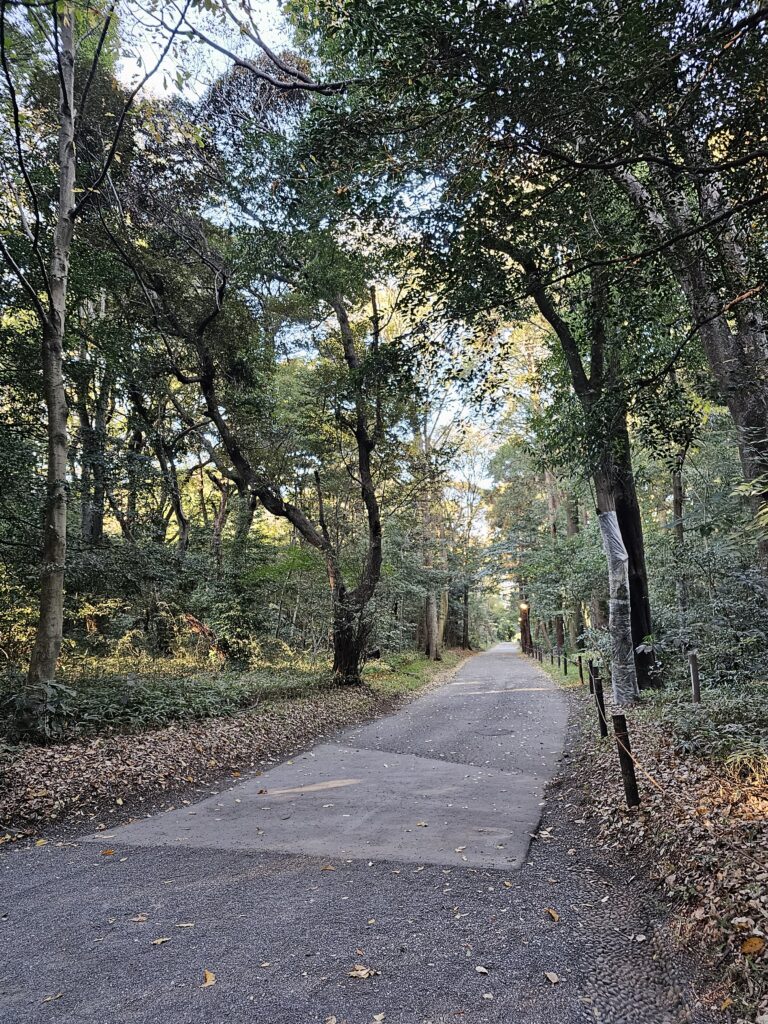
Yoyogi Park
Yoyogi Park is a large spacious park located in Shibuya, right next to Meiji Jingu Shrine. After visiting Shibuya, I happened to walk through it on the way to Meiji.
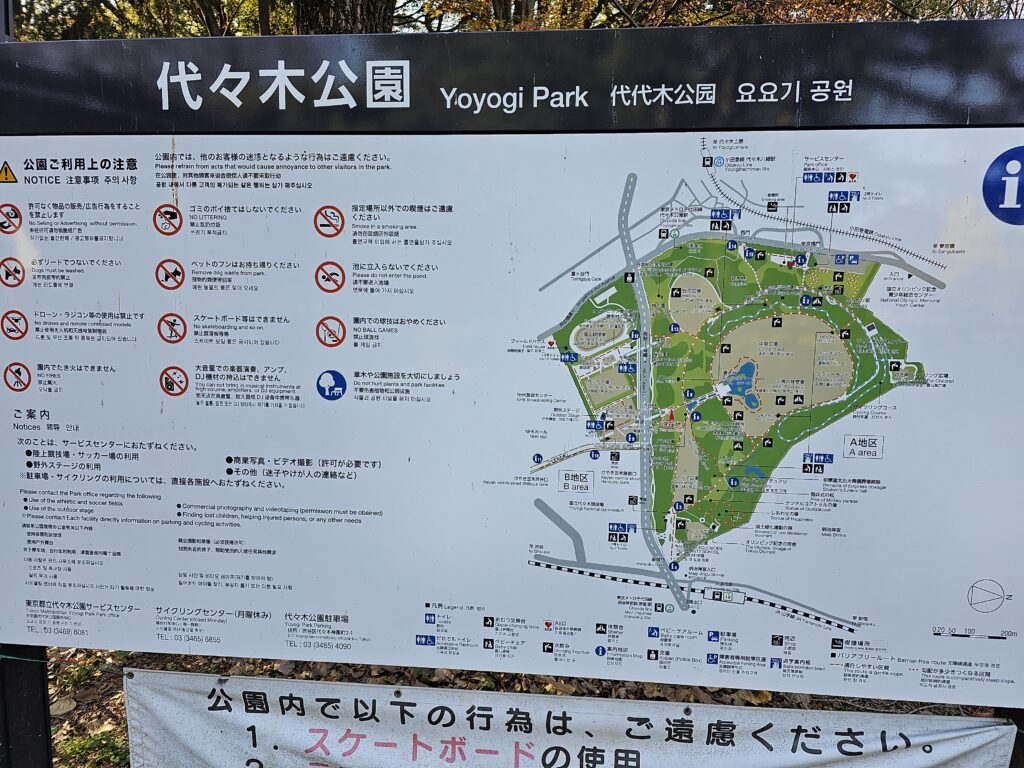
This doesn’t have any spectacular gardens or real standout features. It’s just a massive, pleasant park with huge lawn space, plenty of trees, a large pond, a big dog run, and plenty of space on the pathways for a nice jog or bike ride.
There’s a lot of benches located throughout the park where you can chill at and take a break after visiting Shibuya if you’re walking to Meiji Shrine. It’s a peaceful place.
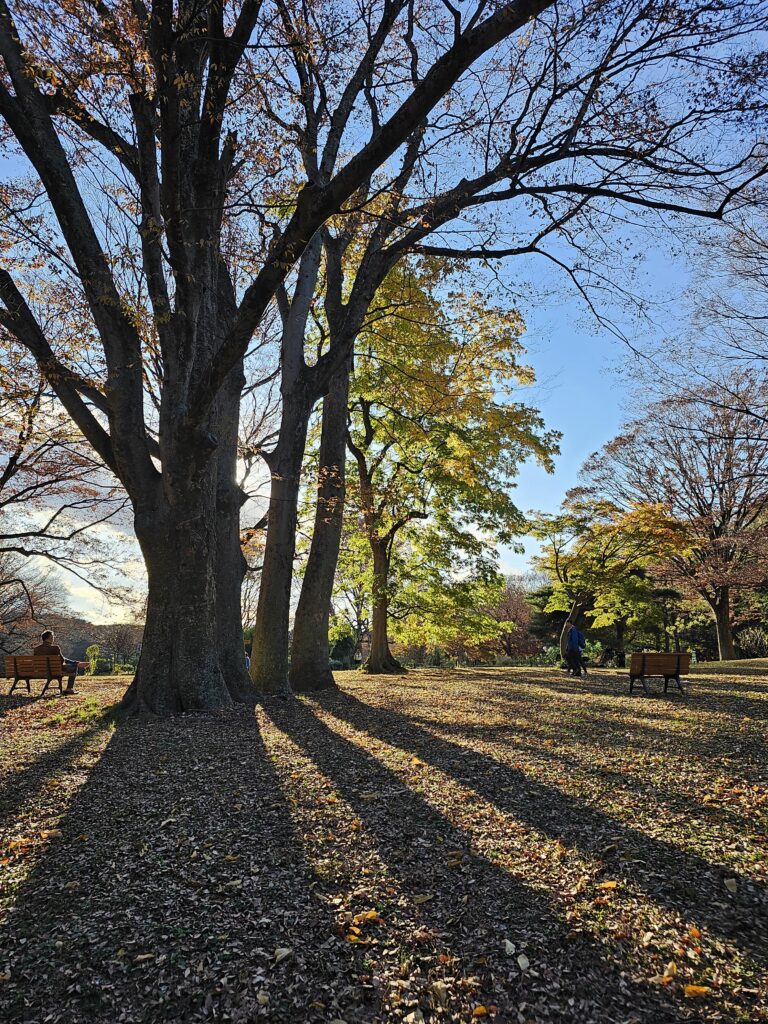
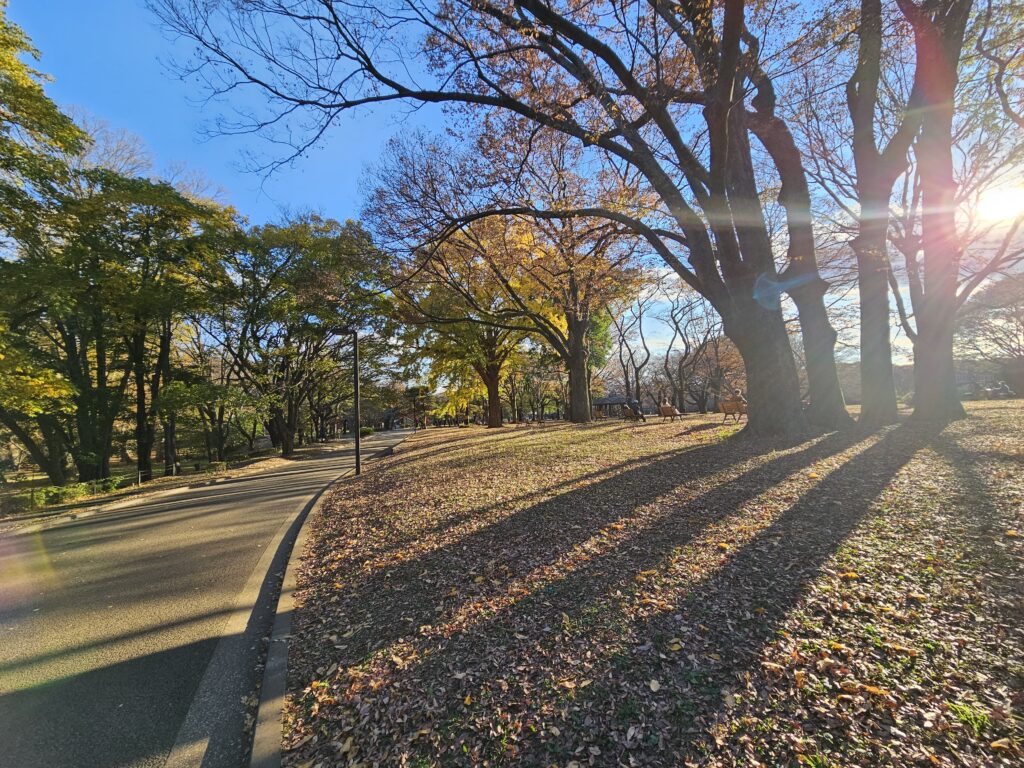
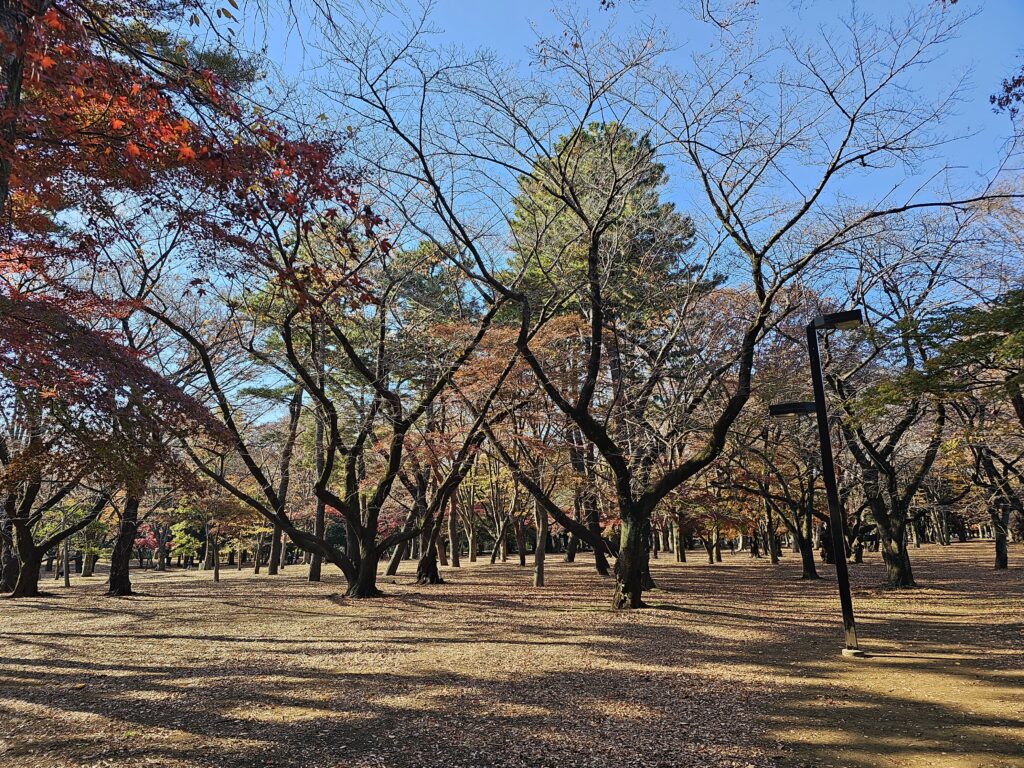
Inokashira Park
Inokashira Park is located in the Kichijoji district which is the western part of Tokyo. It’s home to a zoo and small aquarium and the popular Studio Ghibli museum as well. In the middle of the park the large Inokashira Pond, with bridges that cross over it. Rowing boats are available for rent as well.
The pond is the real centerpiece of the park. It’s massive. There’s plenty of pathways with benches around the pond where you can sit and just enjoy the surroundings. It’s a lively park on the weekend (I went on a Saturday), with a lot of people and families enjoying a nice stroll, jog, or taking their dog on a walk.
But you can also find areas that are more serene and quiet and you can just chill.
Even during December the ambience was quite nice and the trees full of color. Like all of these parks, I can only imagine what Fall and Spring must look like here. It must be amazing!
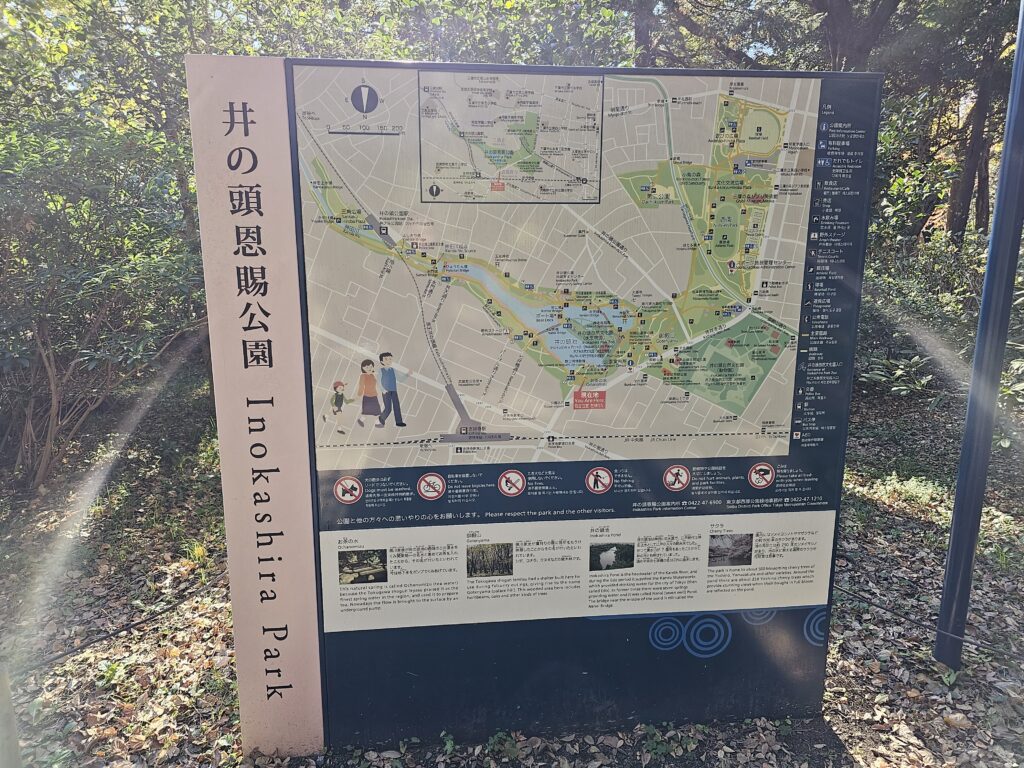
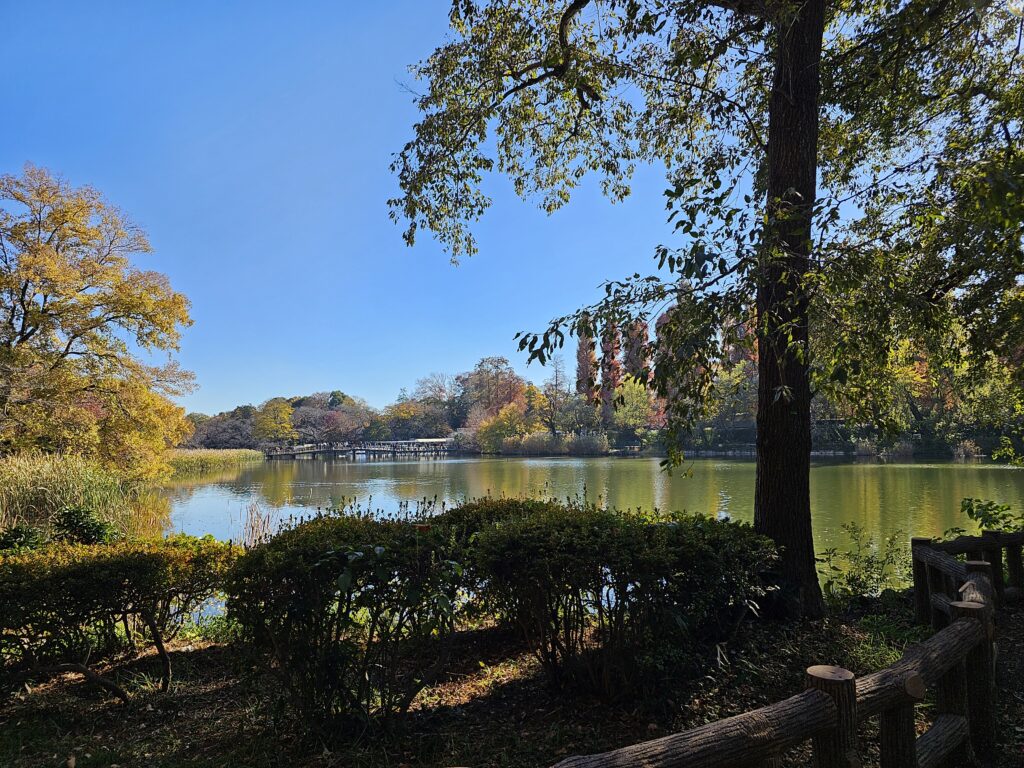
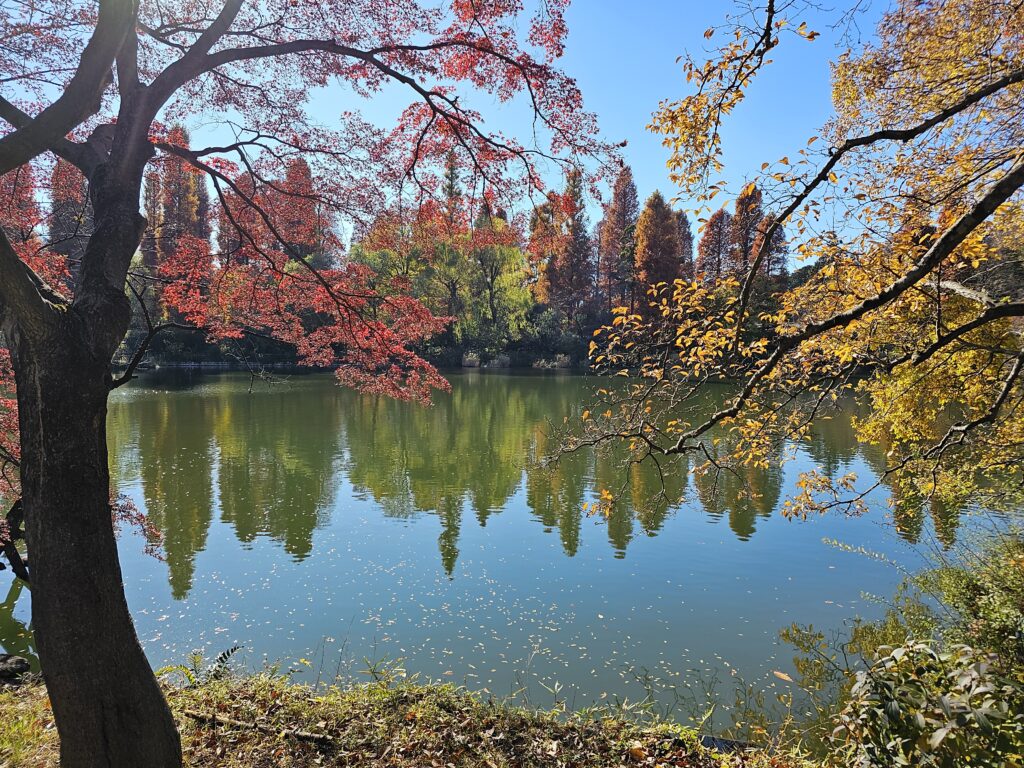
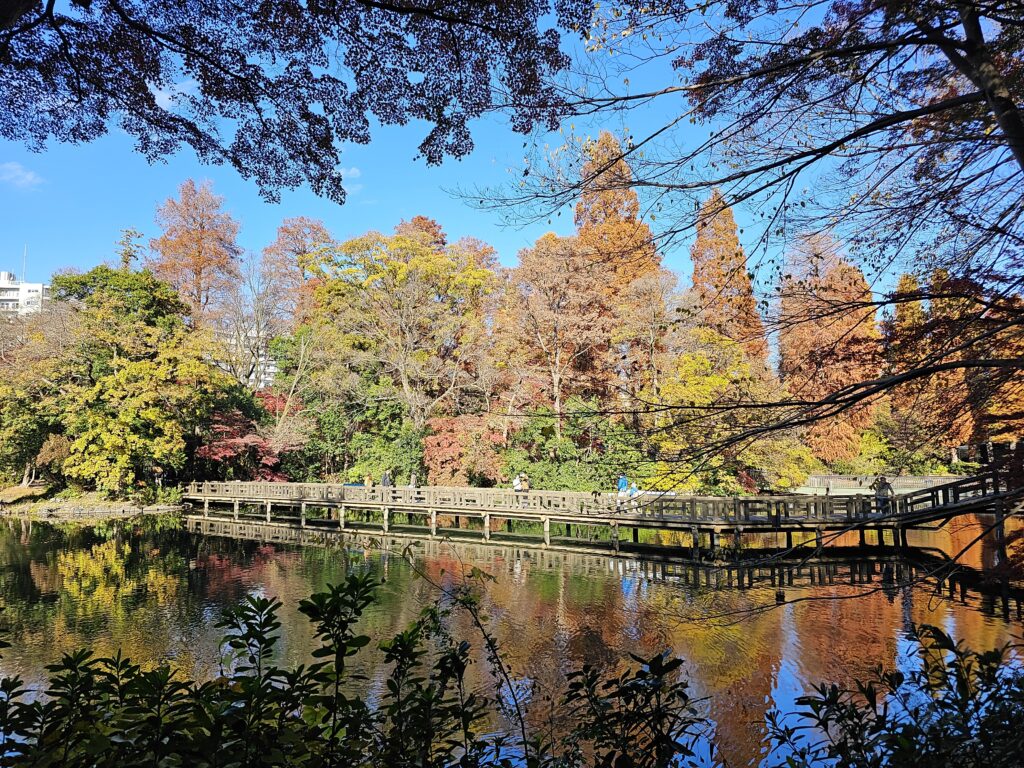
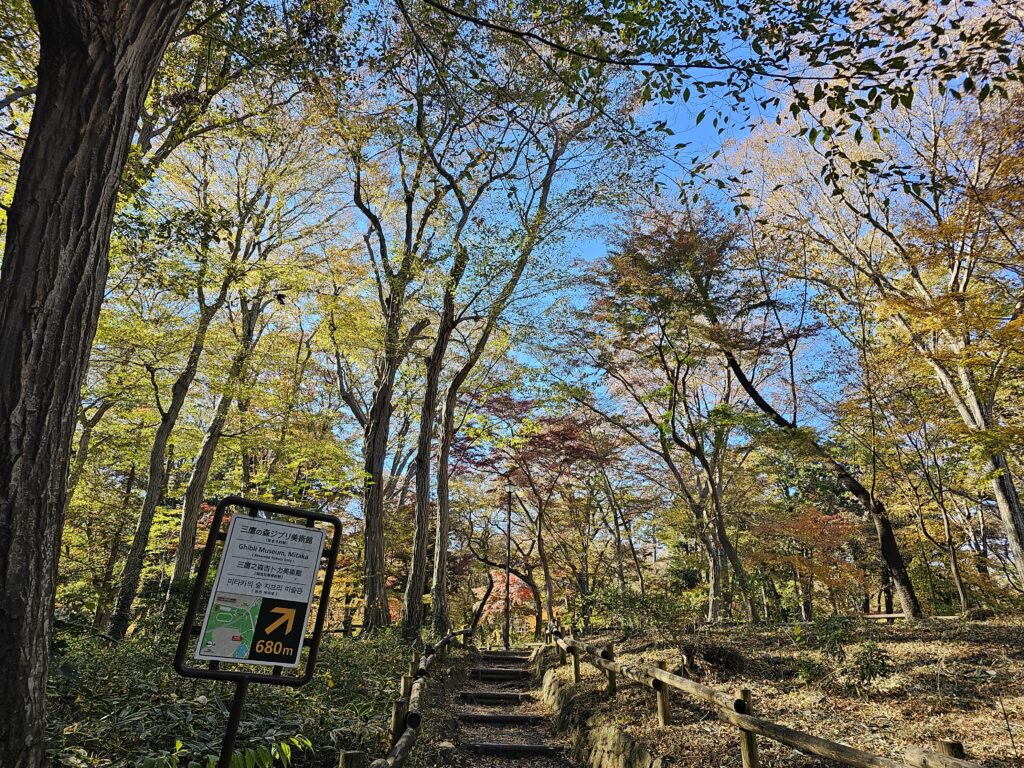
-
Flaming Shaved Ice Is A Must Try At This Cafe In Tokyo, Japan
The Background
Shaved Ice or “Kakigori” in Japanese, is a classic dessert in the Japanese culture. It’s a very old dessert. It dates all the way back to the Heian Period (794-1185) where wealthy elites enjoyed the refreshing treat. By the 1860’s shaved ice started becoming more readily available. Shaved ice shops started popping up and the general public was able to enjoy the tasty snack.
Today, shaved ice is still immensly popular. Considered more of a summer staple since it’s a great way to cool down during those intense summer days, it’s still enjoyed all year long.
The Evolution of Shaved Ice
Shaved ice has always been served with various toppings, syrups, and condensed milk. That remains the case today as well.
That doesn’t mean shaved ice hasn’t evolved over the many years of its existence. The toppings and syrups have gotten more creative and flavorful as well as the presentation itself. Cafe Lumiere took it to next level status by covering it in merengue and lighting it on fire.
Who would have thought you’d be able to enjoy a “flaming” shaved ice, lol. They really don’t go hand-in-hand with one another. But at Cafe Lumiere it’s the norm!
Cafe Lumiere
Cafe Lumiere is a tiny cafe located on the 4th floor of the Higashiyama building in Kichijoji. In a country full of all things “kawaii”, the ambience and atmosphere of Cafe Lumiere fits snugly into that category. It has the feeling of a children’s story book with many little trinkets hanging on the walls and from the ceiling.

The inside of Cafe Lumiere 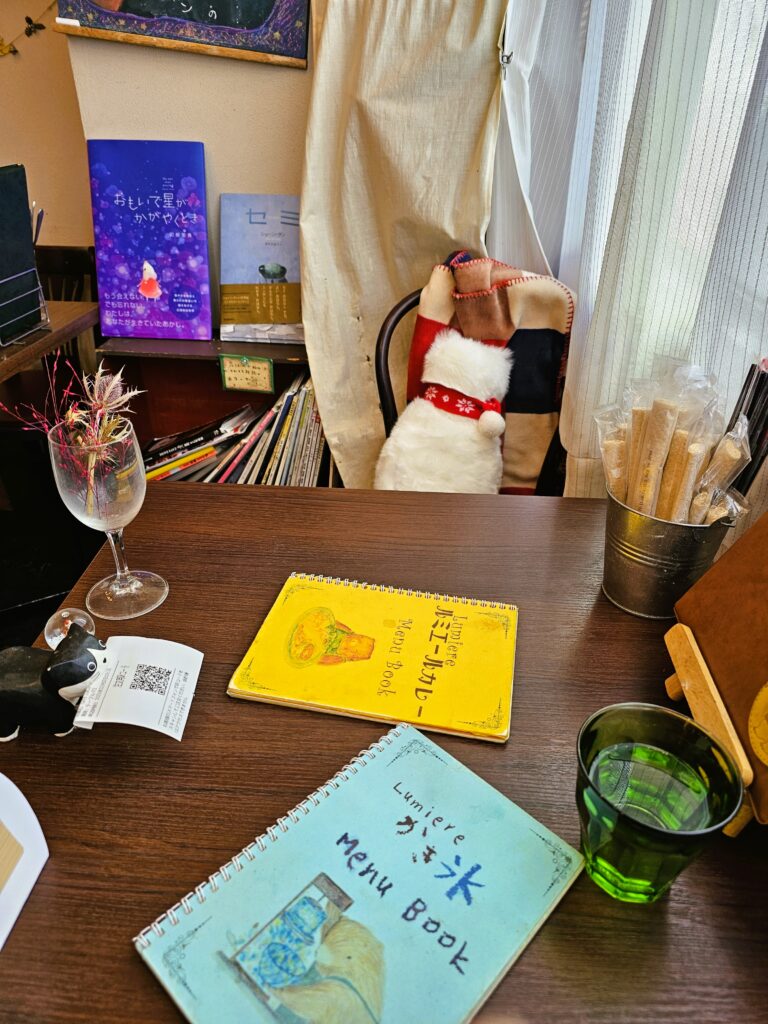
On each table you’ll find little Menu Book story books but you actually order off their online menu you scan to look at. Great ambiance in this cozy little cafe!
I came here specifically for the shaved ice. The choices here all looked incredible so it was a VERY difficult choice on what to get! The below is just a few of the options that were on the menu. I wasn’t sure if all of them were wrapped in merengue and lit ablaze and that’s what I really wanted to experience, so I went with the Lumiere special baked ice (1540 yen, $10.37 USD) and got a coffee (429 yen, $2.89) as well.
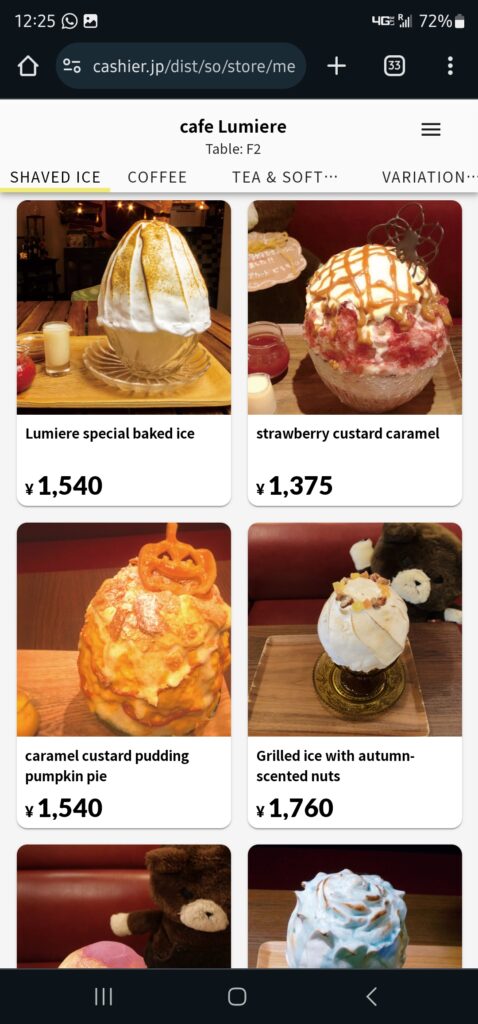
The Lumiere Special Baked Ice
This did not disappoint in either deliciousness or spectacle. Coming out coated with a shell of merengue, the shaved ice more resembles an egg than a bowl of shaved ice. It gets covered with some rum concocation and lit of fire right in front of you. It’s really cool to see!
Flaming shaved ice!
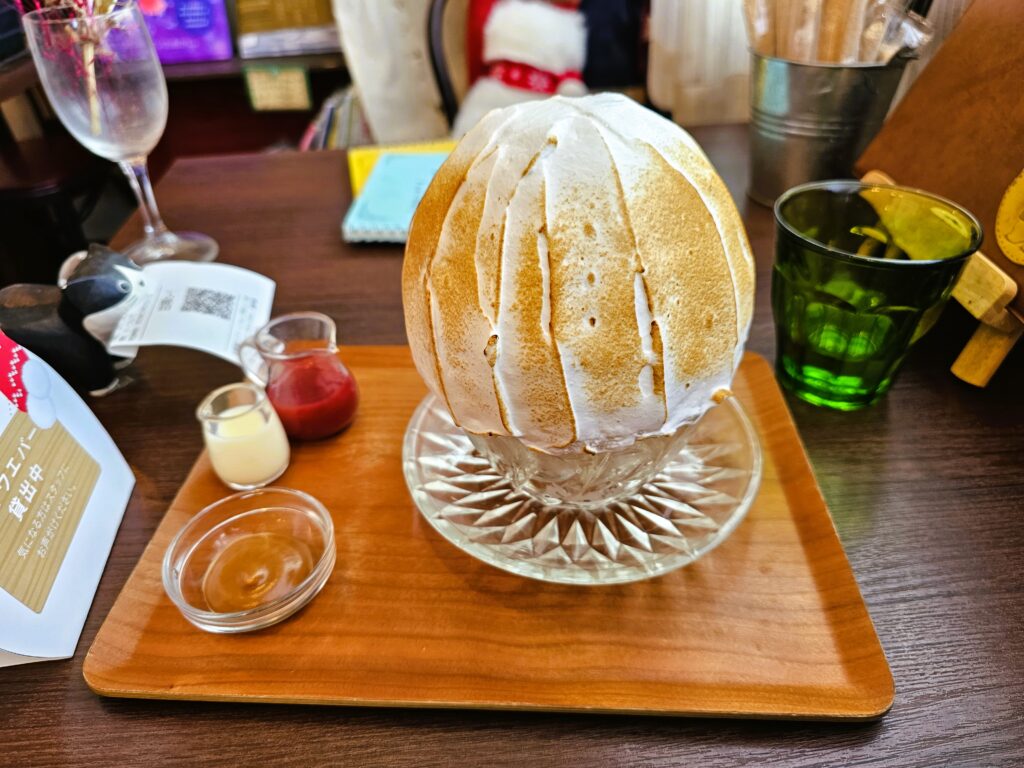
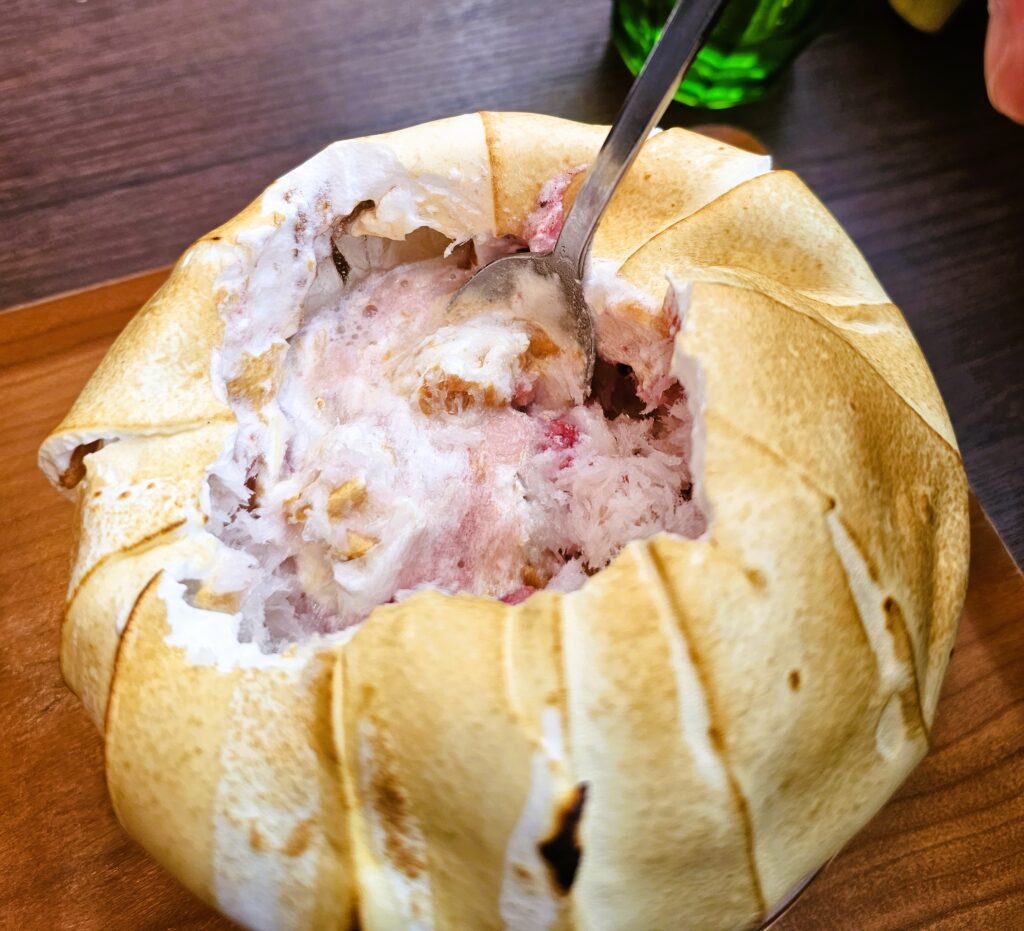
Once you dig in and break through the merengue, the shaved ice is extremely pillowy and soft with pieces of strawberry throughout. You get a few sides to dump into and mix the ice with. A strawberry sauce, carmel sauce, and I believe, condensed milk.
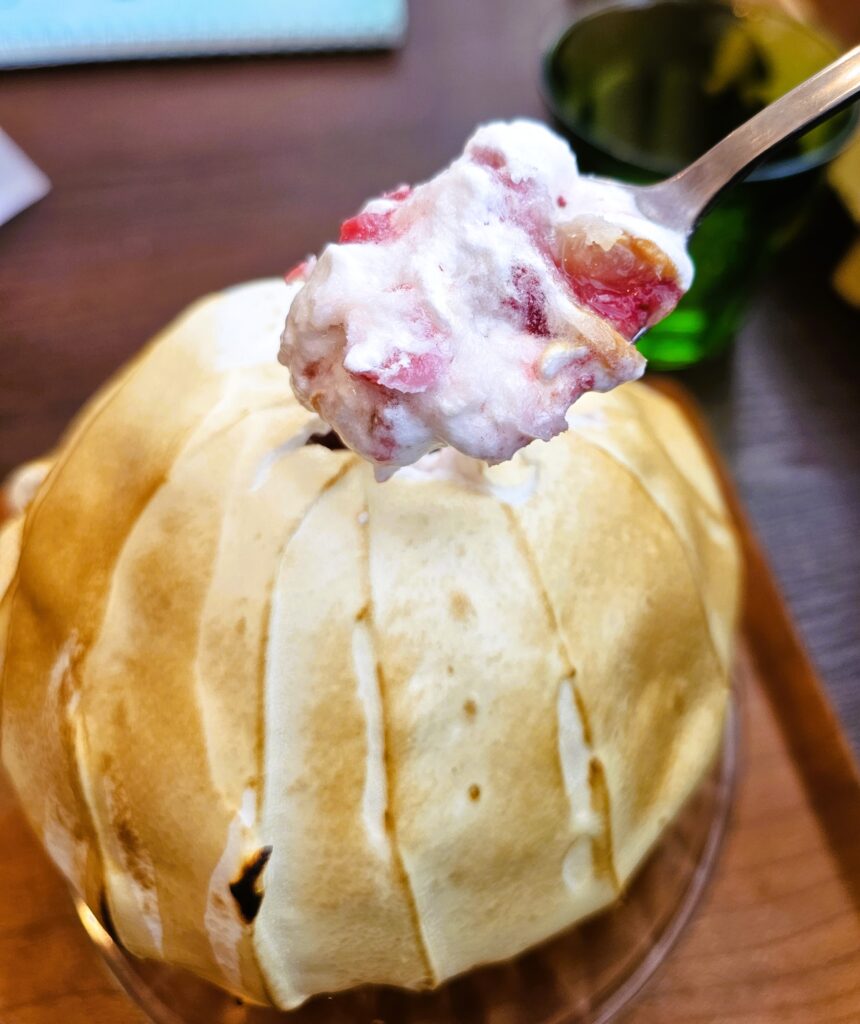
Mixing in some of the fluffy merengue added a different type of sweetness and texture to the shaved ice. Overall, just a REALLY delicious, satisfying shaved ice. It’s quite refreshing and light to boot!
If in the Kichijoji area, I’d certainly recommend stopping by Cafe Lumiere and giving one of their shaved ices a try. They always have different kinds depending on the season as well and it will be a fun experience.
Please note, when I went it was cash only so be sure to bring some cash if you plan on visiting!
Address: Higashiyama Bldg., 4F, 1 Chome-2-2 Kichijoji Minamicho, Musashino, Tokyo 180-0003, Japan
Hours:
Tuesday 12–6 PM Wednesday 12–6 PM Thursday 12–6 PM Friday 12–6 PM Saturday 11 AM–6 PM Sunday(National Foundation Day) 11 AM–6 PMHours might differ Monday(National Foundation Day (Observed)) 12–6 PMHours might differ -
You Can Get A Tempura Bowl For Less Than $4 USD At This Restuarant Chain in Tokyo, Japan
What’s Tendon?
In Japanese “tendon” is a shortened abbreviation for Tempura Donburi. In Japanese “ten” is tempura and “don” is donburi (rice bowl). The abbreviated tendon is a bowl of tempura covering a bed of rice.
Tempura is very famous in Japan and you’ll be able to find it everywhere in Tokyo. Tempura for those who haven’t had it before, consists of seafood (shrimp is a staple) and vegetables coated in a thin batter and deep fried. It’s about as delicious as you’d imagine!
There’s a dipping sauce comprised of dashi, soy sauce, mirin, and sugar, called tentsuyu that’s either drizzled over the top of the tendon or served on the side as a dipping sauce.
Budget Tempura in Tokyo
Looking to grab some cheap tempura in Tokyo? Look no further than the Tenya Tendon restuarant chain located throughout Tokyo and Japan in general.
In a city as large as Tokyo with endless alleyways filled with food, tempura is certainly one of the most popular food choices. Price ranges will vary of course, but Tenya Tendon was the cheapest I came across.

The touch screen menu at Tenya Tendon They have a touch screen menu which you use to place your order and you can choose English. The above is the standard tendon menu which is exactly what I was looking for.
The most expensive combo for 720 yen is about $4.92 USD. VERY cheap for a full on meal. I didn’t even get those combos opting for the Tendon meal for 560 yen ($3.83). It wasn’t about the difference in price, the Tendon meal just sounded better to me.
The Food
The Tendon meal consists of prawn, squid, sandborer, pumpkin, and green beans, along with a cup of miso soup. There’s a total of six pieces of tempura.
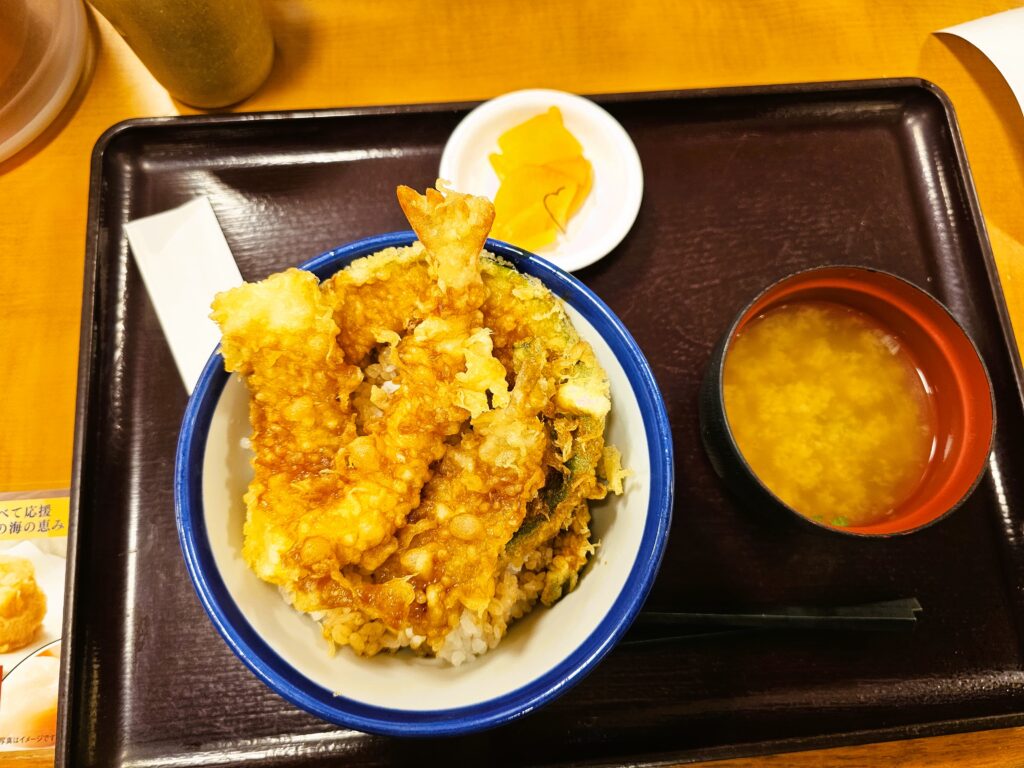
Quite a bit of food for $.3.83 USD! 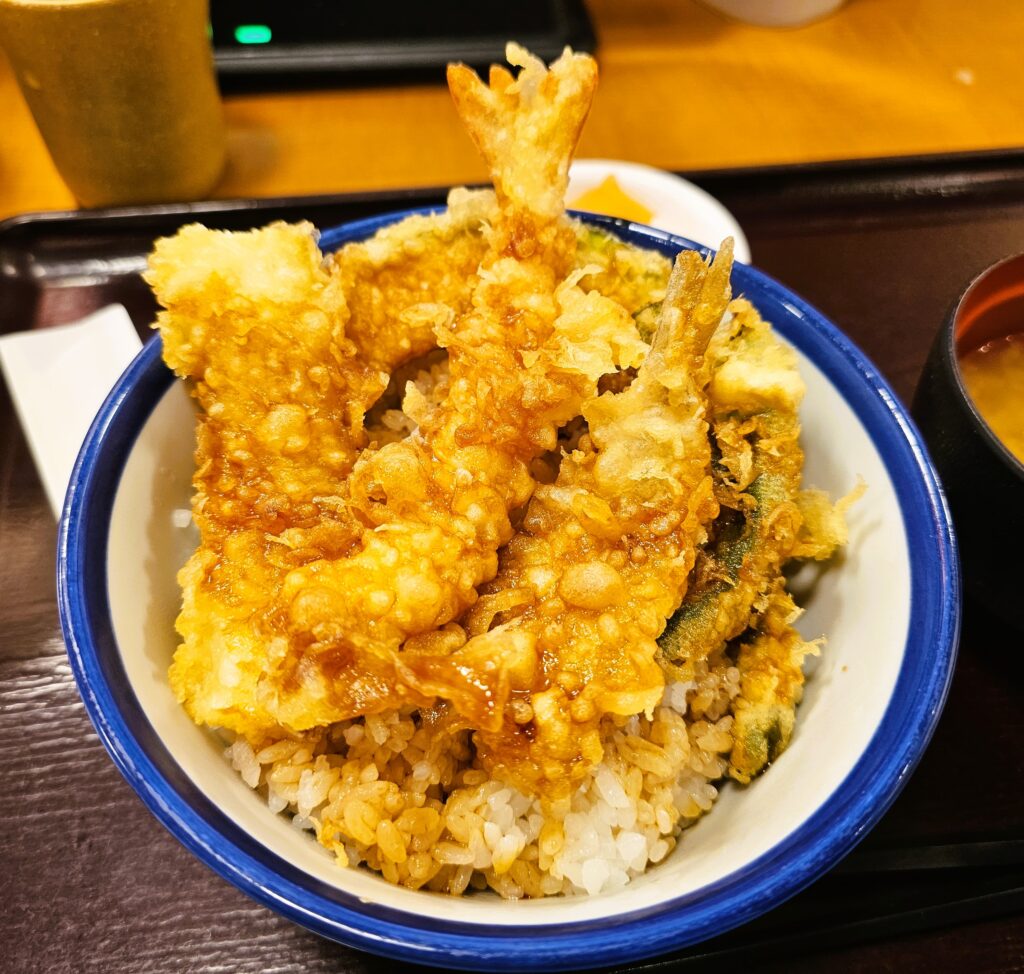
The tempura had a very light outer coating which was nice and crispy. It also wasn’t very greasy which was a pleasant surprise. The shrimp was sweet. The veggies tasty. I’d never had squid or sandborer tempura before and they were pretty solid as well!
The Tentsuyu sauce was drizzled over the tempura and the bed of rice. It’s dispersed well throughout and over the bowl and not further seasoning was needed.
The Verdict
I have to admit, expectations were not super high with this being more of a fast food type, budget friendly type place. Was it the best tempura I’ve ever had? Nope. But the quality and overall taste of the tendon bowl were fantastic for the price. A couple of shrimp, squid, and fish for less than $4 USD? Sign me up!
If you’re on budget traveling through Japan or if you’re looking to save some money for a delicious expenisve dinner later in the day, Tenya Tendon can certainly tide you over with quality cheap food!
-
Is Odaiba, Tokyo Worth Visiting?
Odaiba is an interesting district since it’s a man-made island in Tokyo Bay. Originially built as a defensive fortress to Tokyo against possible sea attacks back in 1603-1868, it has now evolved into a large enterntainment area. There’s an abundance of shopping in the area with large malls, most notably Diver City Plaza, which has ample restaurants as well. Also, of note, the National Museum of Emerging Science and Innovation is located in Odaiba as well.
The Odaiba station is about a 15-20 min metro ride from teamLab Planets. From Shinjuku Station it would be over an hour. The station is located right next to Diver City Plaza and the below attractions which makes it a very convenient location.
Three of the biggest attractions in the area are listed below.
Rainbow Bridge
Rainbow Bridge is a two-story bridge which connects Odaiba to Tokyo. It lights up at night and is supposed to be quite the sight. There’s an area in Odaiba with a great platform walkway around the area which is nice to be able to walk around to take in the sights. The view of the bay and the bridge here is spectacular. I imagine at night this view would be even better. The walkway leads down to the bay as well and there’s a paved path to stroll around.
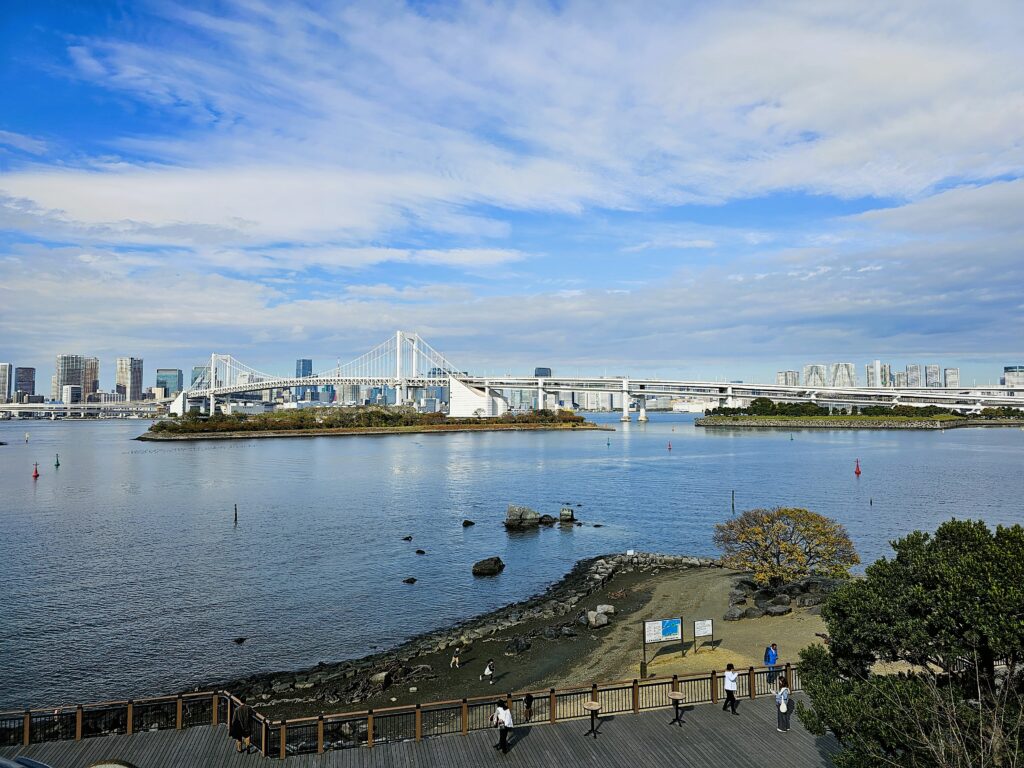
Rainbow Bridge Replica Statue of Liberty
Located in front of the Rainbow Bridge is a replica of the Statue of Liberty. Originally placed here to celebrate Japan’s ties with France back in 1998, the statue proved to be quite popular. In a sign of goodwill, France gifted Japan a replica of the statue in 1999 where it has remained since. The statue stands 40′ tall, about 1/7th the size of the Statue of Liberty in New York.
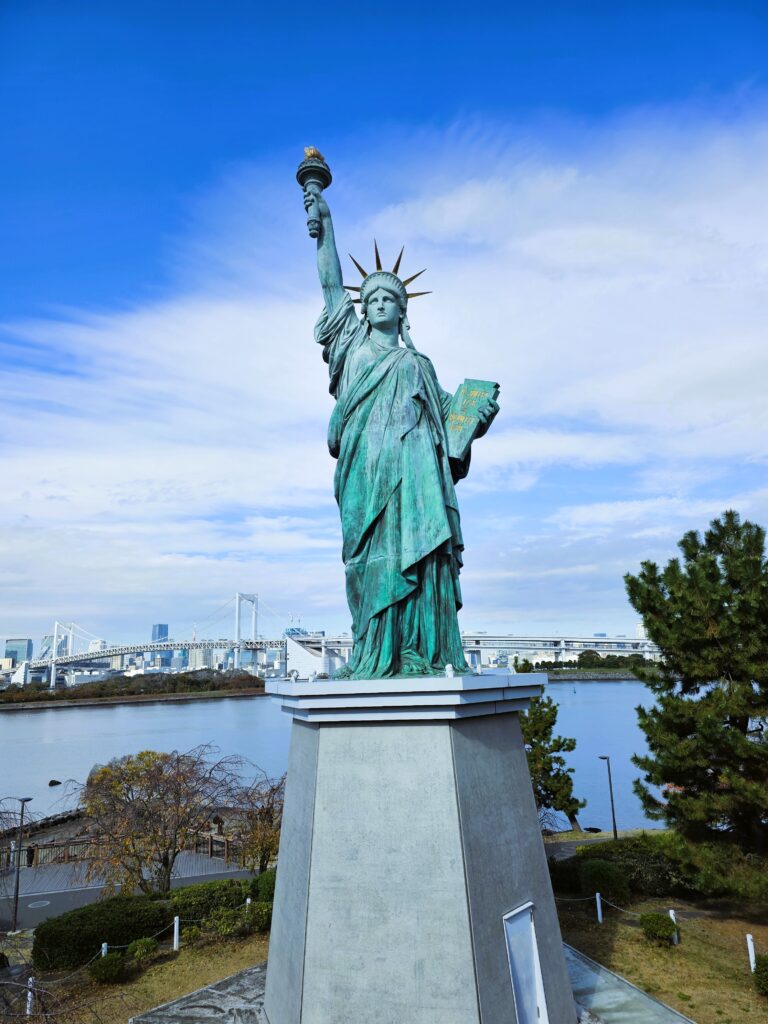
Replica Statue of Liberty Unicorn Gundam Statue
In my opinion, the coolest attraction in Odaiba is the “life-sized” Unicorn Gundam statue standing 19.7 meters tall. This is a full-scale statue of the RX-0 Unicorn Gundam.
The statue itself is very impressive. Even without any knowledge of the series, I was still blown away. The level of detail on the statue is really amazing. If giant robots really existed, surely this is what they would look like!
Nine times a day the statue goes into “destroy” mode and its frame expands and glows pink. This includes an accompanying light and sound show as well!
The schedule is listed below.
Daytime show: 4 times/day: At 11 am, 1 pm, 3 pm, 5 pm
Nighttime show: 5 times/day: At 5.30 pm, 8 pm, 8.30 pm, 9 pm, and 9.30 pm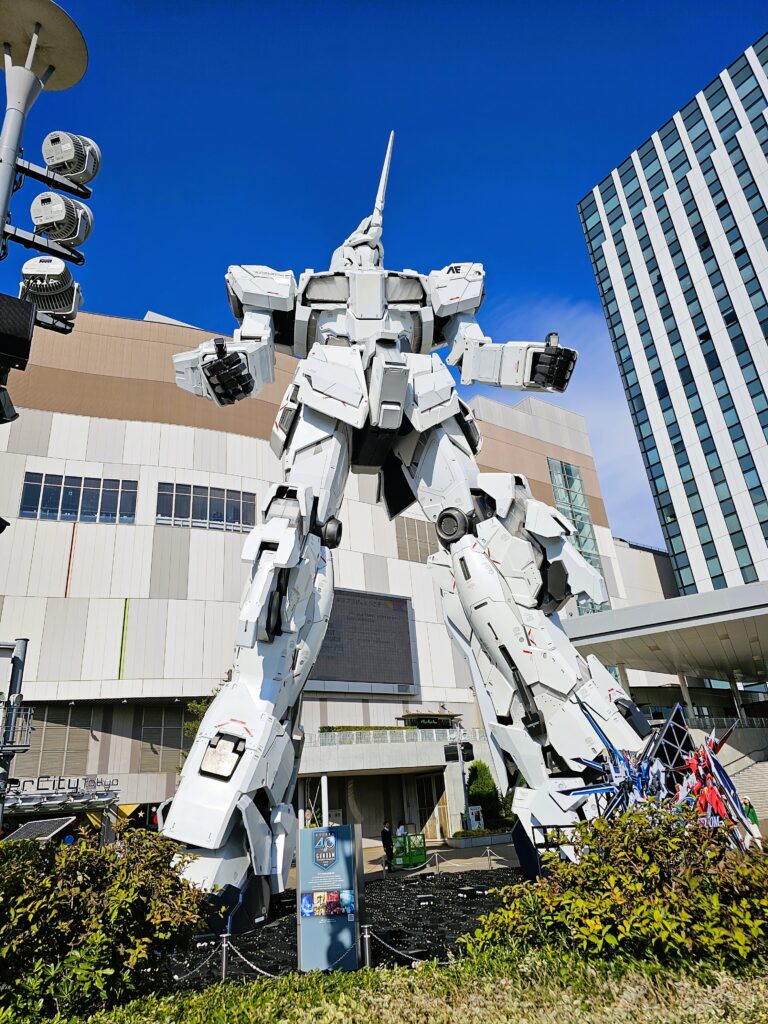
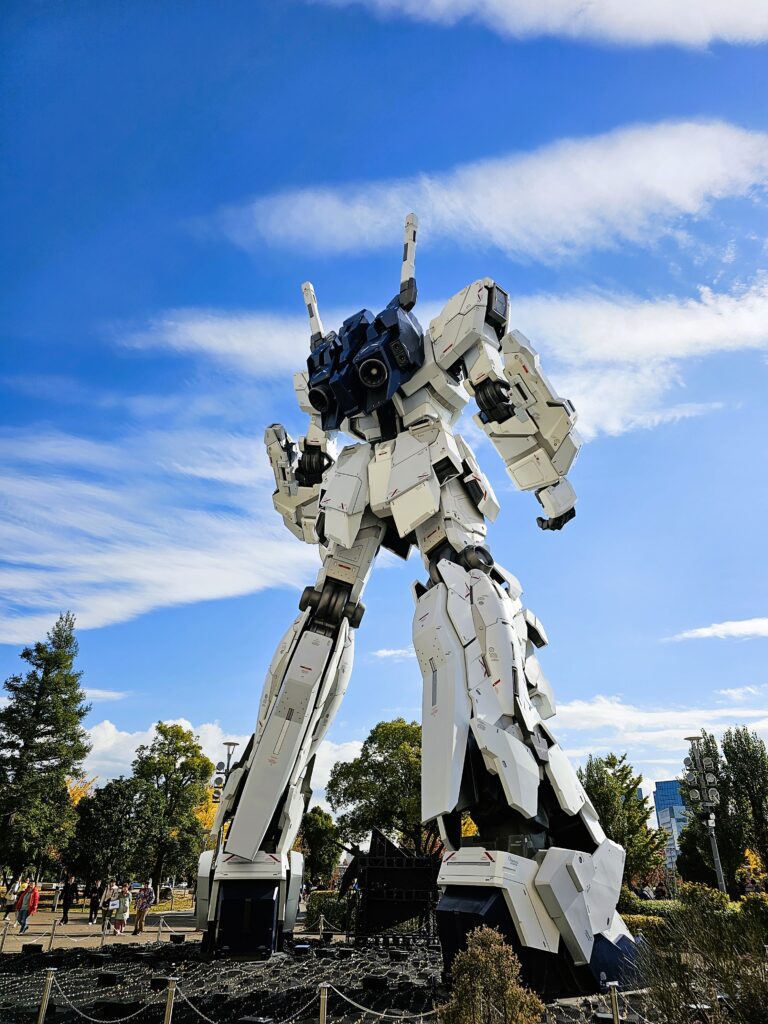
So…Is Odaiba Worth Visiting?
If you’re a Gundam fan or just someone that’s into nerdy stuff like giant robots (like myself) than yes! It will be worth it. The Gundam statue is captivating. You can truly admire and appreciate the level of detail that was put into it. I missed the transformation to “destroy” mode but it’s certainly something I’d love to see in the future.
If you’re in the area due to having visited teamLab Planets, have somewhat of an interest in seeing the Gundam statue, than it’s worth the short trip to visit.
The walk way around the replica Statue of Liberty and view of Rainbow Bridge is great, but I wouldn’t come here just to see those attractions. They aren’t worth the trip solely to see, in my opinion.
The shopping as well, namely Diver City Plaza, wouldn’t move the needle for me. There’s a ton of other massive malls in Tokyo that aren’t quite so far away from Central Tokyo.
So bottom line is if you’re not a fan of Gundam or giant robots, than I wouldn’t make the trip out to Odaiba. Although it’s a cool area, it’s a little ways out of the way. If you only have a few days in Tokyo to explore, it most likely is not worth your time.
-
Try This Hole In The Wall Tonkatsu Restaurant If Visiting Taito City, Tokyo
The Background
Tired after a long day of sight seeing and not wanting to venture out too far for food. I found Tonkatsu Sugita while searching for nearby food options from my hotel.
It has a respectable 4.0 rating on Google (which isn’t always the most reliable for food) so I decided to give it a shot since it was less than a ten minute walk from the hotel I was at and tonkatsu sounded quite good.
I’m certainly glad I gave it a try.
The restuarant is quite tiny – there’s a total of 20 seats, in a quiet part of Taito City. It’s been around since 1977 and has only had two owners during its run.
Where the restaurant was located was a nice change of pace from other bustling and packed parts of Tokyo.
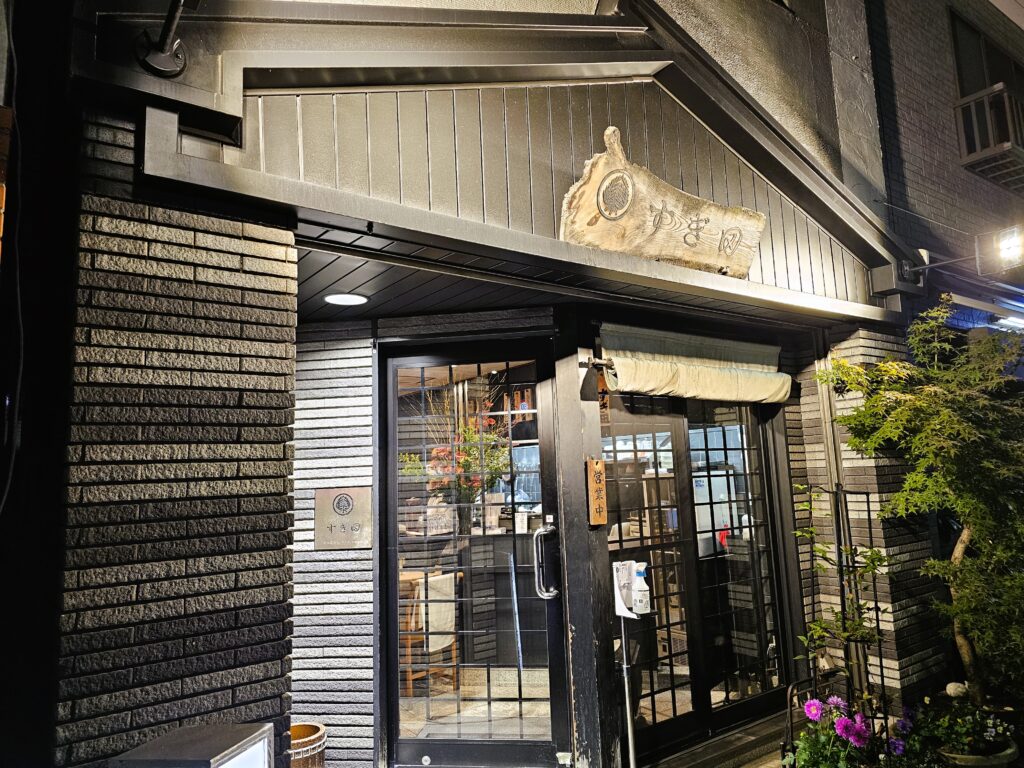
Most of the seating is located at a counter where you can watch the chef prepare your food right in front of you. There’s some additonal seating in the back for large parties as well.
Fortunately, they have an English menu so figuring out what to get is extremely easy. The menu is also small so it takes out a lot of the back and forth of having a difficult time deciding on what to get, which I’m certainly prone to! The small menu is explained here. I appreciate the seriousness of how the owner goes about selecting the pork and prepares the food. The quality of the food certainly shows his dedication to his craft.
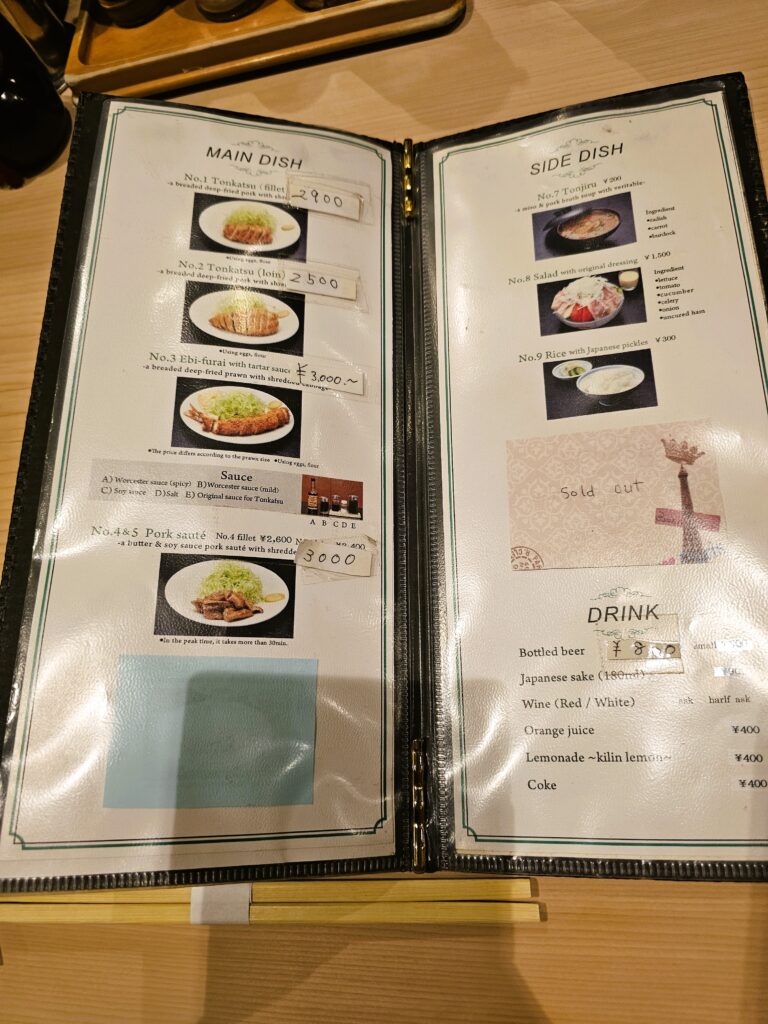
The Tonkatsu
I went with the No. 1 – Tonkatsu fillet (2900 yen, $19.63 USD) and added miso soup (200 yen, $1.35) and rice (300 yen, $2.03, $23.01 total).
Tonkatsu is also always served with a side of cabbage. There’s a few reasons for this.
Cabbage provides a nice crunch that complements the tonkatsu flavors and texture well.
It also helps to reduce the oil and can help with digestion. The cabbage can be eaten with dressing (which was provided here) or with tonkatsu sauce (essentially a thicker worcester sauce).
It definitely works with the overall meal and I can’t imagine eating tonkatsu without it.
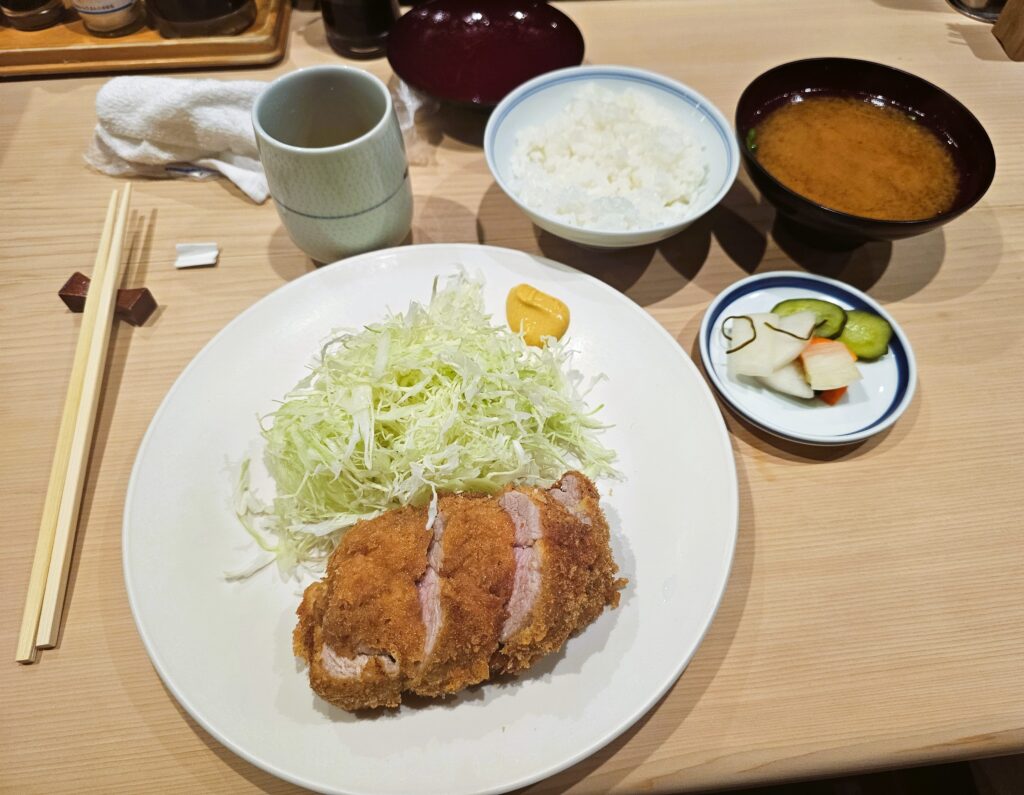

It took about 20-25 minutes for the food to come out. The chef was very friendly and you can watch him make the food right in front of you. Think of a sushi restaurant where you can watch the chefs prep the sushi right in front of you but with pork cutlets and huge pots of oil.
The tonkatsu was fried to perfection. The outer shell was very crispy and the meat was incredibly tender. It literally melted in my mouth. Taking a bite of the fried pork, cabbage, and rice was fantastic.
The miso soup was outstanding here as well. It had a deep, flavorful taste to it and was a great complement to the meal.
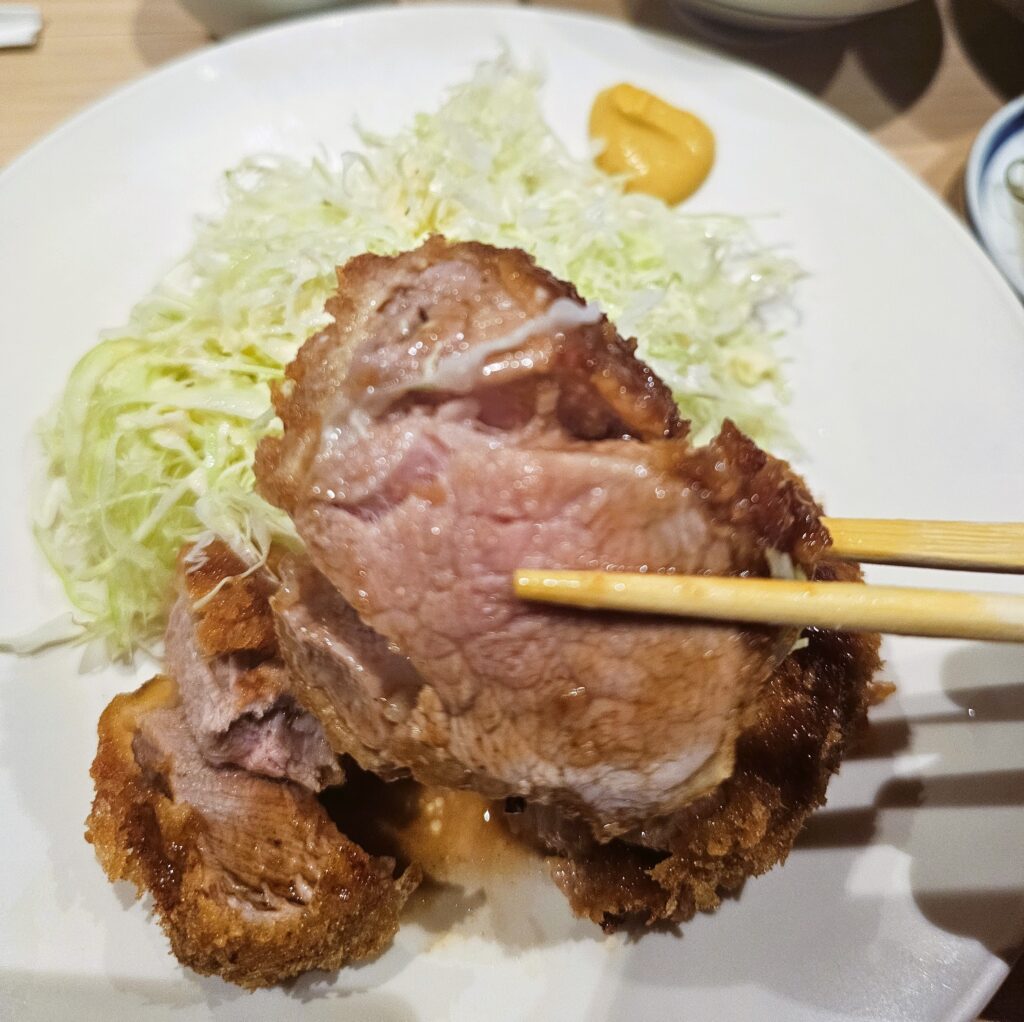
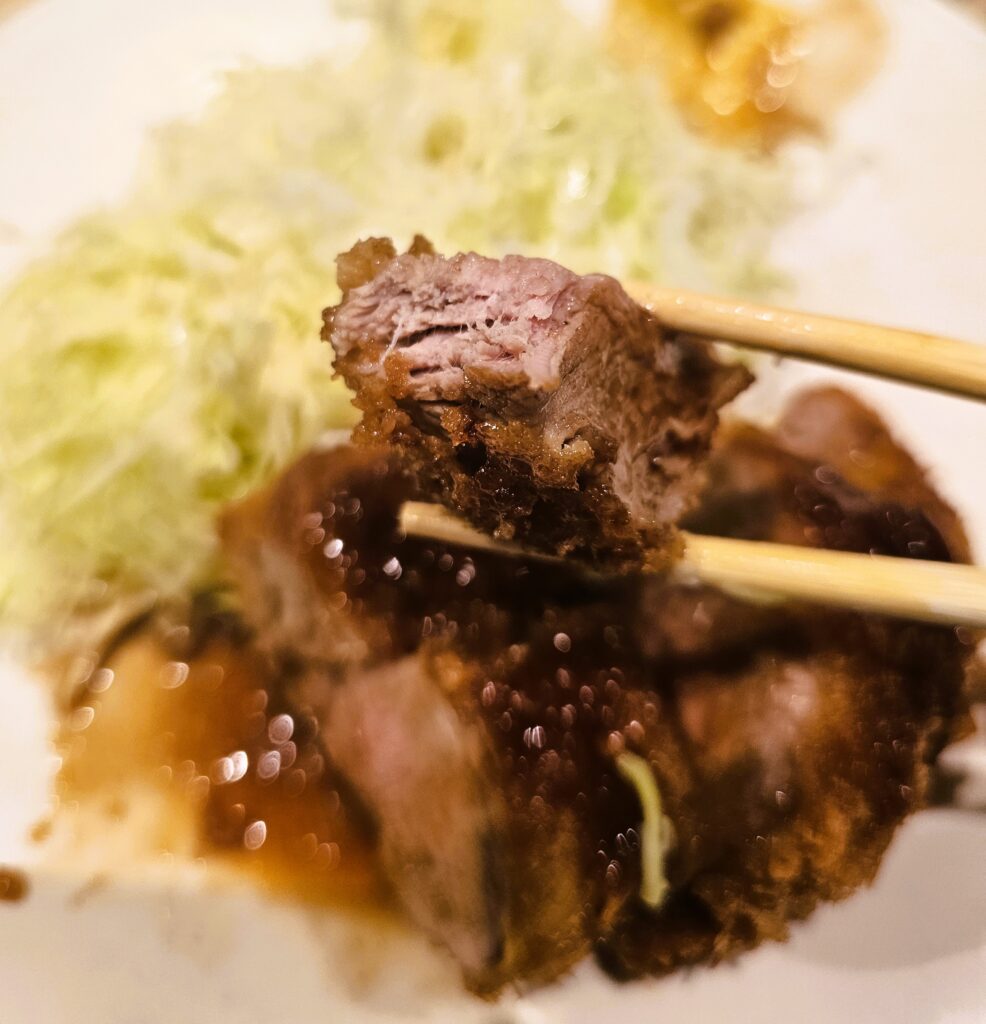
The Verdict
In my three weeks in Japan this was the best tonkatsu I had. Granted, I had it three or four times (which I think is a lot in three weeks, lol) but this was hands down the best. It wasn’t even a contest. The chef certainly knows his craft and the food reflected this.
The prices were quite reasonable for what I got – $23.01 – for everything and well worth it.
I later saw that it’s mentioned in the Michelin Guide with a Bib Gourmand rating, so this place is legit. I would definitely recommend checking the place out if you’re staying in the Taito City area. It’s also about a 30 minute or so walk from Asakusa if you wanted to grab some food after visiting there. It’s worth the walk.
3 Chome-8-3 Kotobuki, Taito City, Tokyo 111-0042, Japan
-
Why The Tsukiji Outer Market Is A Must Visit In Japan
The Tsukiji Market has been in existence for 80+ years. Despite the main fish market closing in Tsukiji and relocating to Toyusa the outer market still remains. The outer market is home to wholesale retail shops, produce, fish, as well as many, many restaurants / food stalls. The seafood here is some of the freshest in the city since it comes directly from the Toyusa fish market.
There are a TON of food stalls / restaurants within this vicinity so if you’re a foodie, this is a must stop.
Despite the main fish market moving to Toyusa in 2018, the outer market remains just as popular amongst both domestic and international tourists. Expect big crowds here!
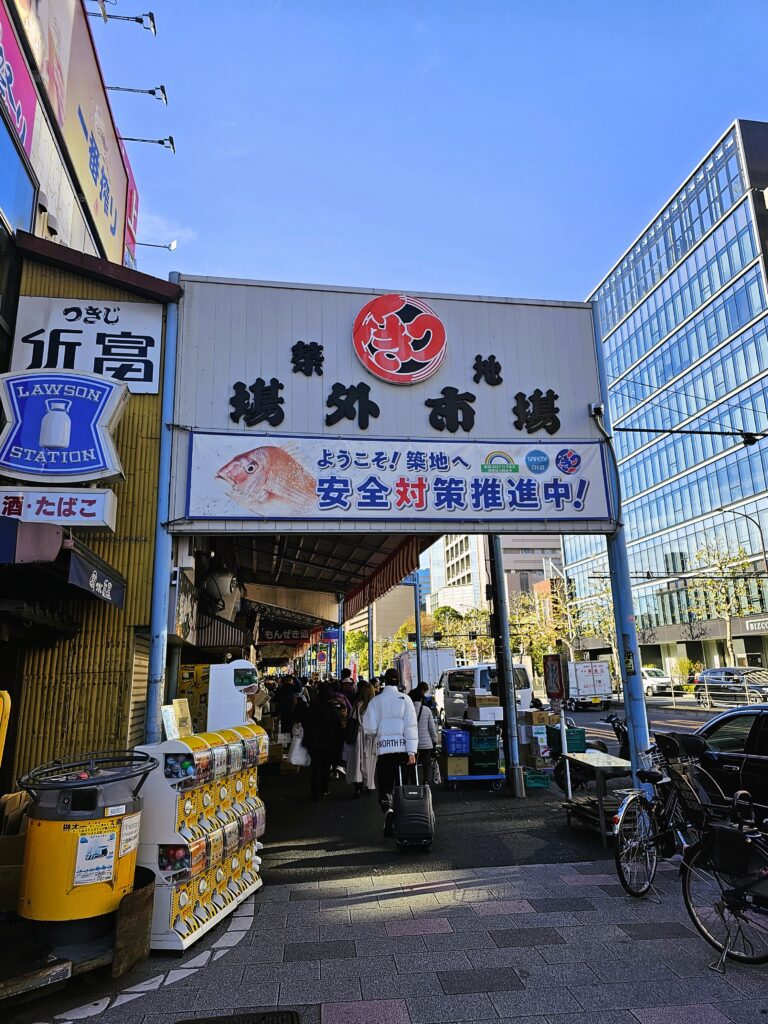
One of the entrances to Tsukiji Outer Market 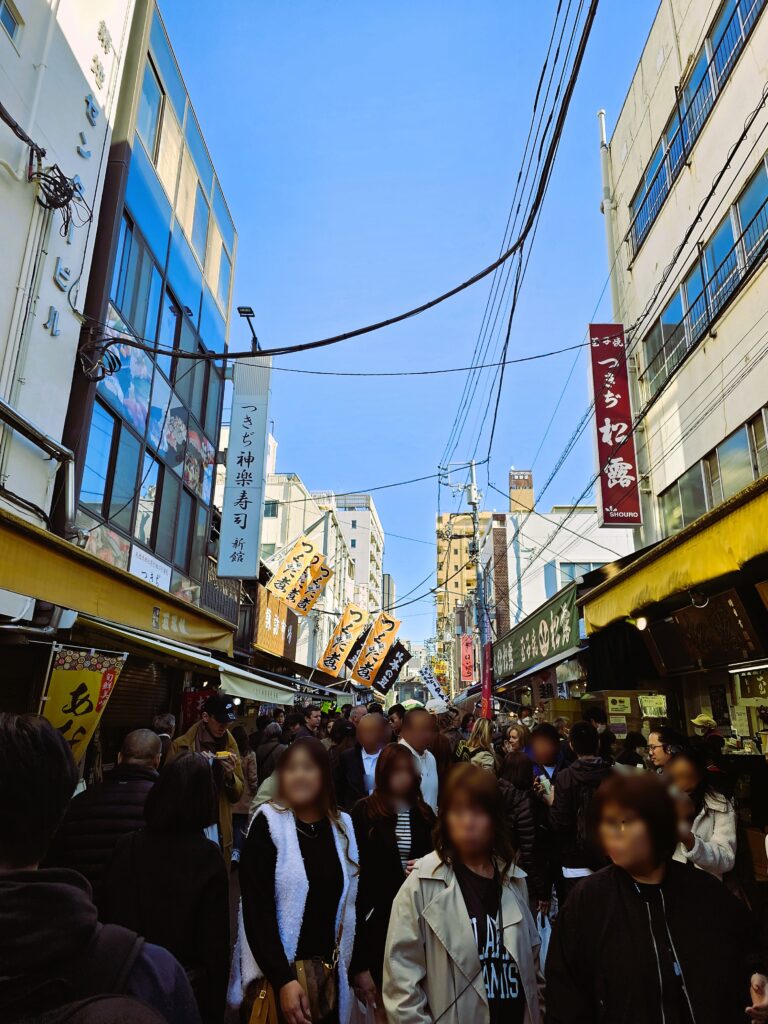
Food everywhere, with lots and lots of tourists The Food Experience
There’s going to be too much food here to try it all (for most people). Budget may also play a part in what you look to purchase too. Depending on what you’re looking to eat, certain items can certainly get pricey. But that’s what’s nice with such a large and varied market, there’s something for all budgets to be found here.
Here’s what I got on my visit:
Mochi and Tanghulu
This shop near one of the entrances to the market (photo above) specialized in strawberry mochi and tanghulu. This was just too tempting. I HAD to start off the food tour with this, it looked too good!
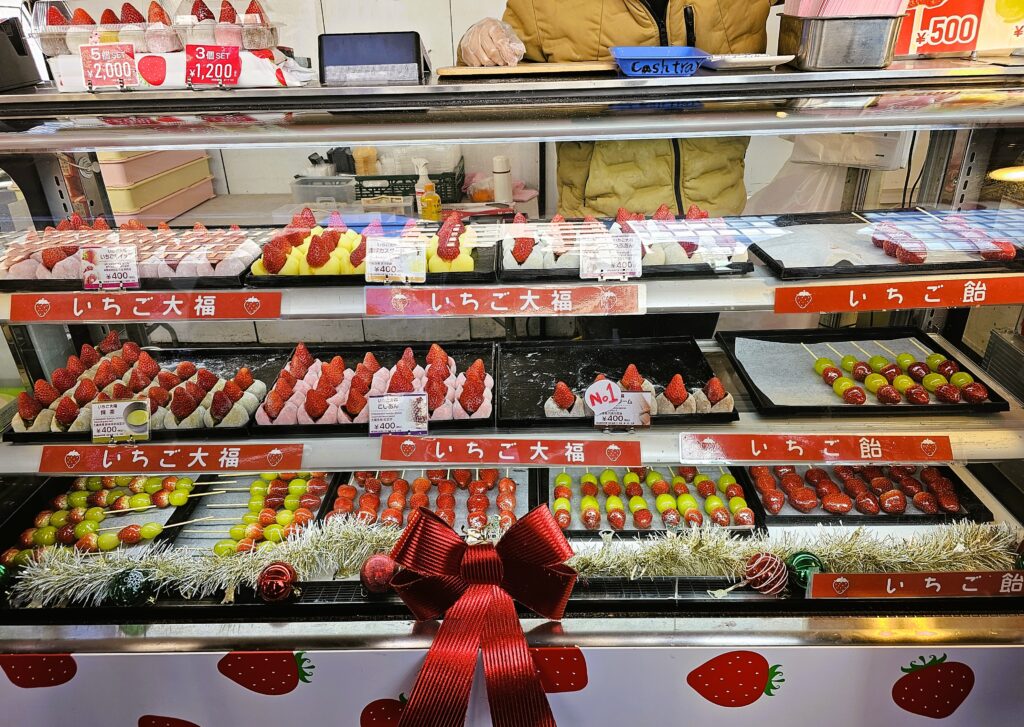
I decided on going with the strawberry flavored mochi with strawberry (400 yen, $2.83 USD).

The mochi was incredibly soft, chewy, and very fresh. It was also filled with red bean paste and powdered sugar( the powdered sugar was a nice surprise!). The strawberry is very juicy. It wasn’t overly sweet but I really couldn’t notice due to the sweetness of the red bean paste / powederd sugar.
I couldn’t just get the mochi with all that delicious tanghulu on display. I opted for the grape and strawberry tanghulu (600 yen, $4.24 USD).
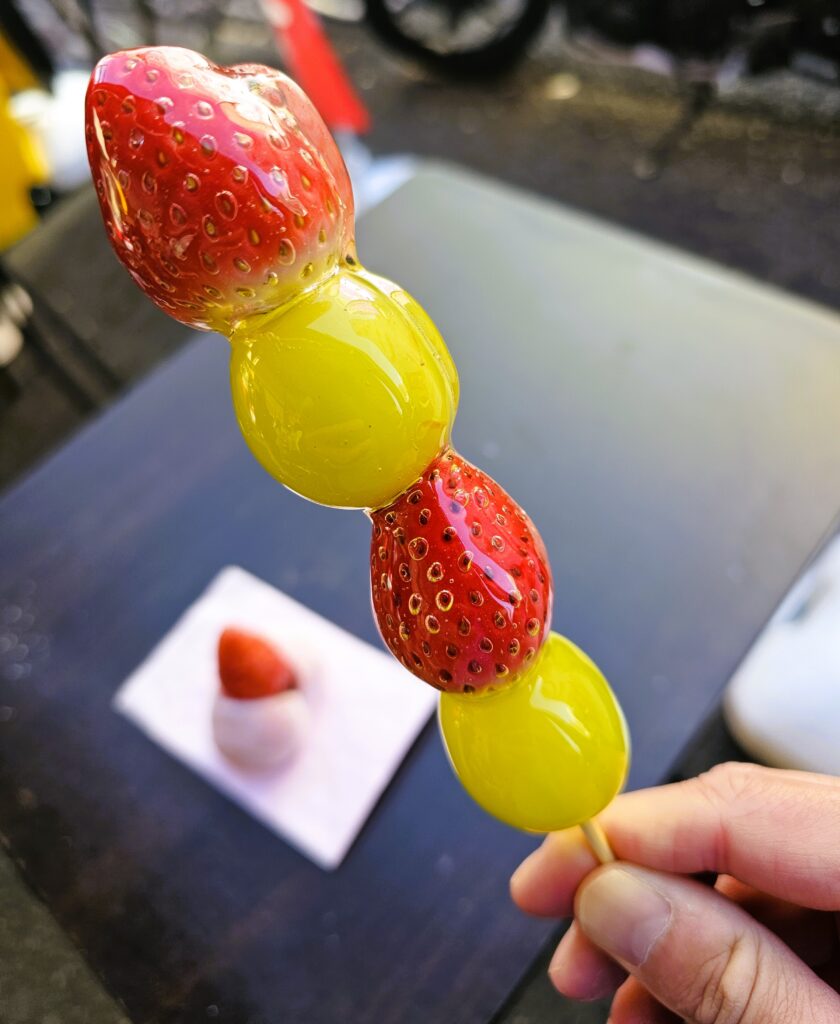
Both the grapes and the strawberries were very sweet and juicy in their own right. I don’t want to understate the juiciness of these grapes and strawberries. These fruits EXPLODE with juice when you bite into them. The sugar coating provides additional sweetness of course, as well as a hardy crunch.
Tamagoyaki
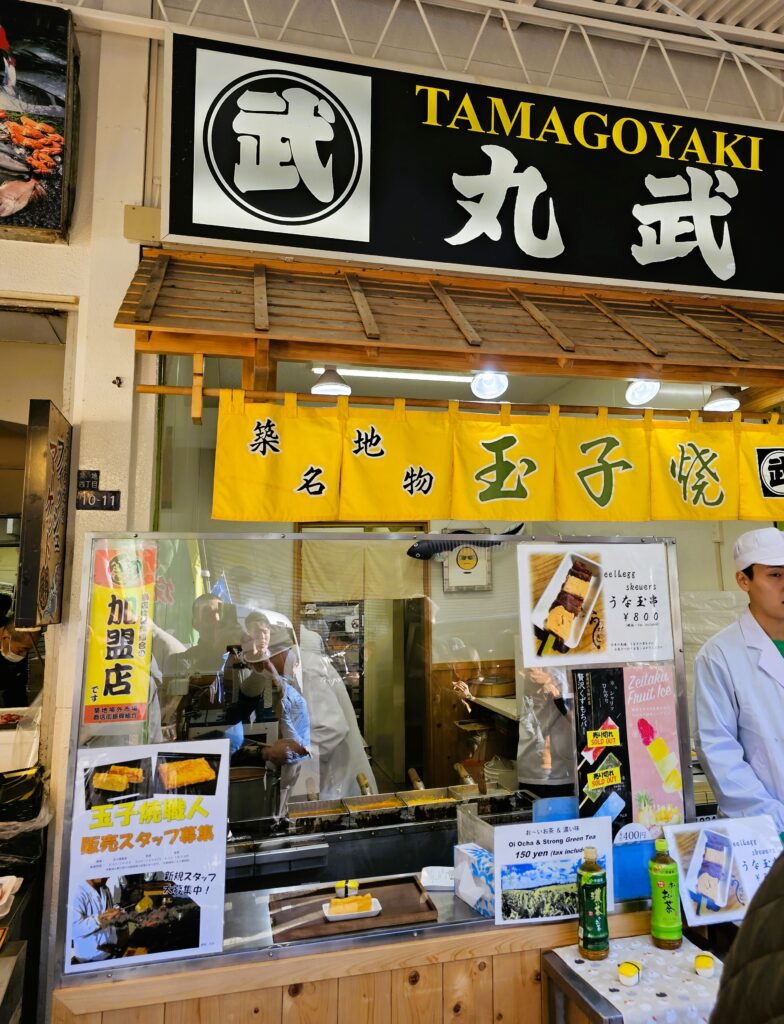
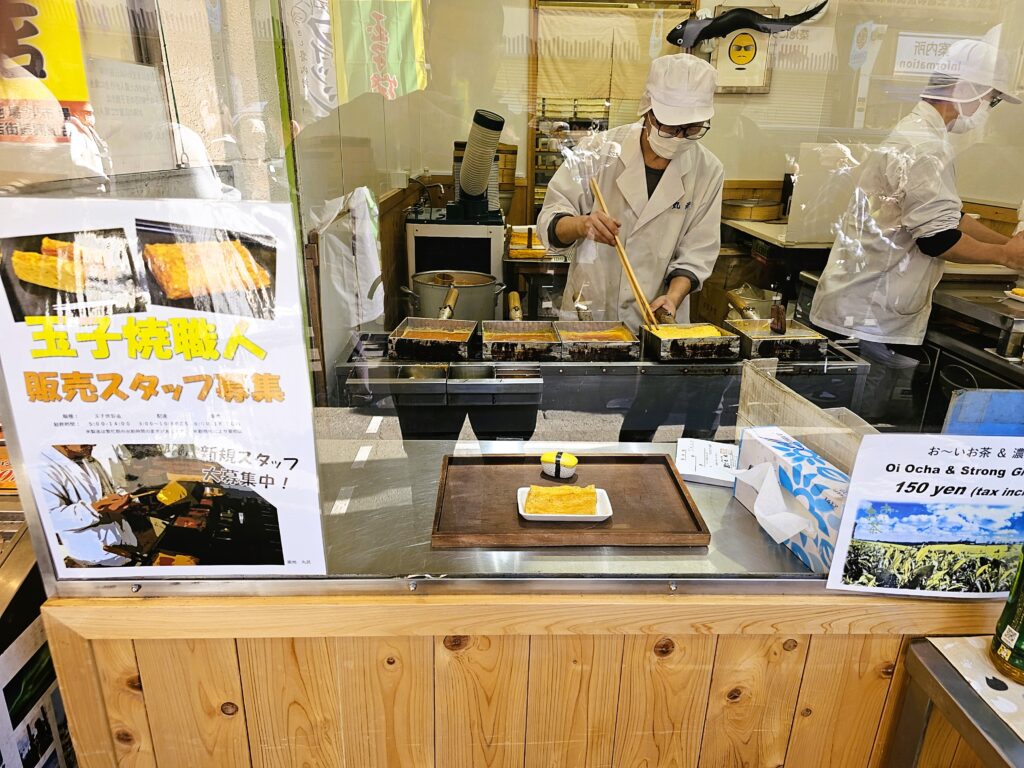
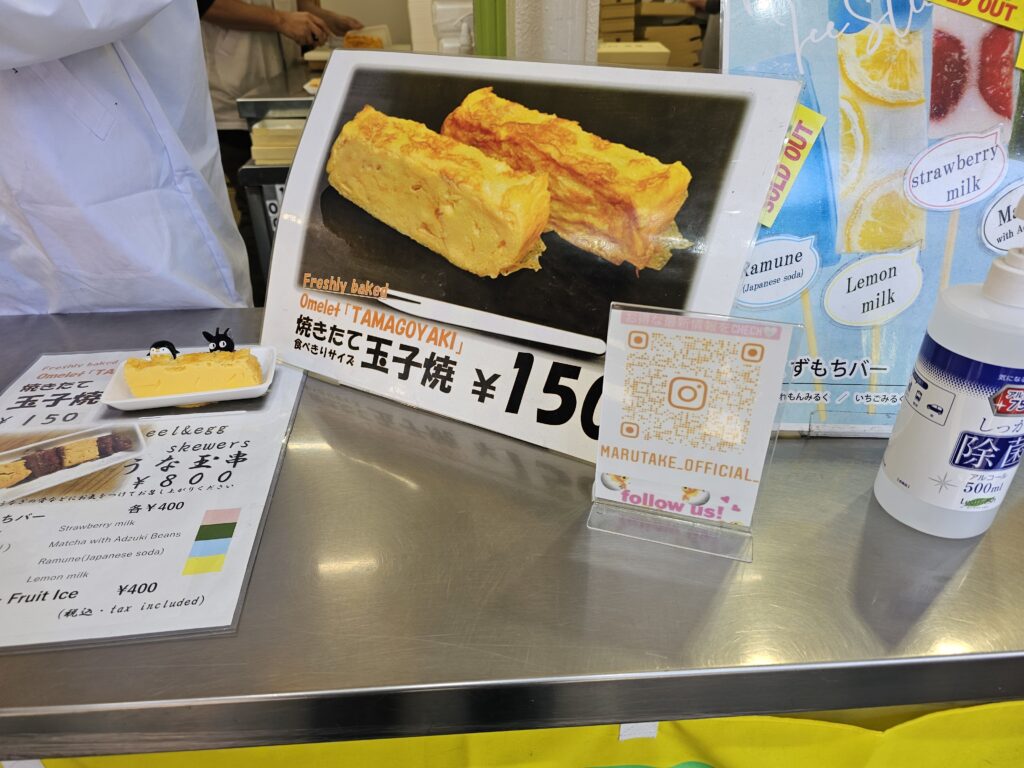
What exactly is Tamagoyaki? It’s a sweet and savory type of Japanese type of omlette. I’d never had it before but had heard of it. I saw this restuarant and figured today was the day to give it a try! The price for a block of it was only 150 yen ($1.06) too. Good deal!
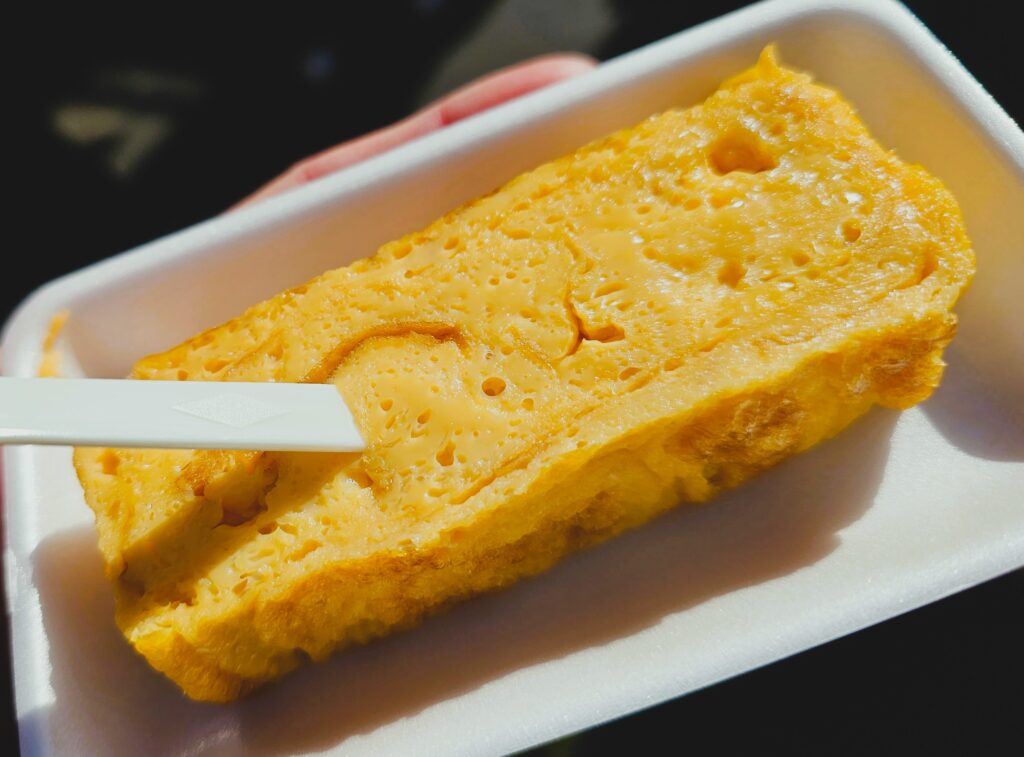
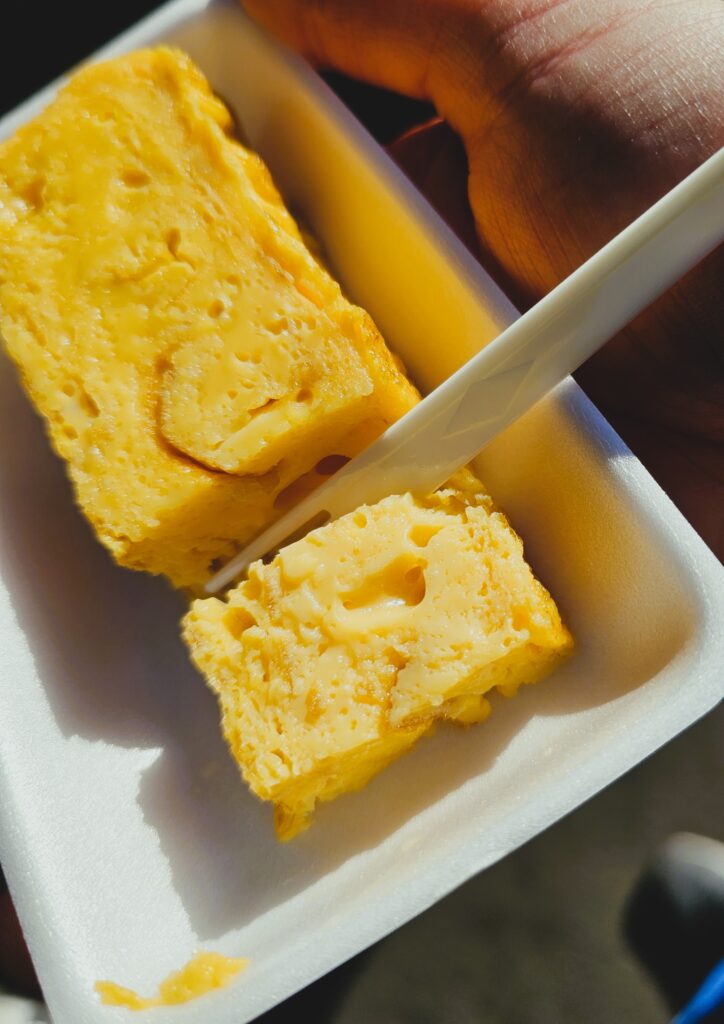
The egg is super soft, fluffy, and light. It’s also very sweet though. I was expecting it to be sweet but this was much more sweet than savory.
Grilled Wagyu
Yes, this is a fish market BUT there’s also wagyu here! There’s a few stalls that sell grilled wagyu skewers within Tsukiji. The cuts of wagyu vary and the price points reflect accordingly. They also have skewers of various seafood (octupus, squid, scallop, unagi, all 1000 yen, $7.09 USD) and even have skewers of wagyu with uni (sea urchin) spread over it. There’s a lot of skewer options!
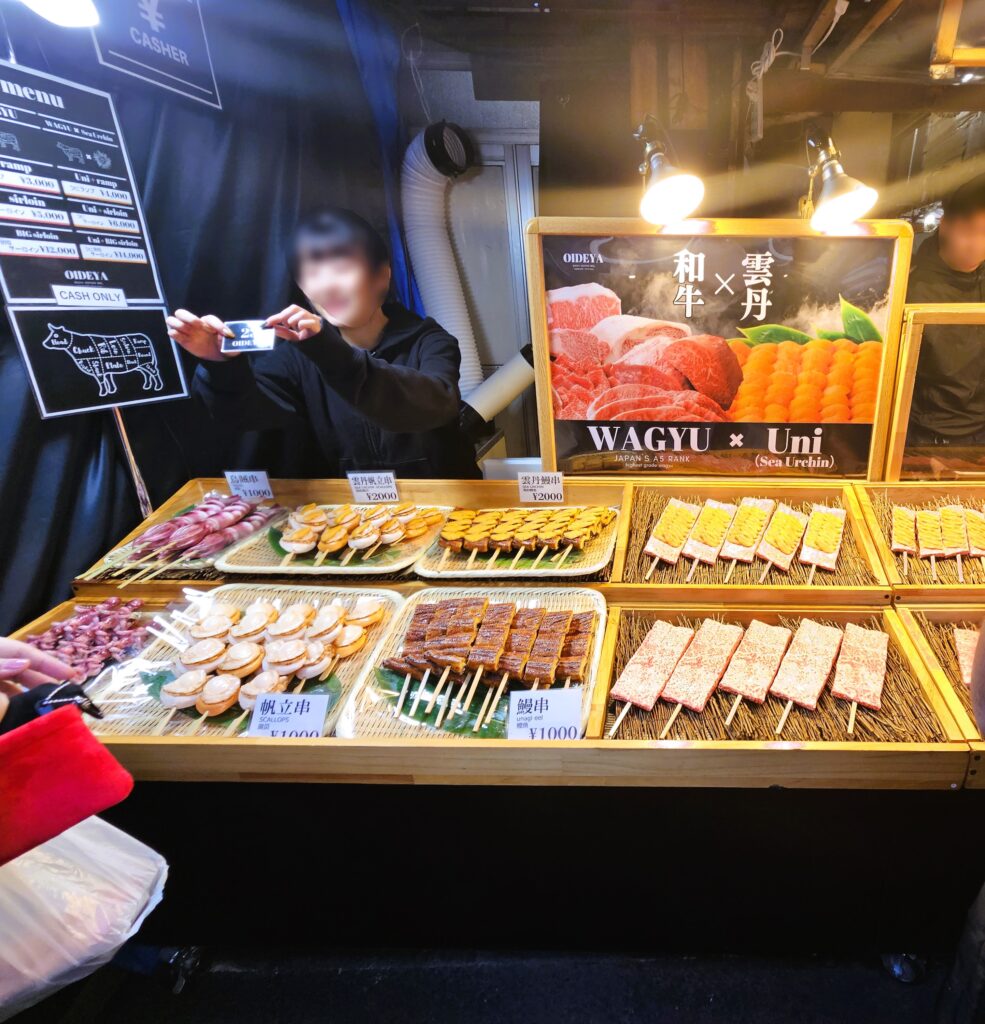
I opted for the rump wagyu, which was the cheapest cut of wagyu – for 3000 yen, $21.27 USD.
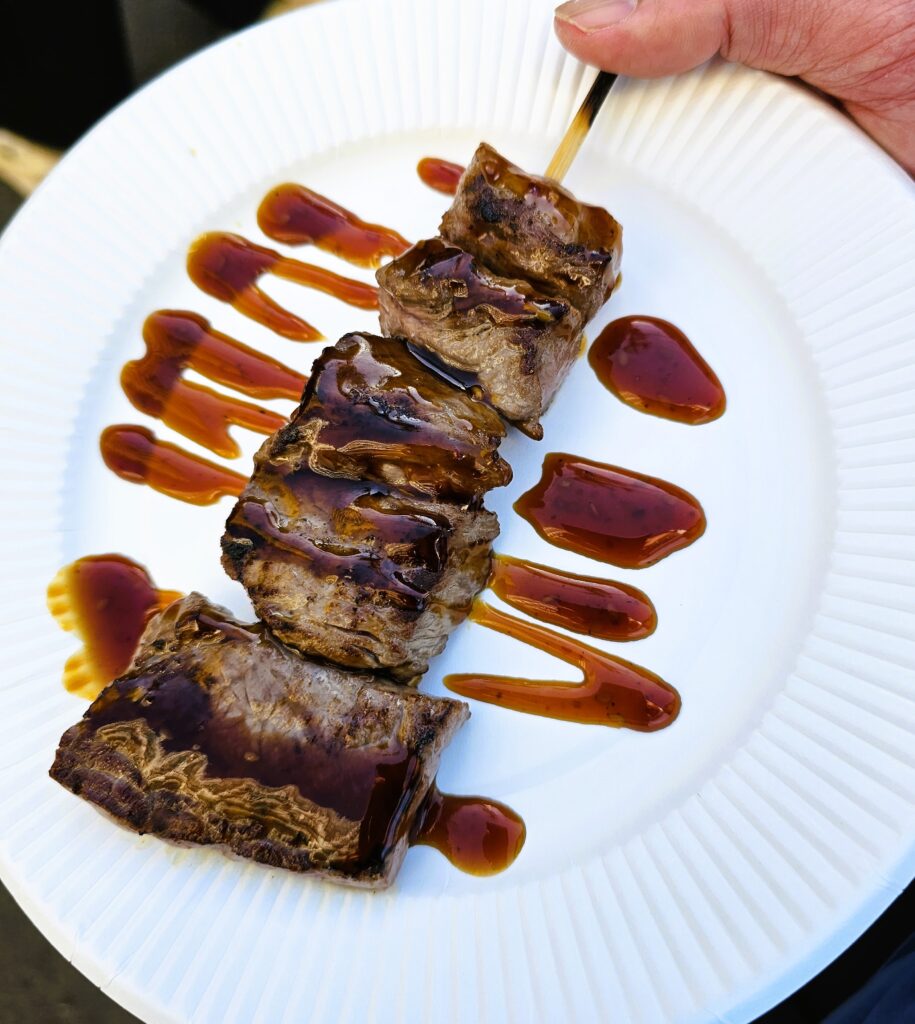

The meat is grilled medium rare. It’s lightly seasoned with just salt with a teriyaki glaze drizzled over the top. The glaze is a little sweet with a hint of spice to it. The meat just melts in your mouth. No exaggeration. You barely have to chew. The wagyu is unbelievably good!
Tuna Nigiri
No visit to Tsukiji would be complete without eating some seafood, specifically tuna. I decided to give Maguroya Kurogin a try. They specifically specialise in tuna here with various cuts served as sashimi over rice, nigiri, or sushi.
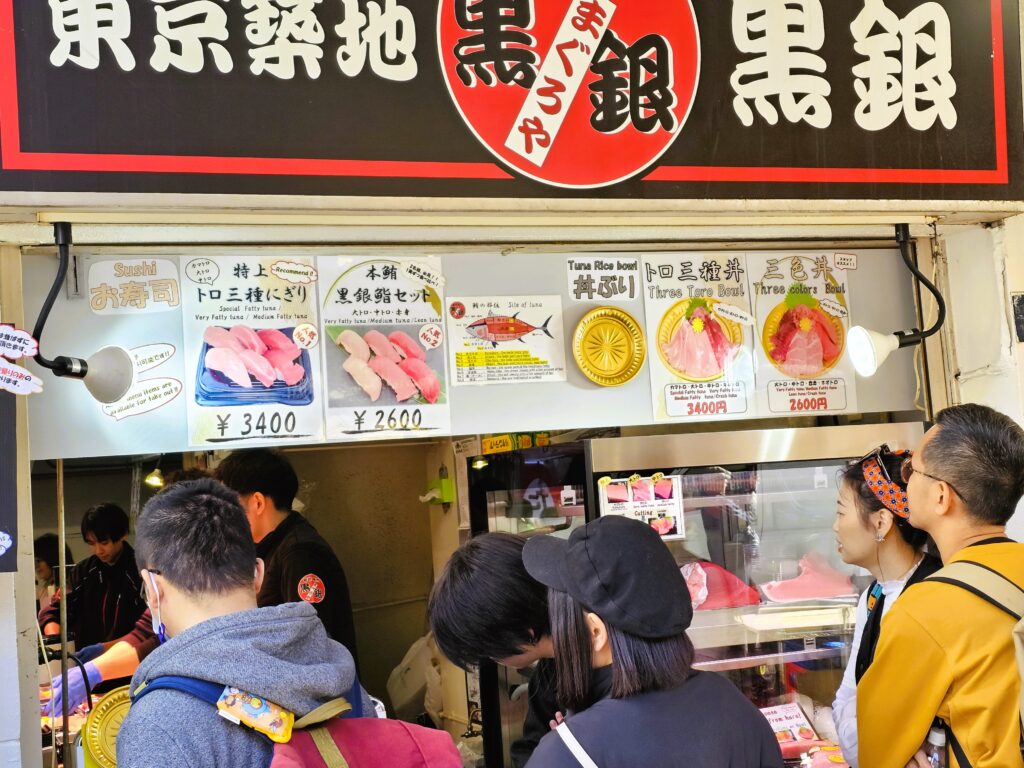
Decisions, decisions. It’s a tough choice on what to get 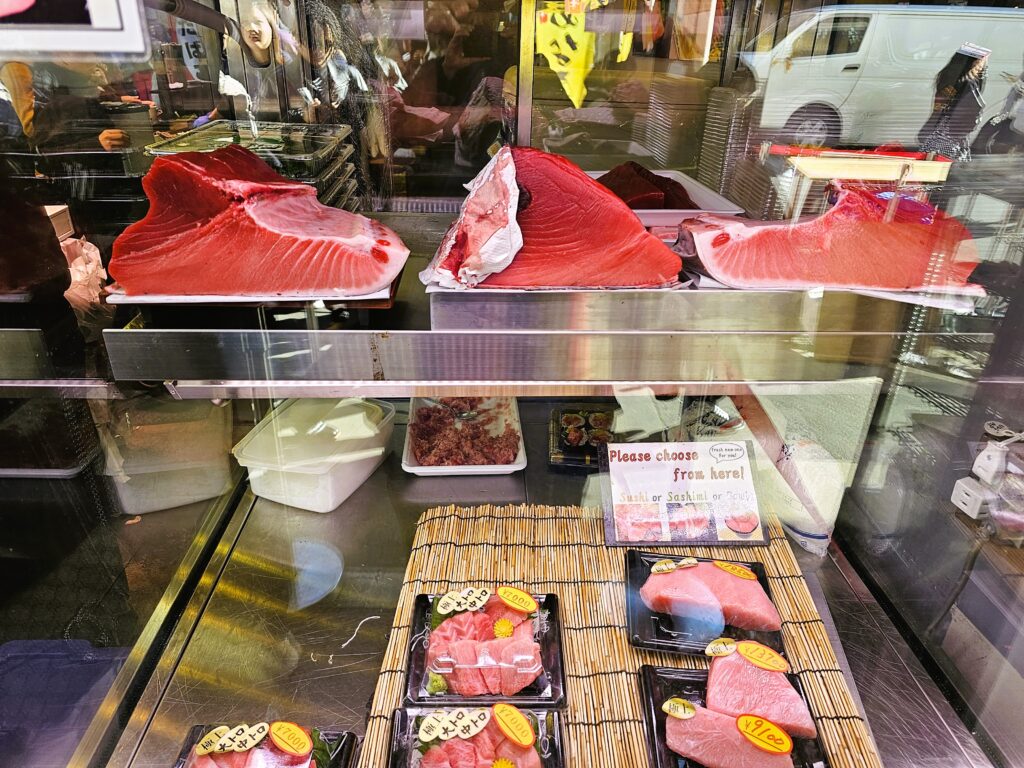
Sooo much tuna!! Look at how huge these chunks are! 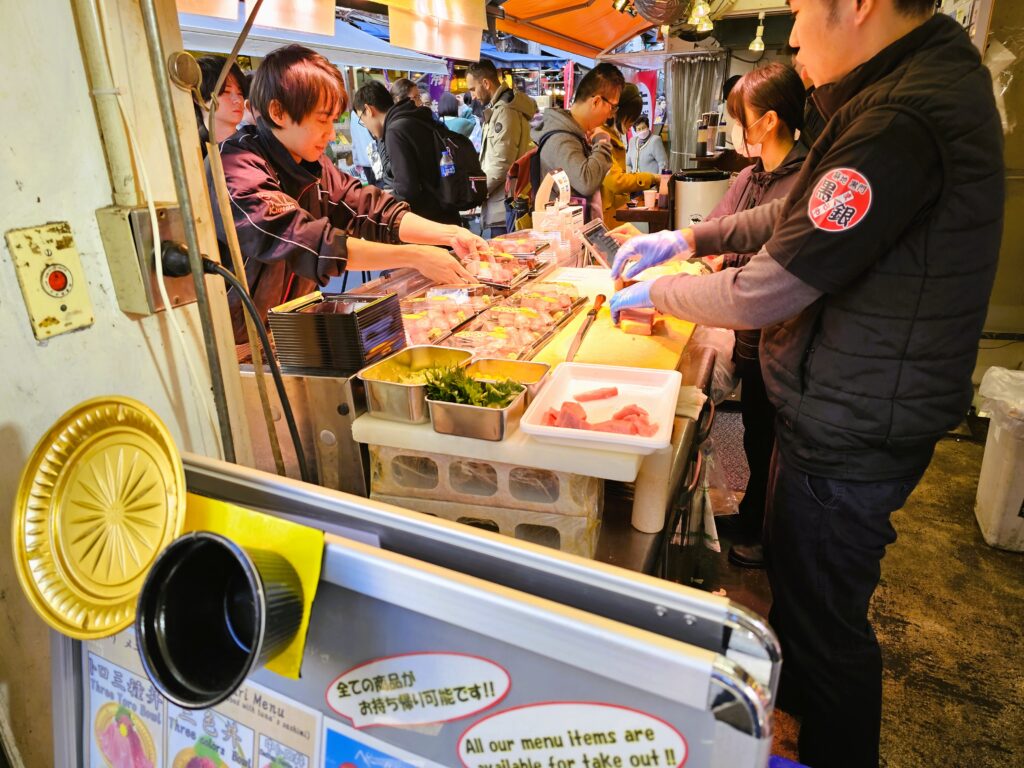
The tuna gets cut right in front of you as you wait in line 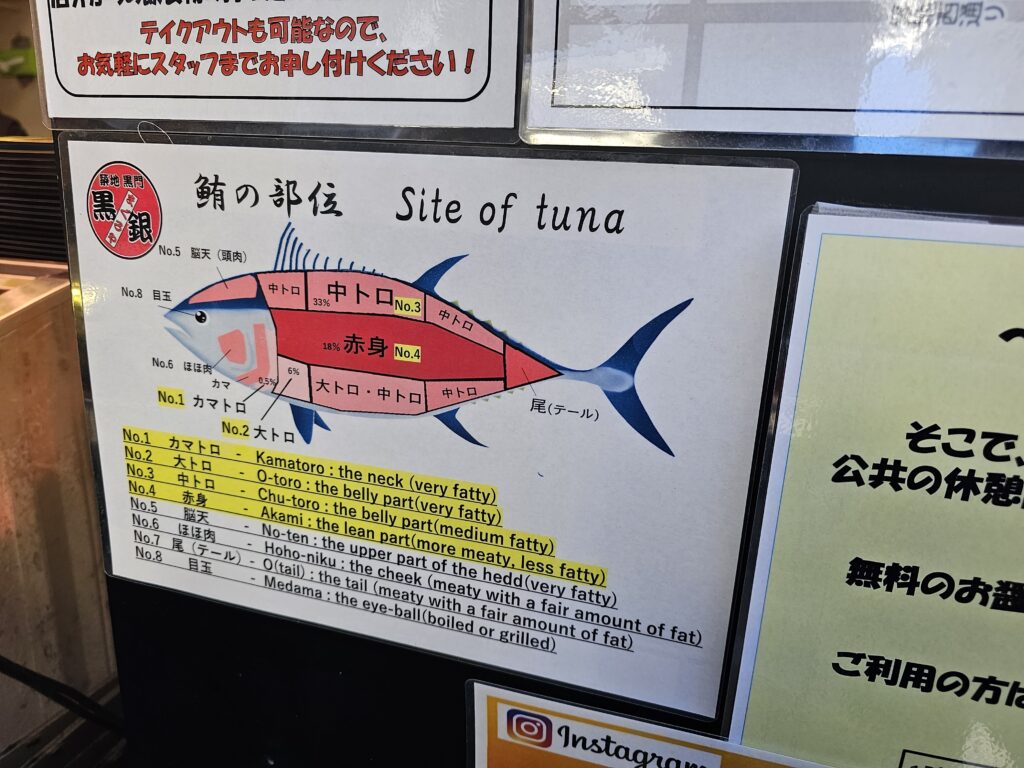
This definitely helps point out what you’re getting I went with the six pieces of nigiri that consisted of special fatty tuna, very fatty tuna, medium fatty tuna. This was 3400 yen, $24.10 USD.
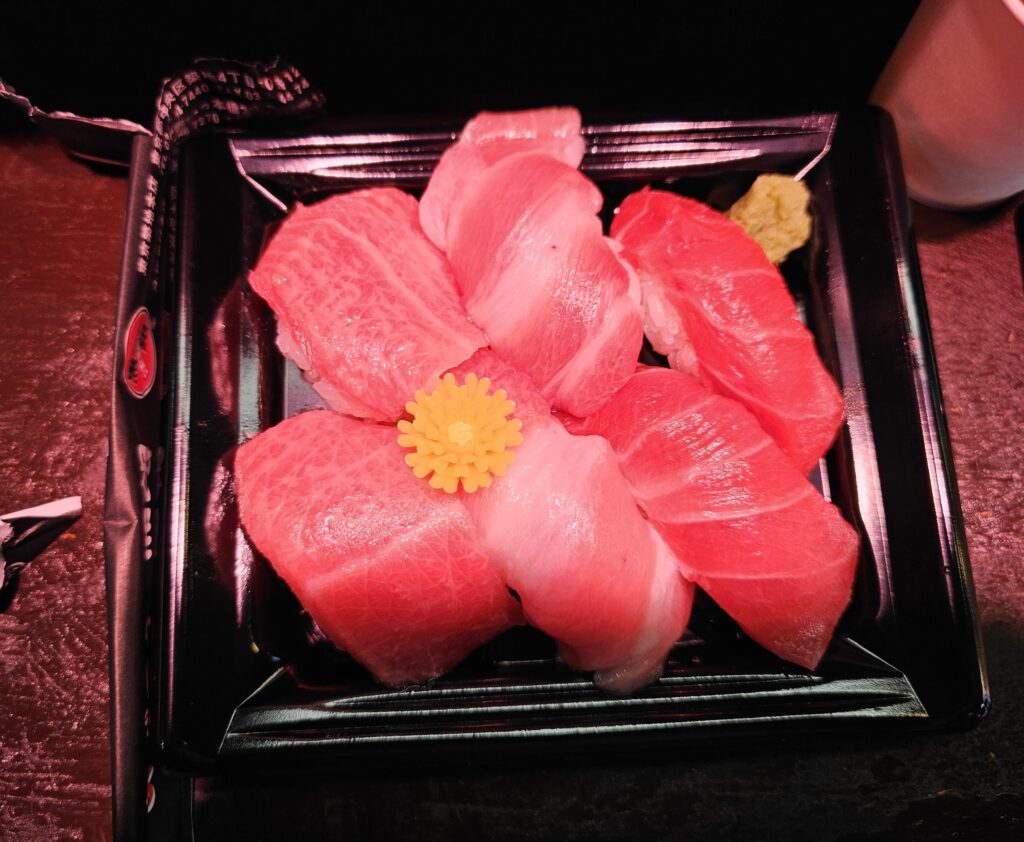
I ate this at the stall. They have a little area right next to the counter where you order at that has some tables you can stand around and a counter you can enjoy your food. They give you a cup of tea as well. The food comes out and the server goes over what nigiri is what. They speak English really well here. I believe from left to right it goes: special fatty tuna, very fatty tuna, medium fatty tuna.
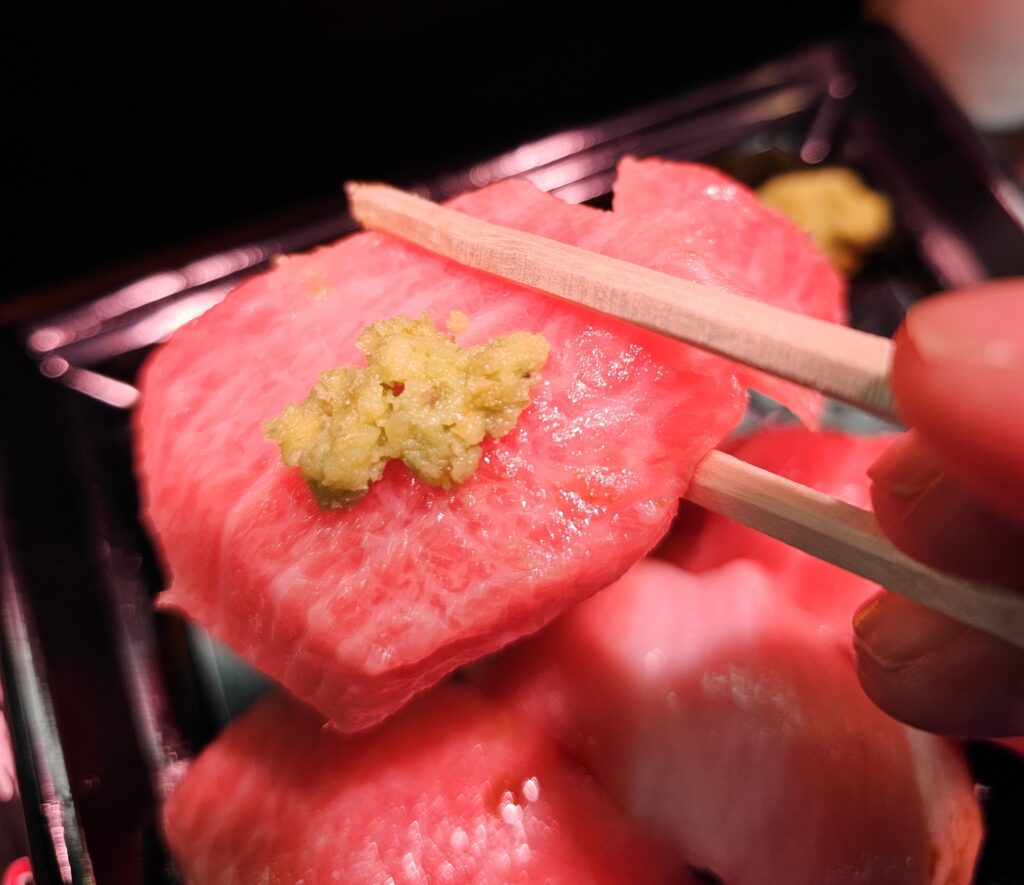
The speical fatty tuna 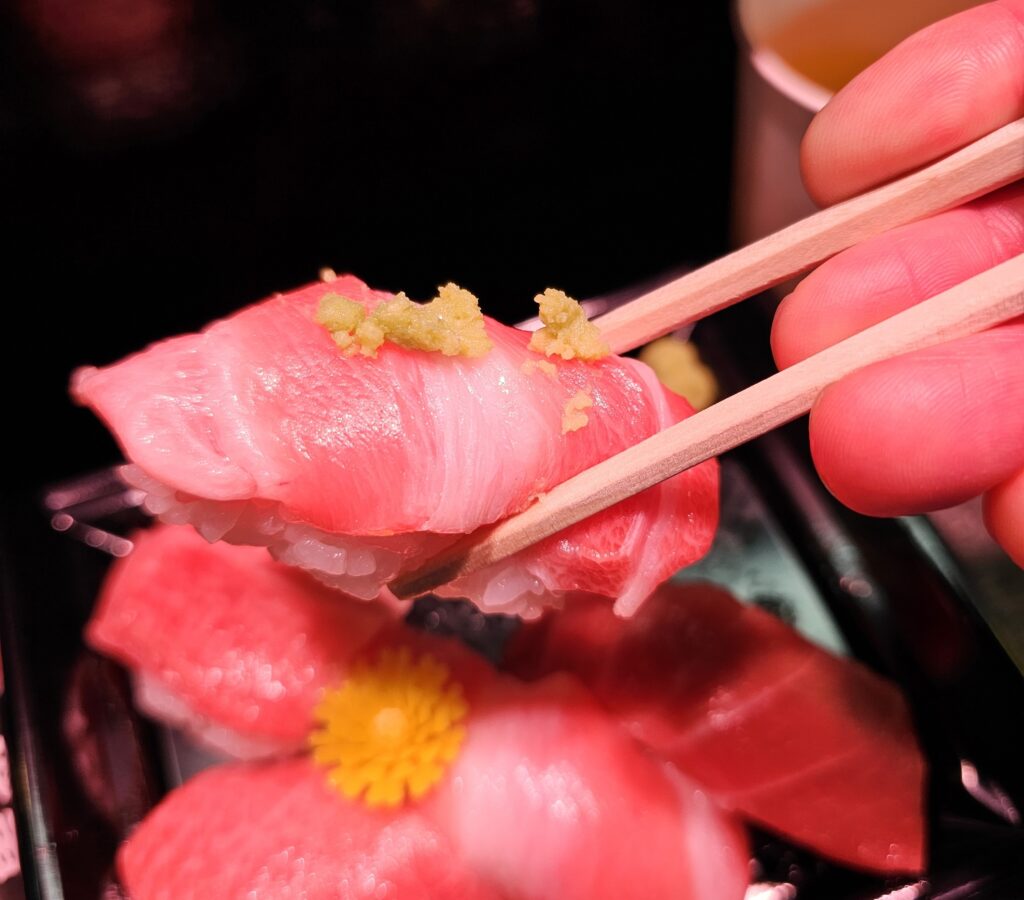
Very fatty tuna 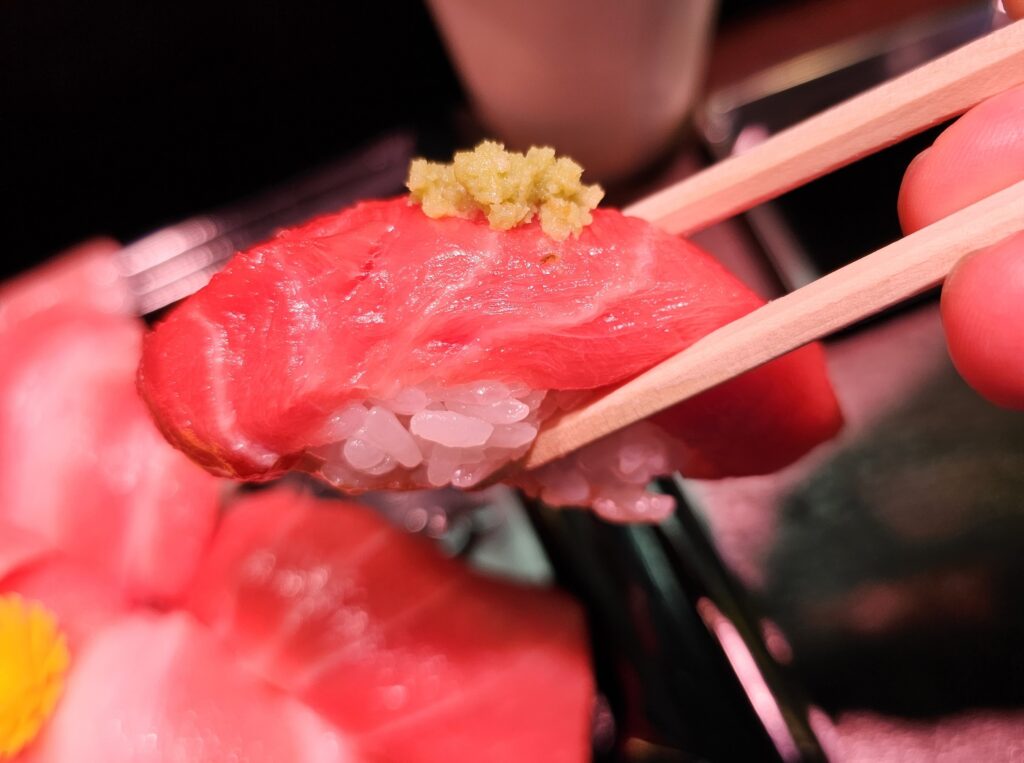
Medium fatty tuna These were all very high quality pieces of tuna. I couldn’t say that one cut was better than the others. The fattier pieces may dissolve faster but ALL of the cuts essentially dissovle in your mouth when you start eating them. The sushi rice is also high quality. Overall, these are six pieces of nigiri you won’t be disapppointed with.
Conclusion
I ate a variety of food in my time at Tsukiji and barely scratched the surface of everything that’s there. There was a lot of stuff that I wanted to get but skipped over on this trip, like grilled crab legs, and grilled scallops, and a boatload of other food. Not to mention the number of sit down restaurants that all looked delicious.
I will advise that many of the places here accept ONLY CASH, so that keep that in mind if you plan on visiting. There’s also an atm on the premises if you forget to bring some cash. It’s located in the facility which also has a public restroom.
I did have a budget in mind and how much I wanted to spend here, so that took some of the food out of the equation…this time around. Some of the restaurants had very long lines which I also avoided since there was a lot I wanted to that day. Bottom line: There’s A LOT of food here.
The total for everything I ate came out to 7,550 yen / $53.53 USD. Not too shabby! It was definitely a fun time walking around and trying multiple dishes. If you’re a foodie this is must visit place.
One final tidbit of advice: Choose your stomach space wisely!
-
Yoroyiya Ramen in Asakusa Tokyo Is Worth A Visit
Asakusa Tokyo is one of the most popular districts in Tokyo. The main attraction is Sensoji, the famous Buddhist temple. The bustling Nakamise Street, lined with shops selling souvenirs, snacks, and other wares will take you directly to the temple. Right next to Nakamise Street there’s the Shin-Nakamise Shopping Street which offers restaurants and more shopping. This is where I found the excellent Yoroyiya Ramen in Asakusa, Tokyo.
It’s easy to navigate the menu here since it caters to tourists and has an English menu. Like most ramen places, it’s smaller place with limited seating at the counter. There’s a few options to choose from.
I had to go with the Deluxe Ramen (1300 yen, $8.81 USD) which included roast pork, twin york egg, and bamboo shoots. It just looked too good! I was also starving since I had just landed and a nice bowl of ramen sounded like the perfect meal.
The ramen had a shoyu (soy sauce) broth base. The broth was light but had a deep flavor to it due to the inclusion of dashi. This added a bit of fishy aftertaste with every slurp of the broth. It wasn’t overwhelming at all, but really added to the shoyu base flavor.
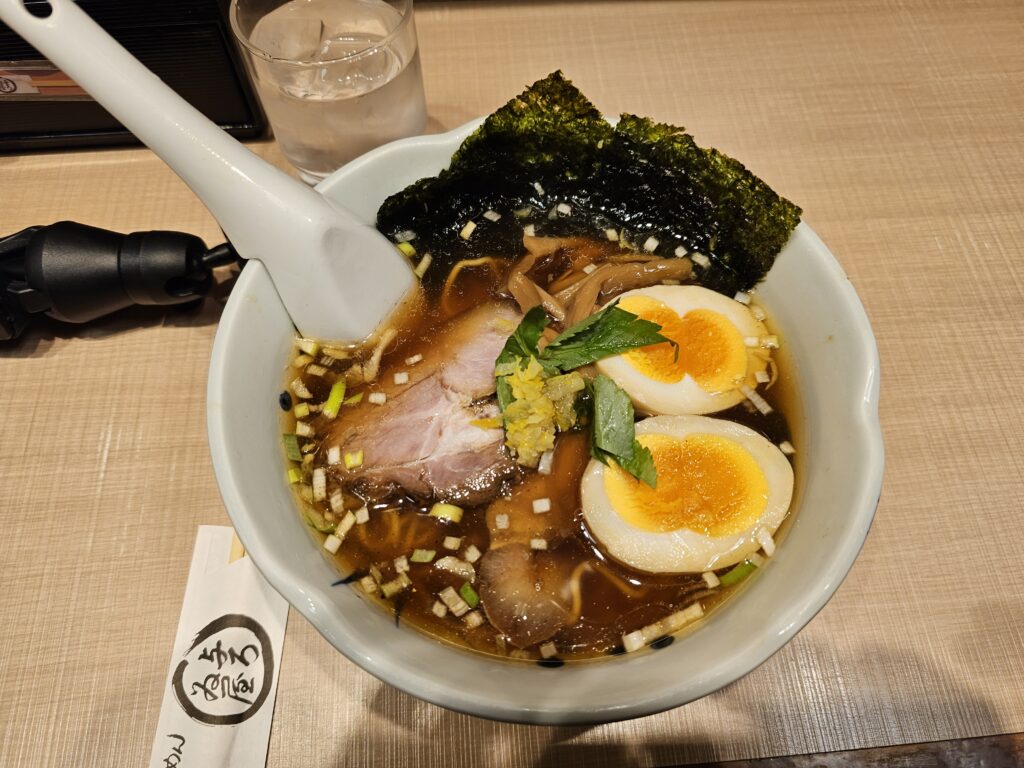
The noodles were very fresh and al dente. They were thinner and curlier ramen noodles. These were quite good.
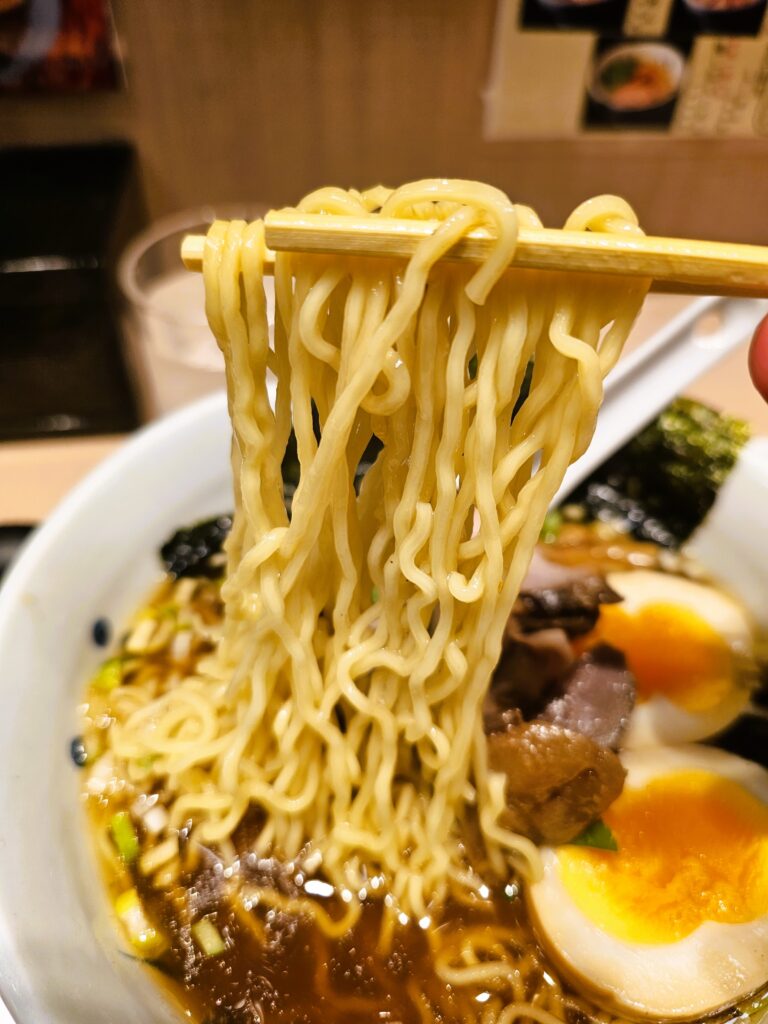
The pork was seasoned perfectly and was some of the most tender pork chashu I’ve ever had. It literally was falling apart as I picked it up. It was THAT tender. Even the egg was good. It wasn’t quite hard boiled all the way through. There was still a little yolky parts to it which added even more depth and flavor to the ramen.
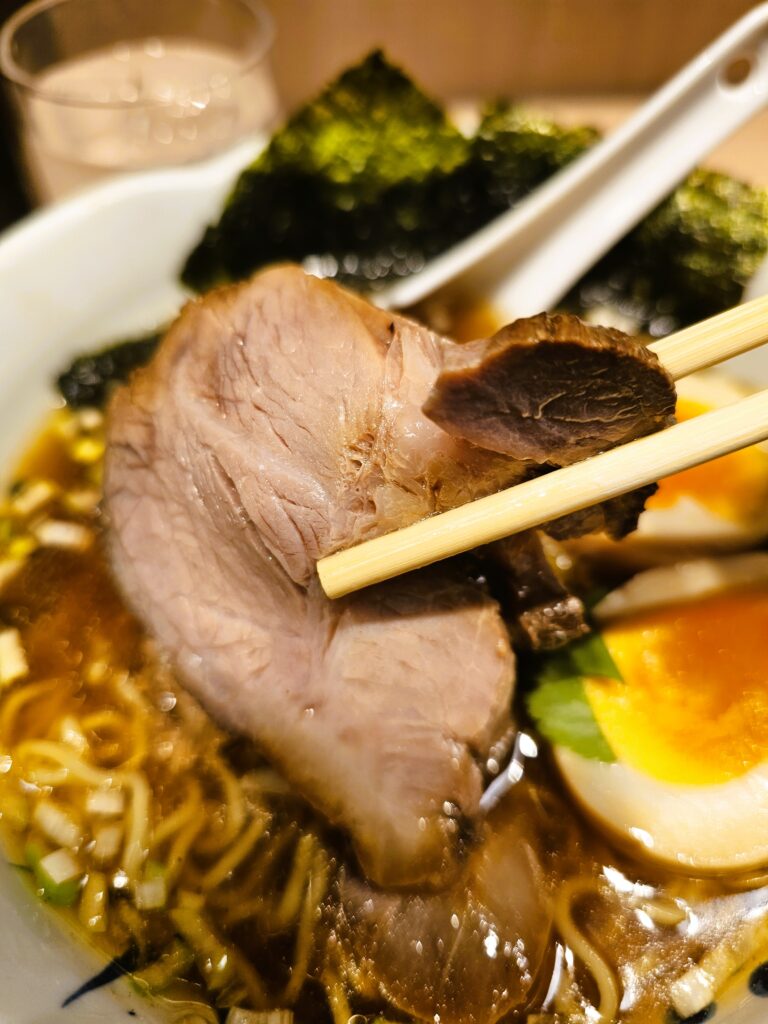
This Yoroyiya was also famous for their chicken gyoza’s, so I had to try those as well. You get three pieces for 400 yen ($2.71 USD), a good deal! Pan fried, the outside of the gyozas had a nice browned exterior. They came with a shoyu dipping sauce. The skins on these dumplings along with the filling tasted quite fresh. There’s ground chicken, green onion, and bits of glass noodle mixed into the filling. There’s some seasoning in there that gave it a hint of sweetness.
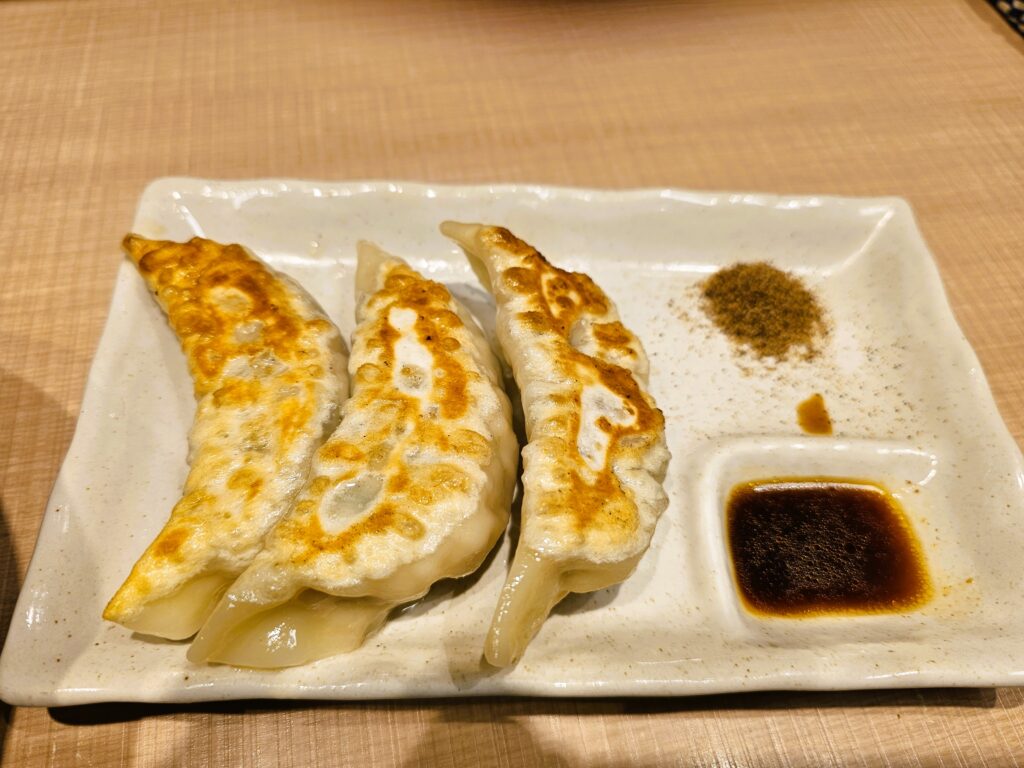
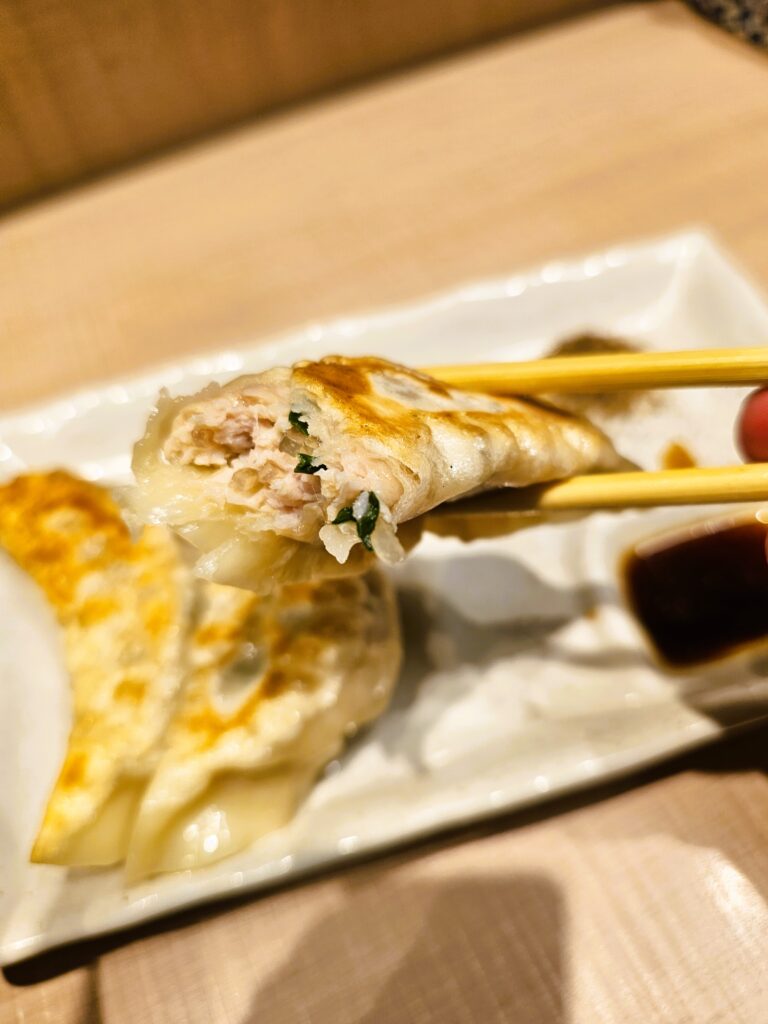
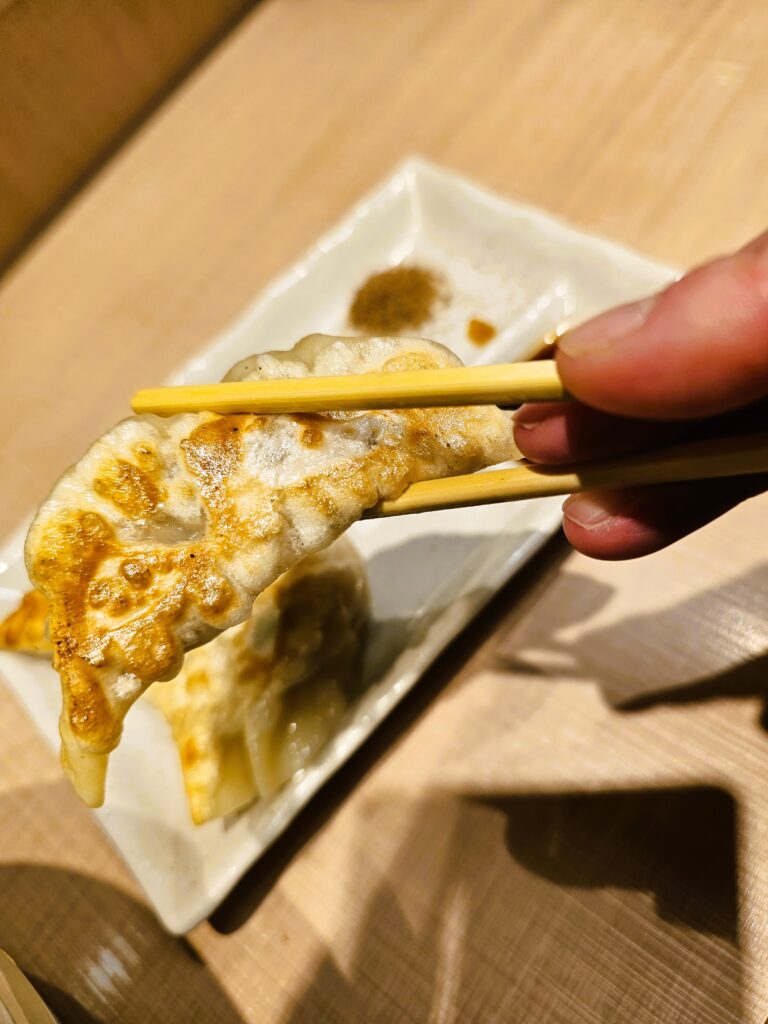
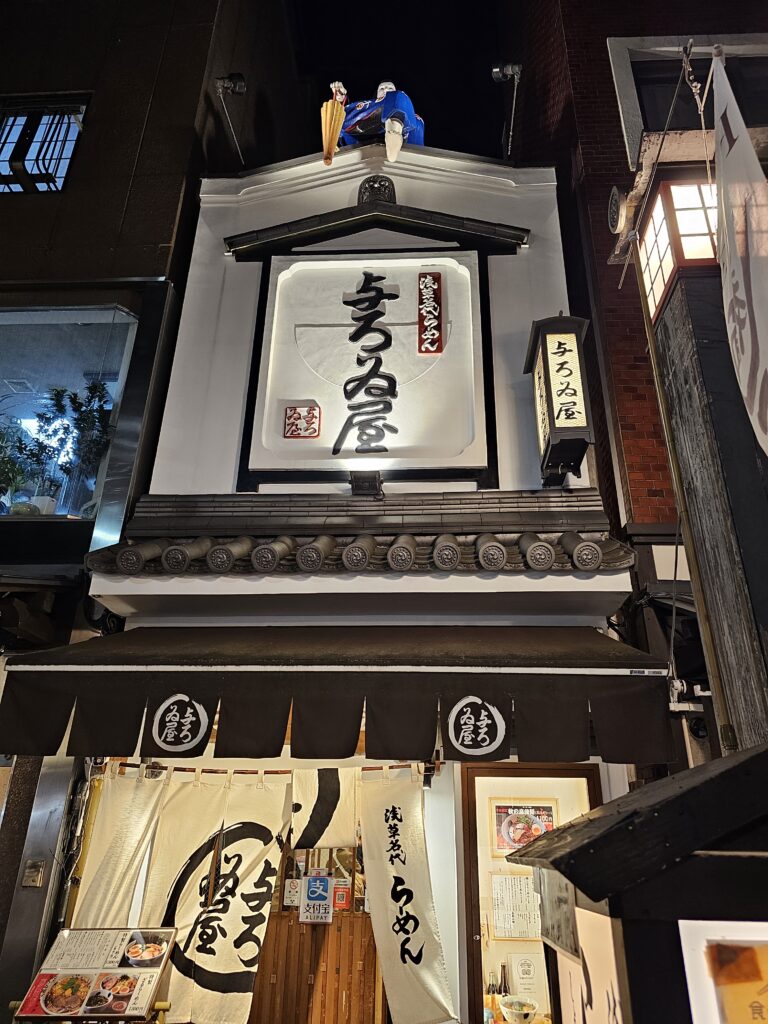
Yoroyiya Ramen 
Overall, a very delicious meal in a small ramen restaurant near Senso-ji temple in Asakusa Tokyo. It’s a perfect place to stop off after visiting the temple or on the way there.
Yoroiya was a definite stand out due to it’s overall delicious bowl of ramen. The broth, the pork, the egg, were all outstanding. This was a bowl of ramen where everything in it was excellent. I can’t say that for every bowl I’ve encounted.
Yoroiya Ramen
1 Chome-36-7 Asakusa, Taito City, Tokyo 111-0032, Japan
-
Come Visit This Tokyo Brewery In An Old Train Station
Hitachino Brewing Lab
If you’re looking for a break from the bright lights and bustling nature of Akihabara, Hitachino Brewing Lab is a great place to relax with beer and relax for a bit.
About a 15 minute walk from Akihabara, it’s located in the old Manseibashi train station, across the river. Hitachino is a great place to sample fresh beers and grab a quick snack with an enjoyable river view.
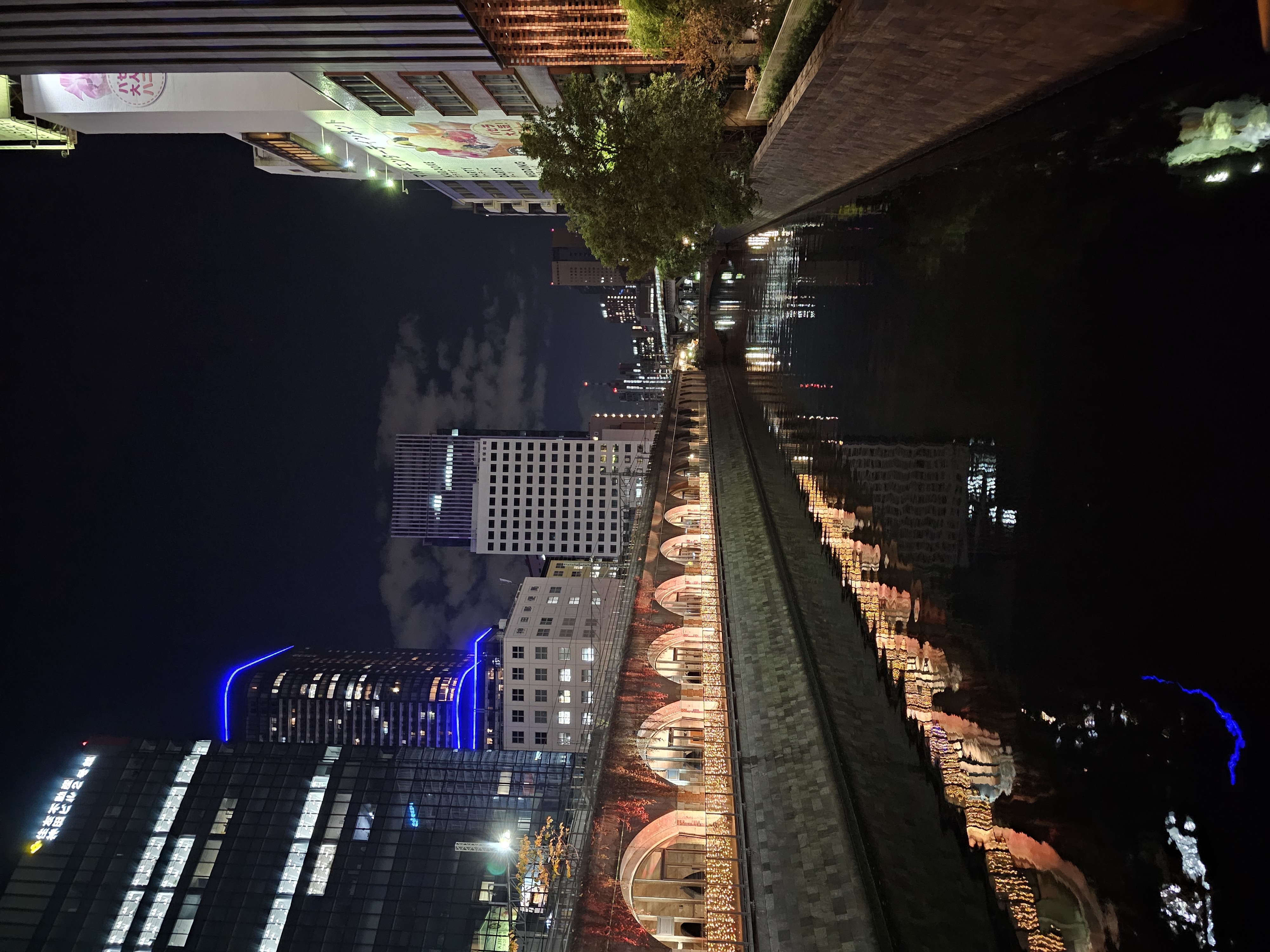
The river next to Hitachino Brewing Lab I came here around 7-8pm on a Saturday night prior to heading over to Akihabara. It did take me a little bit of time to find. This seemed to be one of those places that Google Maps had a tough time providing proper directions to so it was a little confusing.
I ended up walking through the old station which is pretty cool in itself, and I’d recommend walking around a bit if you visit Hitachino.
It’s a very tiny spot with a handful of tables and countertop seating inside the restaurant and some additional tables outside as well.
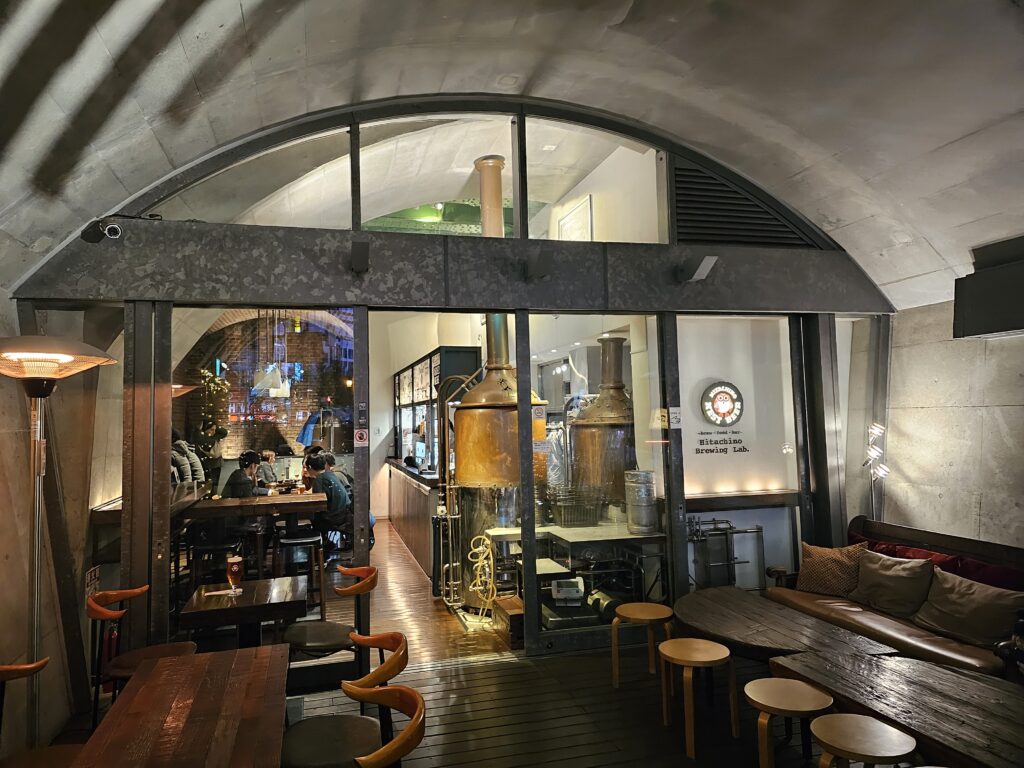
The front of Hitachino Brewing Lab The Experience
They have a nice selection of beers on draft that are brewed in house. There’s also a good selection of snacks to enjoy and a couple of sandwiches to choose from if you’re hungrier. It’s a cozy, quiet little spot for sure. I went on a Saturday night and it was very chill.
I ended up getting the pale ale along with a mackeral sandwich (1880 yen, $12.81 USD) and later got an IPA (980 yen, $6.80).

I’d never heard of a mackeral sandwich before but reviews on it were solid and I was hungry, so figured I’d give it a try! It was a very simple sandwich. There were pieces of grilled mackeral, sauerkraut, carrot, whole seed mustard, on toasted wheat bread.
You wouldn’t necessarily think that those ingredients thrown into a sandwich would very good. It does afterall sound pretty unusual. But it’s actually quite tasty. The flavor of the salty grilled mackeral and sourness of the sauerkraut really contrast and it works out. Who would have thought?
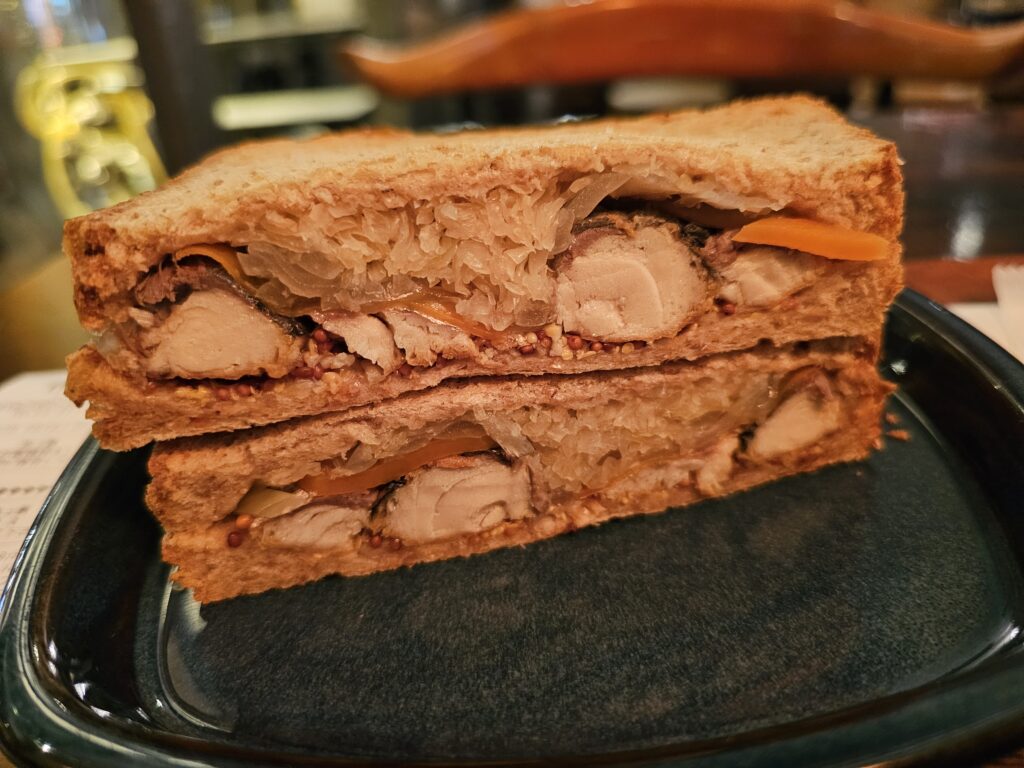
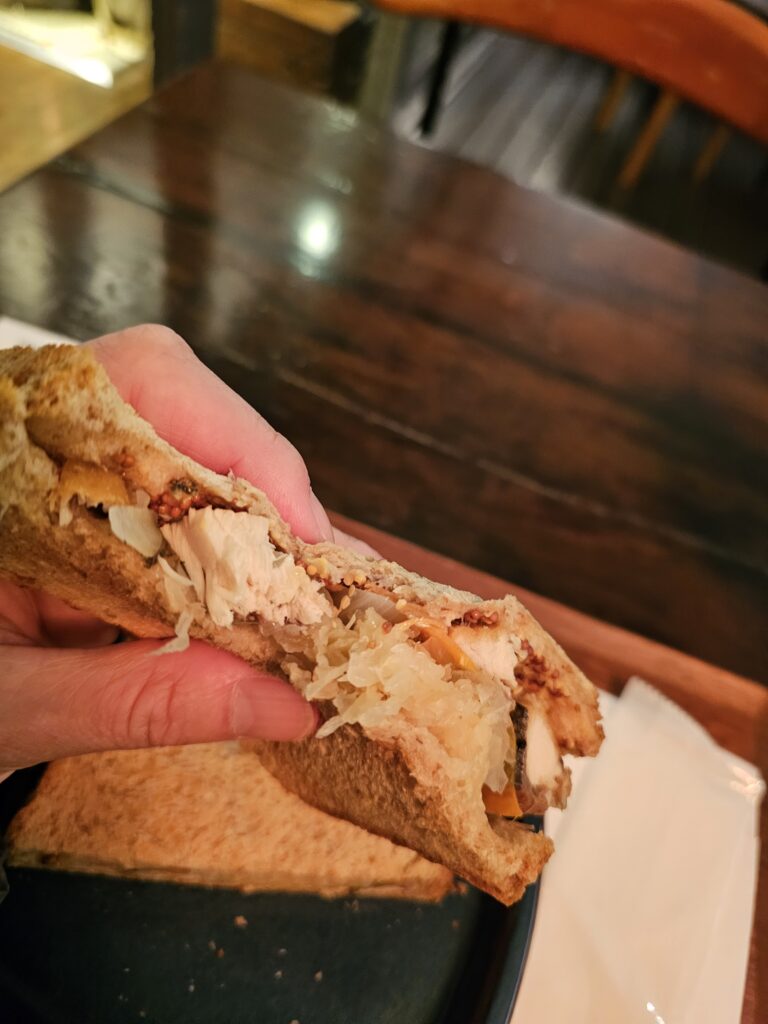
It looks like and tastes like a sandwich one would make at home, which fits in perfectly with the overall vibe of Hitachino Brewing Lab. It also goes great with a beer!
Is It Worth A Visit?
If you’re a beer fan and looking to take a break from all the sightseeing and have some good beers and snacks than Hitachino is certainly worth it if you’re visiting Akihabara.
You can see a part of town that visitors don’t necessarily wander over to.
The renovated train station is worth a look around as well. It has some shops and other restaurants located there but most seemed to be closed by the time I arrived.
N1 1-25-4, Kandasudacho, Chiyoda-ku, Tokyo
TEL.03-3254-3434[BUSINESS HOURS]
From Monday to Saturday from 11:00 to 22:00
Sunday and Holidays from 11:00~21:00 -
teamLab Planets Is A Must See Attraction In Tokyo
What Exactly Is teamLab Planets?
There’s a LOT to see and explore within Tokyo. Without a doubt it will be difficult to fit everything in on your first visit. However, one attraction I HIGHLY recommend working in to any trip to Tokyo is teamLab Planets.
teamLab Planets is a digital art museum located in the Toyosu district that includes nine highly immersive exhibits that are a sensory delight.
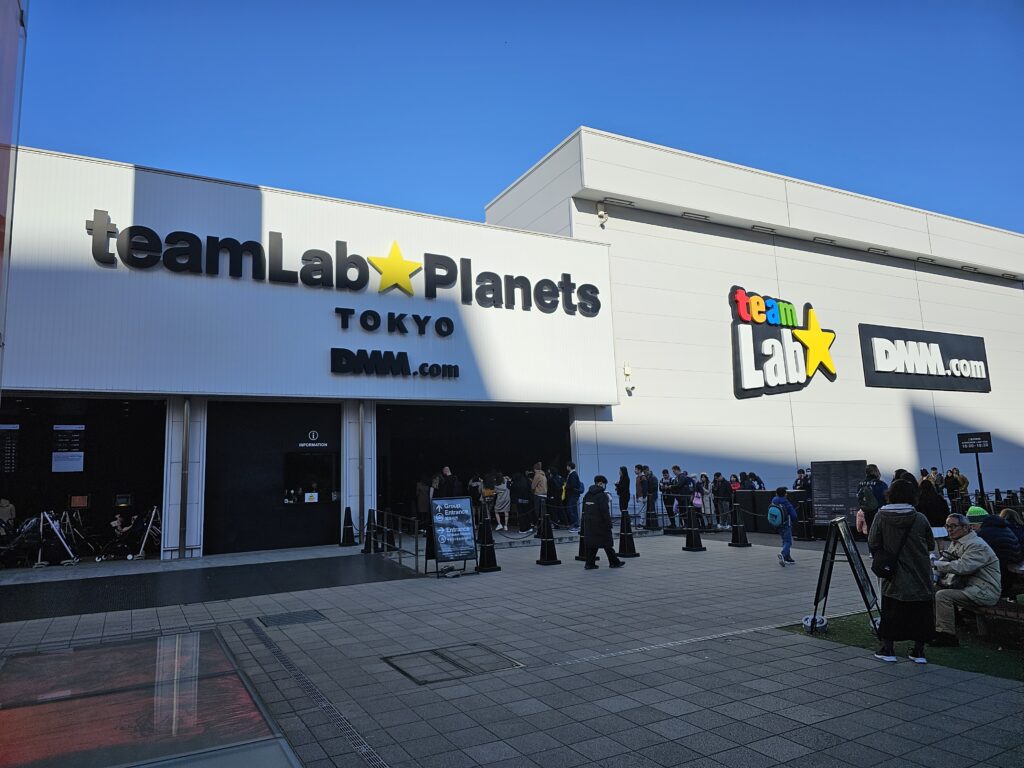
You’ve most likely seen pictures of it on IG. This place was destined to be an Instagram darling. But nothing can quite prepare you for seeing it and experiencing it yourself. It truly is a mesmorizing experience, regardless of age.
What To Know Prior To Going
You can either be purchase tickets online or use onsite vending machines. I’d advise to purchase ahead of time, to be able to select an available time of your choosing. Time slots, generally in the morning, can sell out.
The good thing is the museum is open from 9:00 – 22:00 and tickets are sold in 30 minute intervals. So there’s plenty of timeframes available. That’s quite late for a museum which works out well since
Below, you will find the listed pricing. Prices do get slightly more expensive on the weekend, so that’s something to consider if planning on going.
Adults (18 and over) 3,800 Yen / $26.23 USD (4,200 Yen / $28.99 on wknds) Junior High School / High School 2,300 Yen /$15.88 (2,800 Yen /$19.33) Children (4-12) 1,300 Yen / $8.97 (1,500 Yen / $10.35) Under 3 Free Disability Discount 1,900 Yen / $13.12 (2,100 Yen /$14.50) - You will be walking barefoot through this art museum. When first entering the museum, they will usher you to a large locker room where you can store your shoes and belongings.
- There will be certain areas where there’s shin / knee deep water so you’ll want to either wear shorts or pants that you can roll up to your knees. They do supply shorts, if needed, for free and there’s a changing room.
The Experience
The below aren’t all of the exhibits, just a few. The others I found to be a little difficult to get decent photos of due to the movement or there just being a boatload of people. Yes, there will be A LOT of people, which should be expected.
I won’t spend too much time on the experience or the actual exhibits since pictures and words can’t really do the actual experience justice. Walking through the first exhibit really sets the tone and builds excitement for the rest of the museum and it doesn’t disappoint!
It will take a couple of hours (largely dependant on how long you want to linger to enjoy each exhibit) to walk through the exhibit.
The “garden” exhibit is separate from the rest of the exhibits and you’ll only get three minutes to enjoy it. I wish it were longer but get why it’s only three minutes. It’s quite mesmerizing and peaceful and people would certainly linger for extended periods of time. It’s a fitting finale to a truly memorable exhibit that you won’t soon forget.
